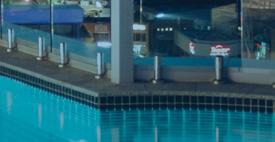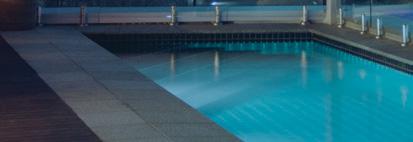TRAVEL GUIDE LAKE COMO
The alluring seductress of Lombardy
TRAVEL GUIDE PRAGUE
The city of a hundred spires that never fails to inspire
TRA VEL BUSIN ESS
TAOS SKI VALLEY
Inside the world’s first B Corp ski resort

TRAVEL GUIDE LAKE COMO
The alluring seductress of Lombardy
TRAVEL GUIDE PRAGUE
The city of a hundred spires that never fails to inspire
TRA VEL BUSIN ESS
TAOS SKI VALLEY
Inside the world’s first B Corp ski resort

TRAVEL GUIDE

The metropolis where European charm meets North American attitude
Brent Hill , CEO of Tourism Fiji, introduces us to the island where happiness comes naturally

For over a decade, our portfolio of in-house magazines has been lovingly produced, printed, and distributed to our esteemed subscribers across the globe from our headquarters in the UK.



But now we are moving with the times, adopting a digital-first approach by producing online-only publications. A major factor in this decision is to minimise our environmental footprint, reducing the carbon emissions involved in the logistics of print magazine distribution and the resources required therein.





“We always planned that when our digital subscribers consistently accounted for 85% of our total magazine subscribers, we would cease printing our publications in-line with our environmental and sustainability goals.”
–

Going forward, we will provide print orders of any magazine in-line with the requests of our featured companies, subscribers, and conference & expo partners. Please get in touch for a print-on-demand quote or visit our website to find out more.

Ben Weaver, CEO, Outlook Publishing Ltd
Editorial Director: Phoebe Harper phoebe.harper@outlookpublishing.com
Senior Editor: Marcus Kääpä marcus.kaapa@outlookpublishing.com
Editor: Jack Salter jack.salter@outlookpublishing.com
Editor: Lucy Pilgrim lucy.pilgrim@outlookpublishing.com
Junior Editor: Ed Budds ed.budds@outlookpublishing.com
Junior Editor: Rachel Carr rachel.carr@outlookpublishing.com
PRODUCTION
Production Director: Stephen Giles steve.giles@outlookpublishing.com
Senior Designer: Devon Collins devon.collins@outlookpublishing.com
Designer: Sophs Forte sophs.forte@outlookpublishing.com
Junior Designer: Louisa Martin louisa.martin@outlookpublishing.com
Production Assistant: Megan Cooke megan.cooke@outlookpublishing.com

Digital Marketing Manager: Fox Tucker fox.tucker@outlookpublishing.com
Social Media Executive: Bria Clarke bria.clarke@outlookpublishing.com
Web Editor: Oliver Shrouder oliver.shrouder@outlookpublishing.com
BUSINESS
Chief Executive Officer: Ben Weaver ben.weaver@outlookpublishing.com

Managing Director: James Mitchell james.mitchell@outlookpublishing.com
Sales Director: Nick Norris nick.norris@outlookpublishing.com

Commercial Director: Joshua Mann joshua.mann@outlookpublishing.com
Business Development Director: Thomas Arnold thomas.arnold@outlookpublishing.com
Training & Development Manager: Marvin Iseghehi marvin.iseghehi@outlookpublishing.com
TRAVEL GUIDES
Head of Projects: Deane Anderton deane.anderton@outlookpublishing.com
Project Manager: Alfie Wilson alfie.wilson@outlookpublishing.com
Project Manager: Dave West dave.west@outlookpublishing.com
Project Manager: Jordan Sibley jordan.sibley@outlookpublishing.com
Project Manager: Krisha Canlas krisha.canlas@outlookpublishing.com
ADMINISTRATION
Finance Director: Suzanne Welsh suzanne.welsh@outlookpublishing.com
Finance Assistant: Suzie Kittle suzie.kittle@outlookpublishing.com
Finance Assistant: Victoria McAllister victoria.mcallister@outlookpublishing.com
CONTACT
Outlook Travel magazine Norvic House, 29-33 Chapelfield Road
Norwich, NR2 1RP, United Kingdom
Sales: +44 (0) 1603 363631
Editorial: +44 (0) 1603 363655
SUBSCRIPTIONS Tel: +44 (0) 1603 363655 phoebe.harper@outlookpublishing.com www.outlooktravelmag.com
Twitter: @outlooktravel1
Instagram: www.instagram.com/outlooktravelmagazine
Linkedin: www.linkedin.com/showcase/outlook-travel-magazine Facebook: facebook.com/outlooktravelmag
As summer sweeps across the Northern Hemisphere, welcome to our 12th edition of Outlook Travel magazine. In this issue, our cover star is the colourful, cosmopolitan metropolis of Montréal - Canada’s effortlessly cool second largest city where, with an ongoing calendar of festivals, there is something to celebrate all year round.


Combining European charm with North American attitude, we speak with the CEO of Tourisme Montréal, Yves Lalumière, for some expert insight into a truly international city known for its vibrant culinary and arts scenes.
“We call ourselves the cultural capital of Canada,” he tells us.

Speaking of European charm, you will be spoilt for choice with our selection of travel guides, as we lift the lid on some of the region’s most popular short break destinations – whether it’s the cultural splendour of Prague, the historic Hungarian capital of Budapest, or the quintessential Italian getaway of Lake Como, whose sparkling, idyllic shores are sure to lure any traveller. In each destination, we speak with the local tourism experts on the ground to bring you the most reliable insight.
With such a cornucopia of wonders to be explored this summer season, our Sustainability Stories offers a reminder of how we, as tourists, can use our behaviours and consumer habits to influence the tourism industry for the better by travelling more responsibly. As Outlook Travel attends the premiere of feature-length documentary, The Last Tourist, we spotlight the film produced by the Founder of community tourism pioneer, G Adventures, as essential travel viewing which is streaming now across the UK and Ireland.
Finally, in Northern New Mexico, we highlight the harmony that can exist between tourist attractions and sustainability with our Travel Business, Taos Ski Valley. One of Fast Company’s World’s Most Innovative Companies to watch in 2023, read the feature to find out more about the world’s first (and only) B Corp certified ski resort.
Enjoy your read and happy travels!


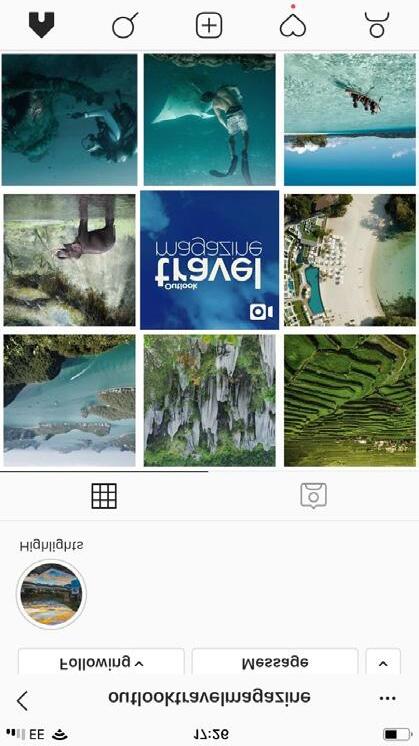





The
AMERICAS
Around
An
From
The
106 BUDAPEST
Culturally connect with the Hungarian capital OCEANIA



120 FIJI
Discovering bountiful island bliss
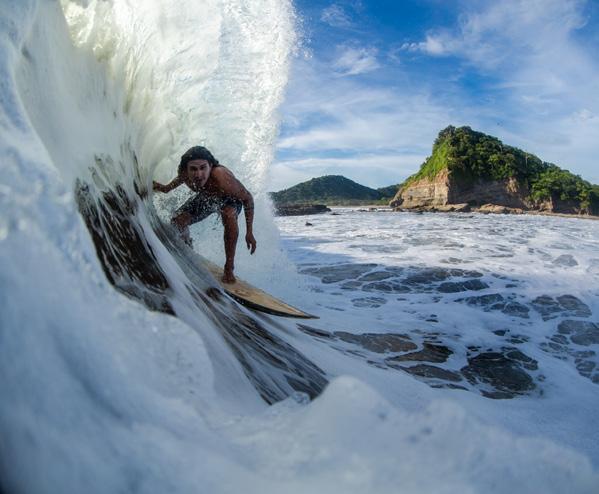
134
138 LOCATION INSPIRATION: SOUTH DEVON
Coastal escapism on the English Riviera
DEEP SLEEP HAS taken on a whole new meaning with the opening of a hotel 1,375 feet below the mountains of Snowdonia in Wales.

Said to be the deepest hotel in the world, Deep Sleep is located within a chamber of the abandoned Cwmorthin slate mine and is only accessible via a “steep and challenging” route through the old workings, with the descent taking around an hour. Upon arrival, guests are welcomed with a warm drink and an expedition-style meal on the hotel’s picnic table.
FURTHER RISES IN passenger numbers have been reported by Wizz Air and Ryanair as recovery from the impact of the COVID-19 pandemic continues.

A record 17 million passengers were carried by Ryanair in May, surpassing its previous high for a single month of 16.9 million flyers set in August 2022. The figure also represents an increase of just over
HEATHROW CURRENTLY HAS more daily flights than ever before between the UK and the US, as airlines pivot away from European and East Asian markets towards North Atlantic routes.

1.6 million Heathrow passengers flew across the North Atlantic in May
10 percent for the Irish budget airline compared to the same period last year, when 15.4 million passengers travelled with Ryanair. Just over five million people flew with Hungarian carrier Wizz Air in May, a rise of 22.1 percent compared to last year. Both sets of figures further suggest that budget airlines are bouncing back from the COVID-19 lockdowns and travel restrictions.
Comprising four private twin-bed cabins and a romantic grotto room with a double bed, this off-grid remote-camp adventure experience is run by outdoor activity organiser Go Below. Stays at Deep Sleep cost up to £550 and are only available on Saturday nights.
alone, whilst one in four passengers flying between the US and Europe passed through the UK’s busiest airport.
There are now 248 daily flights to and from Heathrow connecting the UK to 31 US destinations. As well as having more flights to New York, Heathrow is also the only European hub with a direct flight to Cincinnati. The benefits that this brings through trade and tourism demonstrate the critical importance of Heathrow as the UK’s gateway to the US and the globe.
THE UEFA CHAMPIONS League final held in Istanbul has provided a huge boost to the city’s hotels and marks a milestone for the local tourism industry.
Occupancy rates at Istanbul’s hotels climbed over 90 percent and room prices almost doubled thanks to the recent showpiece event at
the Atatürk Olympic Stadium, which saw thousands of supporters flock to the city and contribute to the local economy.

The final presented an invaluable marketing opportunity for Istanbul, which proved itself as a first-class holiday destination. It was also a welcome morale boost for Istanbul after a devastating earthquake in February heavily impacted the tourism industry in Turkey’s largest city.
AUSTRALIAN AIRLINE QANTAS has issued its new style guidelines for employee uniforms, which have relaxed gender-based rules for males and females.
Male employees are now allowed to wear makeup and have long hair, whilst females are no longer required to wear makeup and heels while on duty.
The updated guidelines, which also apply to Qantas’ budget airline Jetstar, have been described as a “big win for workers” and follow the relaxation of rules by rival airlines such as Virgin Atlantic, who have adopted genderneutral uniforms.
Under the new policy, Qantas workers will still have to keep tattoos covered up, and certain items of uniform still have to be worn together, including tights or stockings with skirts.
Eurostar’s Amsterdam to London train service could be suspended for up to 11 months, due to renovation work on the Dutch capital’s main railway station.
PLANS FOR AN emission-free cruise ship, which is poised to become the most energy-efficient in the world, have been presented by Hurtigruten Norway.
Scheduled to set sail in 2030, the electric cruise ship is 135 metres long and has 270 cabins, with capacity for 500 guests and 99 crew members.
The “Sea Zero” project is now entering a two-year phase in which proposed technologies such as battery production, propulsion technology, hull design and sustainable practices that reduce energy consumption to an absolute minimum, will be further tested and developed.
Hurtigruten Norway’s long-term plan is to convert its entire fleet to zero-emission ships, which will appeal to those looking for a more sustainable cruise adventure.
It would see the Eurostar network reduced to just four year-round stations in London, Lille, Paris and Brussels, unless a solution can be found.
The planned large-scale renovation, combined with the large amount of space required for pre-departure checks of British passengers, means that a potential proposal to move the Dutch departure/arrival lounge to Rotterdam is not viable due to capacity constraints and safety reasons.

With 70 countries under his belt, a vibrant portfolio and a host of prestigious accolades gathered along the way, we foreground the work of professional travel photographer, Jeremy Flint
Outlook Travel (OT): Firstly, what drew you to working in travel photography?

Jeremy Flint (JF): After graduating I began a 20 year career in accountancy but had a burning desire to see the world. I was first drawn into working in travel photography after realising this dream by travelling around the world in 2011. I first picked up a camera in response to an unexpected illness in 2007 and started capturing beautiful landscapes and scenery. These provided an impetus to merge my two greatest passions of travel and photography into a career. I have always loved adventure, exploration, flying and being outdoors so it was a natural progression to discover incredible places around the world and capture them. I was fortunate to start working full time as a travel photographer after winning the grand prize in the National Geographic Traveller photo competition in 2016 with my image of a fisherman on Inle Lake, Myanmar.
OT: What do you find most exciting about this kind of work?
JF: I love meeting new people and visiting unfamiliar places - these are the real highlights of the job. Travelling somewhere I have not been before is always exciting. I am fascinated by diverse cultures and landscapes that are unknown to me and try to reflect this curiosity in my photography. With being a full-time travel photographer, I have had the opportunity to meet some incredible people around the world, from the Duke of Northumberland to colourful tribe members in Papua New Guinea on the other side of the world.
OT: On the flip side, what are the biggest challenges?
JF: One of the biggest challenges of making a living as a travel photographer is undertaking trips and assignments that are feasible. Having travelled to 70 countries, I find making a return on your investment in the places you visit dictates the places I go to. Now, I focus on visiting places within my budget where I feel this is more likely to happen. After all, we all have a mortgage and bills to pay! Another challenge is keeping up with the advancements in technology where the new range of mirrorless cameras and lenses requires a huge outlay to invest in, which is worthwhile to benefit from the latest features.
OT: How would you describe your style of photography?
JF: I specialise in travel, landscape and location photography as well as portraiture. My style illustrates photographs that capture the colours and cultures of the places I visit besides those fleeting moments that happen in an instant. Over the years, I have developed an interest in creating more expressive images with strong compositions that provide impact.
OT: What has been one of your favourite destinations to capture?
JF: One of my favourite destinations to capture has been Papua New Guinea. Getting there was an incredible experience which took over 24 hours of travel and several flights. The location was very difficult to reach and part of the adventure. I attended a festival in Goroka to celebrate the country’s Independence Day and loved capturing the different cultures and people that were present. Although there is a lot of crime and poverty there the locals are probably the friendliest people you’d meet.
WRITER: PHOEBE HARPER | PHOTOGRAPHY: JEREMY FLINT




OT: Have you been involved in any interesting assignments or projects recently that you’d like to highlight?
JF: Recently I have had the opportunity to be involved in some great assignments. One of my favourites was visiting Stonehenge to do a shoot for Discover Britain magazine, where I also wrote the feature. This was a dream assignment to capture the stones up close standing proud on the Salisbury plains and somewhere I have always wanted to photograph. I met and captured some of the staff at the stones who preserve and protect this ancient monument for the public and future generations to come. It was incredible to walk in the footsteps of the prehistoric people who were here 4,000 years ago and I felt honoured to take on this job and share my vision of this truly British icon and its custodians.
OT: Finally, what’s next for the future? Are there any new
destinations you’d like to cross off your bucket list?
JF: There are always special places travel photographers would like to visit based on their individual interests. For me, I recently got to visit Morocco which has been on my bucket list for years. This was a real highlight of my adventures where I was able to witness and capture the incredible culture and hospitality of the Moroccan people at first hand. Spending more time in the UK during COVID-19 opened my eyes to the wonders of the British Isles and there are many more places I would like to visit here in the future. A lot of my work is now based in the UK and it would be wonderful to see more of Scotland and its highlands and islands. Overseas travel is always a joy and never feels like work despite the long working hours and dedication needed on trips. With an assignment to shoot some of the photographic wonders in the Northwest US in September, this will be a wonderful opportunity to explore more of the region, which I am really looking forward to.

“I AM FASCINATED BY DIVERSE CULTURES AND LANDSCAPES
THAT ARE UNKNOWN TO ME AND TRY TO REFLECT THIS CURIOSITY IN MY PHOTOGRAPHY”
– JEREMY FLINT
Fisherman on Inle Lake, Myanmar - “This image of a fisherman on Inle Lake is one of my favourite shots, captured on a visit to Myanmar. After heading out for this shoot in overcast skies, my luck eventually changed, and the sun came out giving another dimension to this scene. I positioned the fisherman in the centre of the frame and shot through his conical fishing net for more impact.”



Full of rugged vistas and star-spangled skies, we recommend some of America’s otherworldly rock landscapes of buttes and canyons perfect for camping, hiking, or just observing
 WRITER: RACHEL CARR
WRITER: RACHEL CARR
The US has manifold mesmerising rock formations beyond the obvious destinations of the Grand Canyon and Yosemite. In fact, they are just the tip of what the country has to offer in the way of arches, bridges, valleys, and peaks, all founded from nature. Indeed, there are many more rock formation locations organically deposited across the land.
These off-grid adventures provide opportunities for backpacking, photography and solitude, and there are many rare and remote natural areas to explore. The sights are awe-inspiring, and they will have you staring in wonder and amazement at these rocky hidden gems. So, be prepared to get up close and personal with some of America’s greatest rock stars.
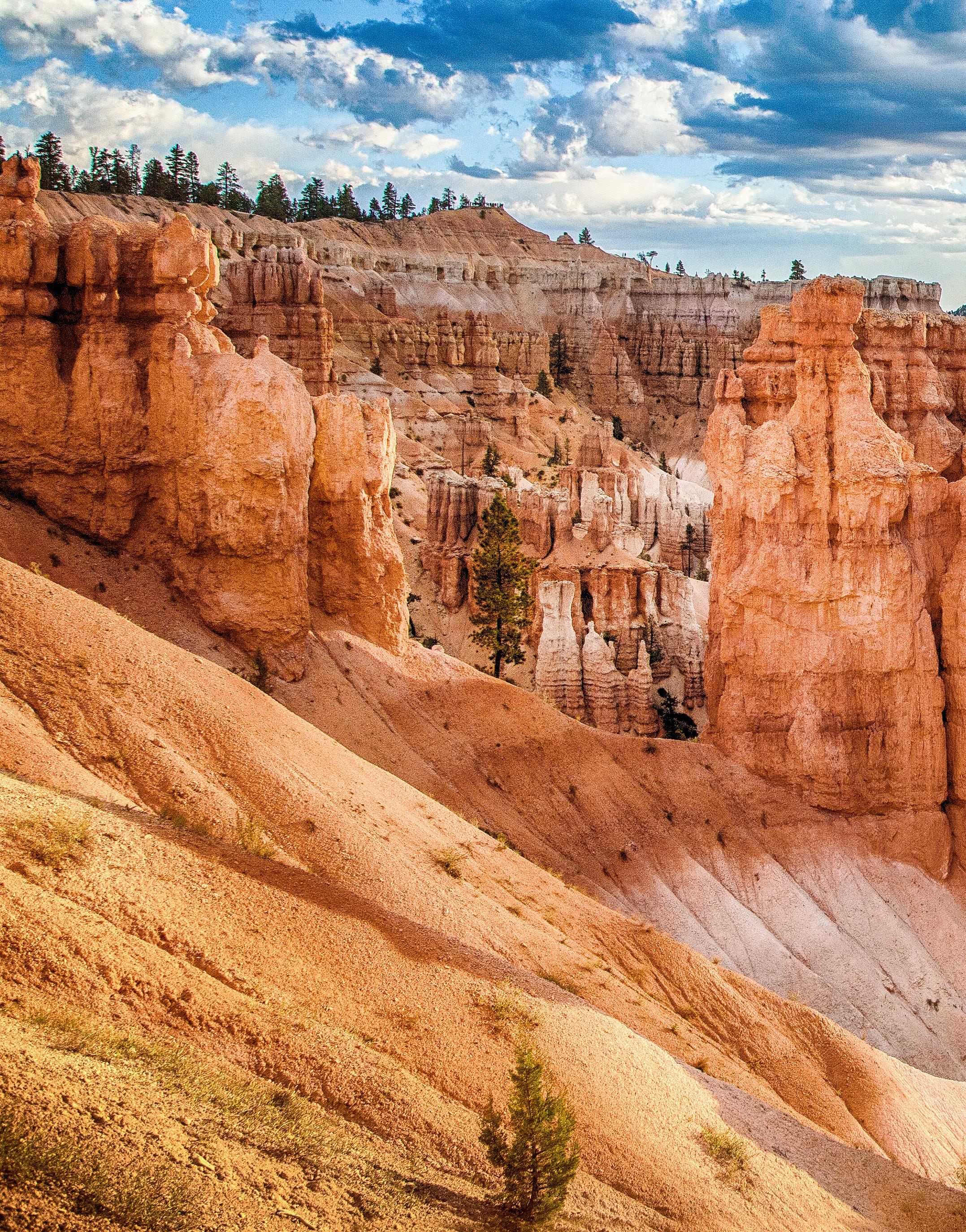
WHERE: Paunsaugunt Plateau, Utah
Bryce Canyon National Park has the largest concentration of hoodoos (irregular columns of rock) found anywhere on Earth. The intricately carved spires, left standing by erosion, can be experienced along hiking trails. It is wise to keep in mind that Bryce Canyon is a high-altitude park, therefore, it is best to proceed with caution as even mild exertion can lead to altitude sickness.
The hiking trails are of various levels of difficulty, and one of the more moderate hikes happens to be the most popular. The Queen’s/Navajo Combination Loop combines open views of the Queen’s Garden Trail and the canyon walls of the Navajo Loop Trail. The Bryce Canyon Amphitheatre offers hoodoo views but hiking outside this area will yield more unique rock formations, and often more solitude.
HOW: For more information, visit www.brycecanyon.com
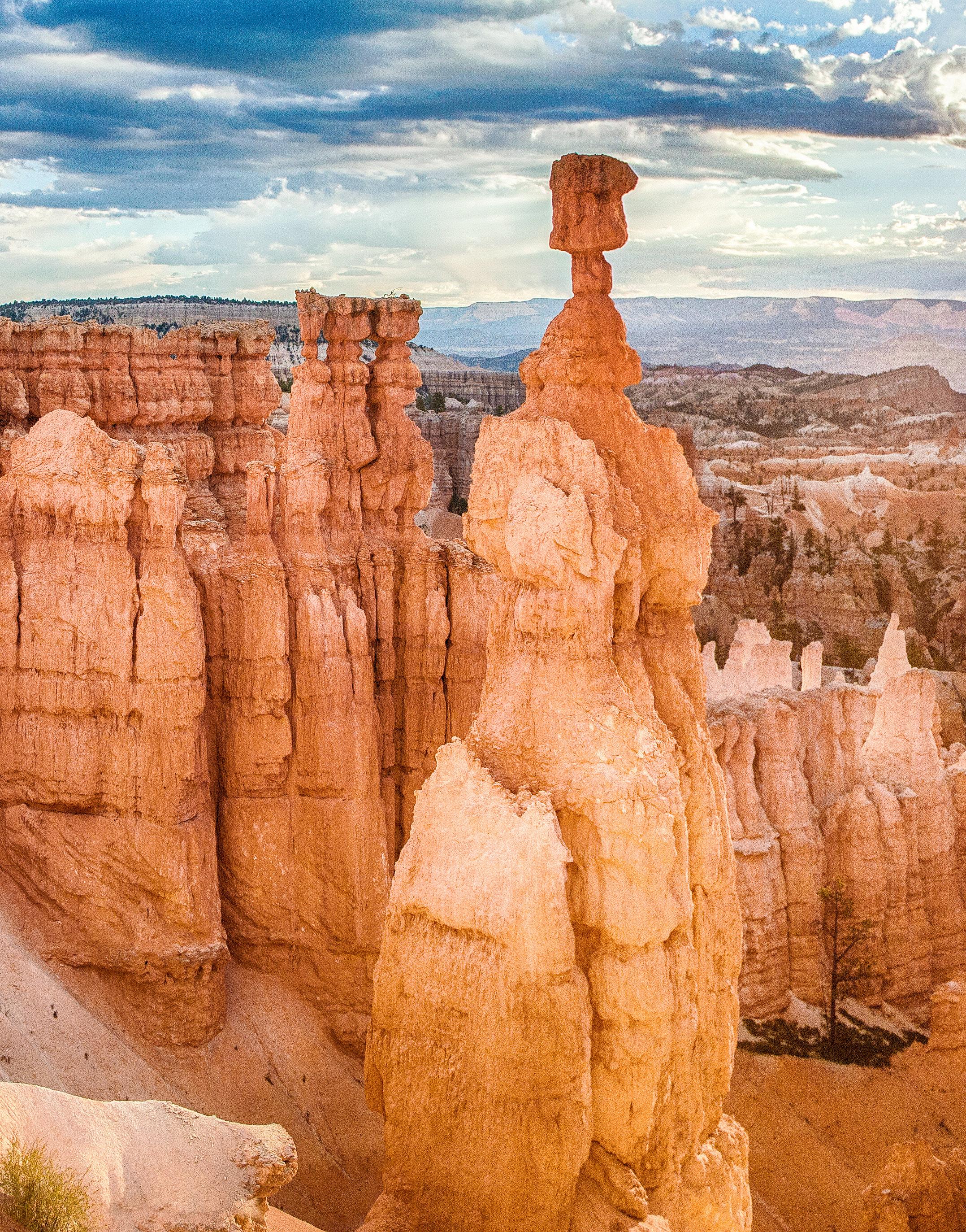


WHERE: Coconino County, Utah
Awash with thick Navajo sandstone, a 3,000-foot escarpment known as the Vermilion Cliffs dominates the wilderness with its red appearance, which is true in colour to its namesake. This geological treasure trove of steep, boulder strewn slopes is the habitat of the endangered Californian condor, among other wildlife, and as seasonal rainwater seeps into the arroyos, it gives life to the valley below. The colourful swirls of slickrock are akin to a magical land filled with fantastical formations such as The Wave, White Pockets, and Buckskin Gulch.
In the northwest portion lies the Coyote Butte, displaying domes, fins, aprons, and corridors. In the Paria Canyon section, there are arches and terraces with natural amphitheatres along the Paria River. For the truly adventurous, it is possible to obtain a special permit to sleep inside Paria Canyon.
HOW: For more information, visit www.blm.gov
WHERE: Crook County, Wyoming

No rocky round up would be complete without the iconic and striking naturally formed butte – Devil’s Tower. It stands at 1,267 feet above the Belle Fourche River and has cultural and historical significance. The Tower, also known as Bear Lodge, was declared America’s first national monument in 1906 by President Theodore Roosevelt. Furthermore, it is a sacred place for over 20 Native American tribes. There are red and maroon cliffs along the east and southeast face of the tower, known as the Red Beds. Their formation dates to the Triassic period, between 225 to 195 million years ago. The imposing monument is located within the Black Hills region and is one of the Earth’s most impressive geological features.
HOW: For more information, visit www.nps.gov
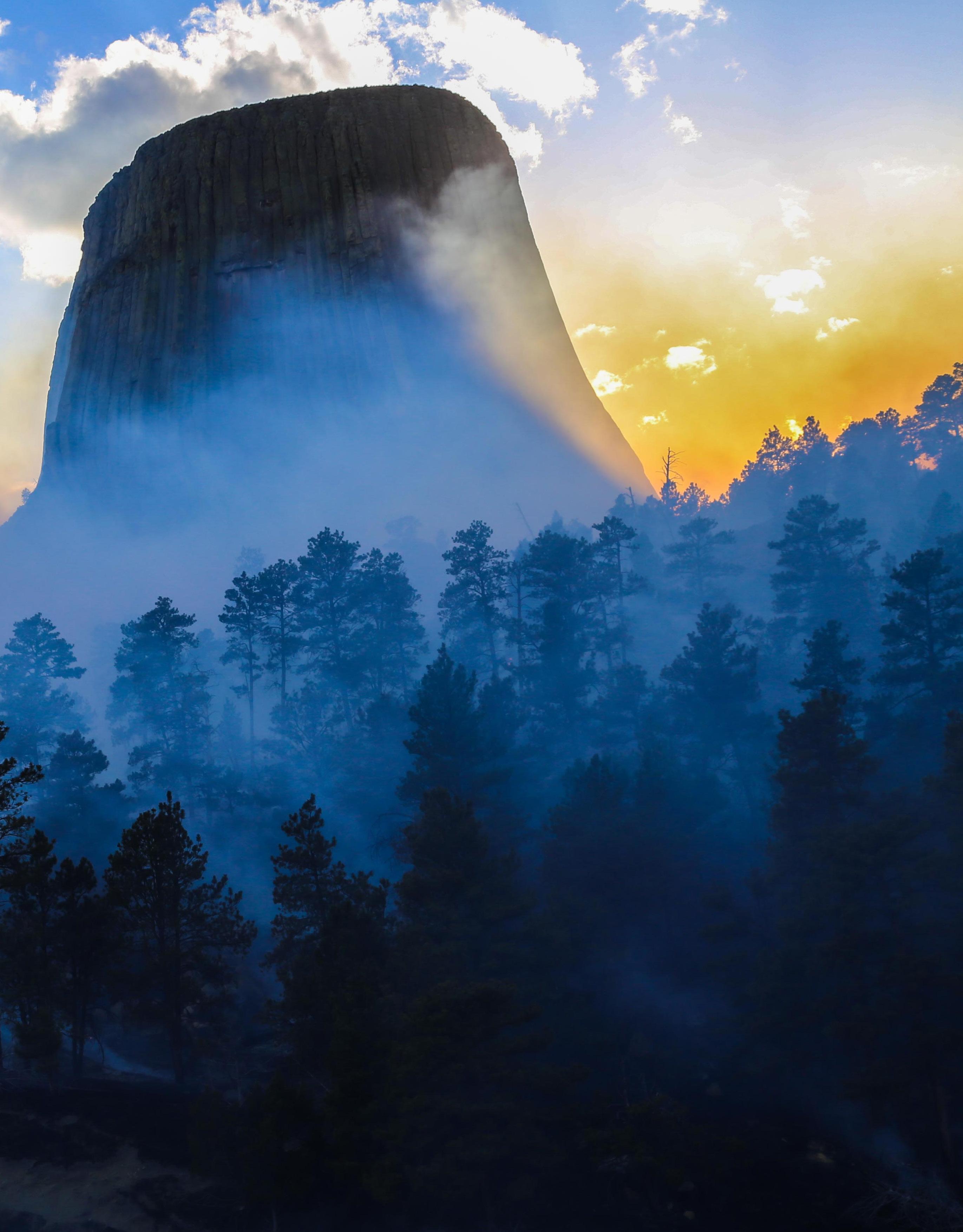


WHERE: South Dakota
Geological formations mixed with grass prairies inspired the Lakota Native American people, part of the Great Sioux Nation of the Midwest, to dub this region mako sica (Badlands), not only due to its terrain but also the lack of water and extreme temperatures. Over millions of years, Badlands drastically changed from a sea to a subtropical forest, to an open savannah. Hence, in 2010 a visitor found a perfectly preserved sabre-tooth tiger skull, although any fossils should now be reported to a ranger.
Today, the old craggy rocks attract fossil hunters and hikers, and are an ideal location to spot wildlife such as prairie dogs and American Bison. Additionally, as the skies over Badlands are exceptionally dark, visitors can see the Milky Way as well as constellations of stars – the park even supplies telescopes.
HOW: For more information, visit www.nps.gov
WHERE: Page, Arizona
In 1814, dramatic landscapes and unique topography were the backdrop for the Battle of Horseshoe Bend in a fight for pioneer settlement. Presently, it is a peaceful scene as the 270-degree curve in the Colorado River doubles back on itself, forming a horseshoe shape with much of its rim remaining exposed.

Less than five miles from Horseshoe Bend is Antelope Canyon, one of the most photographed slot canyons in the world. Upper Antelope Canyon is the most accessible part, and its dramatic stairs, ladders, and narrow sections are evidence as to why it attracts so many shutterbugs. As one of the natural beauties of Northern Arizona, the changing colours are caused by the sun’s rays filtering between its walls, creating light beams in each canyon.
HOW: For more information, visit horseshoebend.com and antelopecanyon.az


With an ethos of ‘Better, not Bigger’, Taos Ski Valley is a haven for adventure and sustainability in Northern New Mexico. We lift the lid on the world’s first B Corp certified ski resort
WRITER: PHOEBE HARPER
Nestled among the pristine peaks of Northern New Mexico, Taos Ski Valley (Taos) is one of North America’s premier vacation and adventure destinations. With more than 300 inches of average annual snowfall, 300 days of sunshine and more than 1,200 skiable acres, Taos is the industry’s only B Corp certified ski resort and is also a CarbonNeutral® certified business. Both accreditations reflect its laudable commitment to operating with the highest standards of environmental sustainability and social and economic justice. As a result, the resort was ranked on Fast Company’s 2023 World’s Most Innovative Companies list earlier this year.
An independently owned and operated resort, Taos maintains an authentic charm while delivering a worldclass experience both on and off-mountain and is a proud participant in the Mountain Collective and Ikon Pass. We speak with the Taos team to find out more about an industry trailblazer.
Outlook Travel (OT): What inspired Taos to become the industry’s only B Corp certified ski resort and a CarbonNeutral® business?

Taos Ski Valley (TSV): Taos’ ownership and executive staff have deep roots in environmental stewardship and conservation. When the resort learned about the B Corp mission to ‘use business as a force for good’ it seemed like a perfect fit to pursue this esteemed certification. Taos became the world’s first B Corp certified ski resort in 2017 and is still the only resort with this designation.
OT: Could you highlight some of the key steps that Taos has taken to achieve net zero carbon emissions?
TSV: In September 2022, Taos became a CarbonNeutral® certified company, the second in North America. As part of that work, the resort purchased the highest quality carbon offsets available, which actively reduce carbon in the atmosphere. This is just the first step towards the resort’s
greater zero emissions goal. The main tactics we are using to achieve this goal include:
• Working towards electrifying the resort, including the fleet, snowcats, and snowmobiles as the technology becomes available.
• Increasing building and energy efficiencies through innovative heating and cooling – as seen with the LEED-certified Blakeand investing in high-efficiency snowmaking machines.

• Finally, we are using renewable energy to power the resort. Taos has already made significant strides in this area due to the local power co-op, Kit Carson Electric, which is ramping up its solar capabilities and now generates 100 percent daytime summer solar.
OT: What are some of the ways in which you support the local community?
TSV: Taos is known for its authenticity, as well as its confluence of cultures combining the Native American, Hispanic, and Bavarian roots of the resort’s founder Ernie Blake.
It celebrates and honours all these cultures and has forged important relationships with these communities built on respect.
To support its local community, Taos offers its staff a true living wage as guided by MIT’s annual living wage calculation. The resort has supported and launched a variety of new low and no-cost programmes to improve accessibility to outdoor recreation for children and local residents, and to groups that have been historically excluded from the outdoor industry.
In the 2022 season, Taos served almost 1,400 school kids in its local programmes, many of which are low and no-cost. This season it hosted its first Community Weekend, which offered free and low-cost skiing as well as rentals and gear to novices. Additionally, the resort managed over USD$450,000 in charitable giving during 2022 to local community non-profits. It also partners with many critical environmental organisations in the area including the Carson National Forest, Taos Valley Watershed Coalition, The Nature Conservancy, and the Rio Grande Water Fund.
OT: Tell us more about Taos’ commitments to offsetting the carbon impact of the World Pro Ski Tour Championship this year and why this is so significant?
TSV: When the resort committed to being carbon neutral, that included the big events it hosts. Not only did Taos decide to offset the impact of the World Pro Ski Tour event, but it also offsets the FIS World Cup travel for Olympian River Radamus who is a Taos-sponsored athlete.
OT: Finally, what are Taos’ key priorities for the near future?
TSV: Taos’ executive leadership team has a deep respect for its staff, passholders and guests, and most of all, a passion for skiing and riding. The resort is 100 percent focused on being ‘Better, Not Bigger’ and all priorities are aligned with this goal. For the upcoming season, Taos is replacing two chairlifts, and will remain focused on programmes and initiatives that build upon the quintessential Taos experience from start to finish, on-mountain and off, including pre-arrival and après ski offerings to round out the experience.
Image: Taos Ski Valley



“TAOS BECAME THE WORLD’S FIRST B CORP CERTIFIED SKI RESORT IN 2017 AND IS STILL THE ONLY RESORT WITH THIS DESIGNATION”
– TAOS SKI VALLEYImage: Taos Ski Valley Image: Taos Ski Valley


A film to inspire a generation of conscious travellers, Outlook Travel attends the premiere of the poignant responsible travel documentary, The Last Tourist
WRITER: PHOEBE HARPER

Tourists laugh as they topple a monument of ancient rock at a sacred site. A tiger, chained and sedated, poses for a photograph with a small boy. Local schoolchildren are swamped by an encroaching sea of selfie sticks. These images are like postcards from the ugly side of tourism, as presented in the feature-length documentary, The Last Tourist.
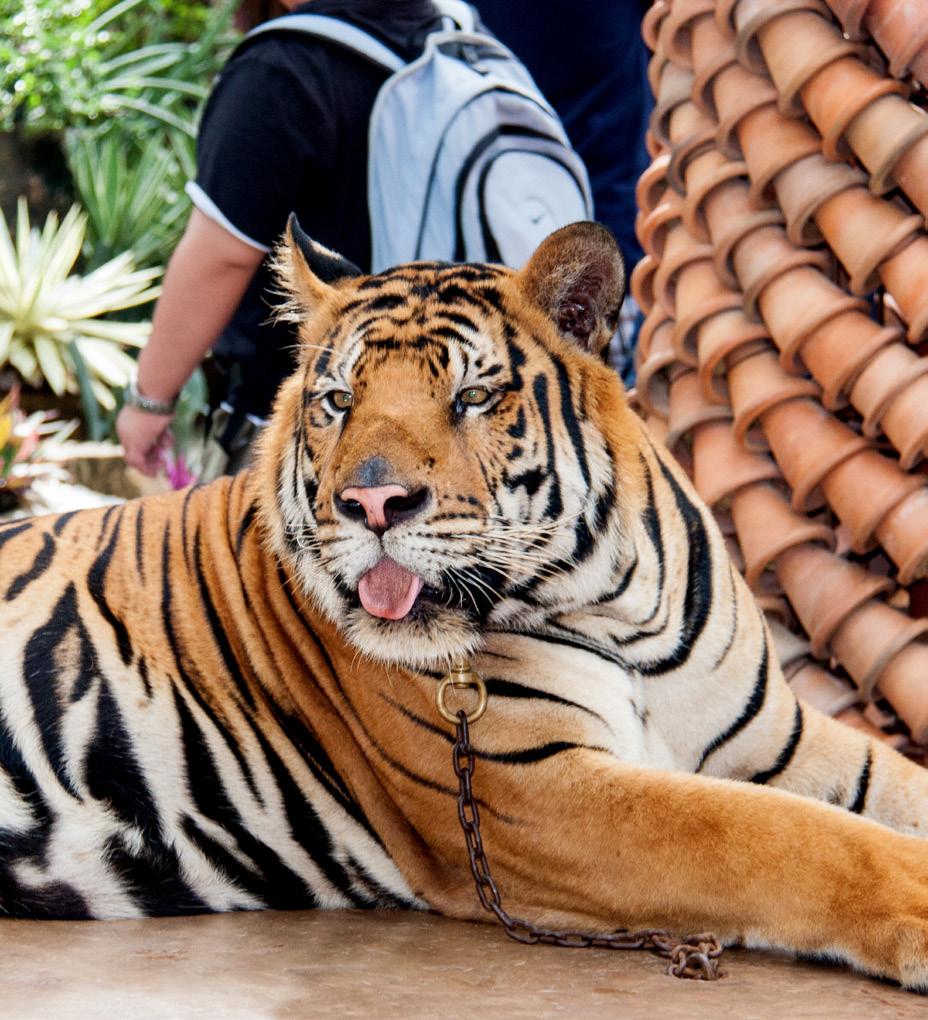
Now streaming in the UK and Ireland, the responsible travel documentary provides essential viewing for tourists hoping to travel more consciously as the summer holiday season enters full swing.
Placing a spotlight on the impact of mass tourism on local communities, wildlife and the environment, the film was directed and written by Tyson Sadler, and produced by Bruce Poon Tip, Founder of community tourism pioneer and adventure operator, G Adventures. It showcases alarming issues such as animals suffering for entertainment, orphaned children exploited for profit, and developing economies strained under the weight of foreign-owned hotel chains.
“We don’t bring anything to viewers that they didn’t already know - we all know elephants shouldn’t kick balls and monkeys aren’t meant to ride bikes. When we are confronted with these images, it forces people to stop and really think about what happens behind the scenes to make these practices possible,” says Poon Tip.
Amassing more than 400 hours of footage during filming across 16 countries, the film makes use of a number of first-hand stories to highlight the often well-intentioned, but harmful, practices many tourism experiences support. These accounts reveal the stark realities of those working in the shadow of one of the world’s largest industries, from islanders living alongside cruise terminals to hotel staff.
These testimonies amplify the stark fracture that can exist between industry and the local community, particularly with regard to the economic implications of certain tour operators and cruise liners recommending tourists visit shops or restaurants, which are typically partially owned by the company themselves.
In its pursuit to change the narrative, The Last Tourist features expert insights from leading travel and tourism


visionaries including Dr. Jane Goodall (Jane Goodall Institute, United Nations Messenger of Peace), Lek Chailert (Save Elephant Foundation), Gary Knell (National Geographic), Meenu Vadera (Sakha Cabs for Women) and Melissa Matlow (World Animal Protection).
One of the film’s key takeaways is the reminder that travel is a privilege, not a right, and should be undertaken in accordance with ethical and moral values, rather than measured by other metrics such as price point. In a major global industry that calls for change, the onus is on those who travel, and those who sell travel, to move the needle.
However, it isn’t all doom and gloom. Indeed, The Last Tourist empowers audiences with the knowledge and inspiration to make a positive impact – and to fundamentally change the way they travel – by
The Last Tourist“WE ALL HAVE THE POWER TO DRIVE CHANGE THROUGH THE CHOICES WE MAKE AND WHERE WE CHOOSE TO SPEND OUR MONEY. THE TRAVEL INDUSTRY CATERS TO DEMAND, AND IF THE DEMAND FROM TRAVELLERS SHIFTS TOWARDS MORE CONSCIOUS AND RESPONSIBLE EXPERIENCES, THEN THE INDUSTRY WILL RESPOND”
– BRUCE POON TIP, PRODUCER, THE LAST TOURIST AND FOUNDER, G ADVENTURES
examining the history of modern tourism and revealing its consequences.

“The Last Tourist demonstrates what a dire state the industry was in pre-pandemic, and as travellers book their summer holidays, it offers tangible ways they can have a positive impact while they are away,” says Poon Tip.

A sobering, but hopeful watch, The Last Tourist provides a reality shock that acts as a catalyst to awaken a new generation of conscious travellers.

As Poon Tip affirms, “We all have the power to drive change
through the choices we make and where we choose to spend our money. The travel industry caters to demand, and if the demand from travellers shifts towards more conscious and responsible experiences, then the industry will respond.”
Rated the number two documentary on Apple TV in Canada after its launch last year, The Last Tourist is now available on Amazon and Apple TV, Sky, Vubiquity, Google, Microsoft and Rakuten. It is also currently playing on Delta Airlines and Emirates Airlines.
Dr. Jane Goodall The Last Tourist
Outlook Travel Magazine is a digital publication aimed at business executives and avid travellers, reaching an audience of more than 575,000 people. Working closely with tourism boards and associations around the globe, from cities to regions, from countries to continents, we take an in-depth look at where to visit, where to stay and what to do when you are there.

With original and exclusive content compiled by our experienced editorial team, complemented by an in-house design and production team ensuring delivery to the highest standards, we look to promote the latest trends, blogs, reviews and success stories from this fast-moving industry.


You can join the vast numbers of tourism sector players enjoying the exposure we provide across our digital platforms with a range of options, from advertising through to free-of-charge editorials, extensive social media saturation, enhanced B2B networking opportunities, and a readymade forum to attract new investment and increase exposure.

To get involved, please contact Outlook Publishing’s Managing Director, James Mitchell, who can provide further details on how to feature your company, for free, in one of our upcoming editions.


 WRITER:
WRITER:
With European charm and North American attitude, Montréal merits the moniker of an international city that has proud roots in the past and enthusiastically embraces the future
JACK SALTER | PROJECT MANAGER: KRISHA CANLAS
The cosmopolitan cultural mosaic of Montréal is home to 120 distinct ethnic communities and more than 3.6 million people.
This island gem on the magnificent St. Lawrence River was originally inhabited by the First Nations people before the arrival of French colonists, whose influence permeates to this day in the world’s second-largest francophone city after Paris.
Montréal not only has a reputation for being a charming French-Canadian city with European roots, however, but is also renowned worldwide for its fantastic, flavoursome food.
From 5-star restaurants and carefully prepared dishes from around the world, to legendary local diners and street-side food trucks, Montréal offers one-of-a-kind experiences and caters to all tastes, all year round. Bring your appetite and get ready to discover the city’s

award-winning cuisine, as Montréal’s masterful chefs continue to elevate its reputation as a gourmet destination.
Poutine is one of Québec’s most famous culinary exploits, and Montréal even celebrates this humble dish during La Poutine Week, an annual festival devoted to its divine incarnations.
Such festivals and grand events are a cornerstone of life in Montréal; whether it’s poutine, jazz, comedy, or avantgarde dance – name a signature local dish or art form and you’ll find a festival for it.
The city’s cultural calendar brings together locals and visitors alike in the name of celebration, be it illuminated winter festivals of art, gastronomy and outdoor sports or international rhythms and circus performances in the heat of summer.
Day or night, summer or winter, Montréal pulses with activity.
• Montréal is a UNESCO City of Design.
• The song “Give Peace a Chance” by John Lennon and Yoko Ono was recorded at Montréal’s Queen Elizabeth Hotel in 1969 during a week-long bed-in.
• During Prohibition, Montréal was a titillating destination for Americans who came across the border to imbibe booze and try their luck with gambling.
• The Montréal bagel has been to outer space! Astronaut Gregory Chamitoff, a Montréal native, brought three bags with him to the International Space Station.
• Montréal has more bike paths (1,000km) than any other North American city, with even more being built.
At the crossroads of Europe and North America, Tourisme Montréal is positioning Canada’s second-largest city as a leading international-calibre destination. President and CEO, Yves Lalumière, outlines the appeal of this young and effortlessly cool cosmopolis
 YVES LALUMIÈRE President and CEO
YVES LALUMIÈRE President and CEO

Outlook Travel (OT): Firstly, can you talk us through the origins of Tourisme Montréal, your initial vision and current goals?
Yves Lalumière, President and CEO (YL): Tourisme Montréal is one of the oldest, if not the oldest, tourism convention office in North America. We were established
in 1919 and celebrated our 100th anniversary four years ago. In terms of vision and current goals, we’ve really changed from a traditional tourist office to investing in the product. We’re now very much a destination management organisation (DMO), and we put part of our budget into festivals. We hold over 120 festivals every year, including Just for Laughs, the Osheaga Music and Arts Festival, and the Festival International de Jazz de Montréal, which is the world’s biggest jazz festival. There are tonnes of festivals in our city in the summer and even in the winter as well. We’re also heavily circus-dominated; Cirque du Soleil was founded here, and we’ve got two other circus troupes.
Our vision is to invest in our strategic assets as much as possible and create what we call a harmonious
destination. Tourism will double in size over the next 20 years; it’s going to grow about 4.3 percent year over year, and about 6.2 percent in the luxury market, so we want to make sure that the destination is a harmonious one. We have our visitor’s promise, which is a commitment to live harmoniously alongside locals during their trip, as well as a carbon footprint calculator on our site, and accreditation for events that are zero emission. We rank as number one in North America and the third metropolis in the world in terms of the Global Destination Sustainability Index, so we’re a very good example of a diversified and purposeful tourism office and do a lot in terms of the attractivity of the destination. The vision is to make sure our residents and visitors have commonality and can live together.


Located in the bustling historic sector of Montreal, PHI has become the go-to destination for innovative and thought-provoking art experiences.

PHI, a multifaceted umbrella organization dedicated to art and culture, is nestled in the heart of Old Montreal’s artistic landscape, and located within steps from all that the city has to offer. With its three entities the PHI Foundation for Contemporary Art, the PHI Centre, and the PHI Studio PHI stands at the forefront, pushing the boundaries of how we experience art today. Founded by cultural protagonist Phoebe Greenberg, its mission is to engage the public with the most relevant ideas of our time.
Housed across two heritage buildings in Old Montreal, the PHI Foundation for Contemporary Art (formerly DHC/ART) has become a cornerstone for the presentation and interpretation of the art of our time. Since 2007, the PHI Foundation has showcased thought-provoking exhibitions that challenge conventions, inspire questions, and delight our senses. Inside, you’ll discover curated exhibitions that embrace diverse mediums, from painting
and sculpture to multimedia installations and immersive experiences. World-renowned artists such as Sophie Calle, John Currin, Yoko Ono, Stan Douglas, and Yayoi Kusama, are just a few of the artists who have graced the Foundation’s gallery spaces with their works.
In conjunction with its exhibition program, the PHI Foundation’s Education program offers a rich learning experience for art enthusiasts of all ages. Through a wide range of programs, workshops, and guided tours, visitors have the opportunity to deepen their understanding of the art of our time and engage directly with

the works on display. From discussions and artist-led workshops to DIY art activities, the PHI Foundation fosters a welcoming and inclusive environment for learning. Whether you’re a student, teacher, or curious learner, the PHI Foundation’s educational initiatives provide invaluable insights while sparking creativity and fostering a lifelong appreciation for contemporary art.
The PHI Foundation also provides an engaging public events program including artist talks, panel discussions, workshops, and performances. These events aim to foster dialogue and critical thinking, allowing visitors to delve deeper into the art on display and gain a deeper understanding of the creative process. To top it off, all of the Foundation’s activities are free of charge, making it a unique gift to the city, while reinforcing PHI’s commitment to generosity, accessibility, and inclusion.
Located only a few steps away from the PHI Foundation in Old Montreal, the PHI Centre explores art at the intersections of technology, music, film, and design. Since its debut in 2012, the Centre has been experimenting with the creative production and consumption of art by offering unique, unclassifiable, engaging, and constantly evolving programming. The Centre’s original and eclectic artistic creations have made it one of the top destinations to explore virtual reality (VR) artworks and immersive experiences both created at PHI and by artists in the international community. Other activities include musical performances, screenings, interactive exhibitions, guest artist installations, lectures and workshops. Some of the artists that have performed, shown works, or collaborated with and at the Centre include Nick Cave, Shirin Neshat, Denis Villeneuve, and Yseult.
The public is as central to art as art is to the public, and offering new perspectives, generating conversations, and gathering communities, is at the heart of the Centre’s mission. With an emphasis on digital technologies and new media, the institution is dedicated to innovation and fosters the design, development, production, and presentation of diverse disciplines and forms.

Housed within the walls of the PHI Centre, PHI Studio is the prototyping and production leg of PHI. The Studio has quickly developed a reputation as an incubator for talent at the vanguard and as a catalyst for the conception and implementation of immersive multidisciplinary projects. It continually explores the ways in which technology can lead to new forms of artistic expression and storytelling.
PHI Studio is most recently known for its co-creation of Space Explorers : The Infinite, a powerful immersive experience inspired by NASA missions aboard the International Space Station. This massive virtual reality experience allows the public to witness breathtaking views of Earth and gain a unique perspective into the daily life of astronauts. The Studio’s latest co-production, Sex, Desire and Data, is an interactive, multisensory experience that explores the connections between sexuality and technology.
Whether you are a newcomer to Montreal or a seasoned visitor to the city, PHI is a must to experience art like you’ve never felt before. PHI’s visionary approach to art has established Montreal as a vibrant cultural destination, attracting artists and art enthusiasts from every corner of the globe. Whether discovering emerging or world-renowned visual and media artists, experiencing a wild immersive installation or hearing your favorite musician perform live, PHI is an essential bookmark on your Montreal travel itinerary.
+1 514 225-0525
info@phi.ca PHI.CA
OT: What are the key demographics and types of people that Montréal appeals to?
YL: We’re second behind Boston in terms of the number of university students. We have 200,000 students, so it is a very young city and visitors describe Montréal as “effortlessly cool” and a “dish with attitude”. We’re a fun, cool city with a high quality of life, and there is very much a young, family vibe that resides here, so that is the key demographic. We’re also very diversified and truly international, with direct flights from 150 destinations around the world, and we host the most international events in North America. We have a luxury lifestyle product that is transforming itself as well, whether it’s hotels or restaurants, so we’re also a good luxury and international destination.
OT: Why, in your opinion, should someone visit Montréal? What makes it different to other North American destinations?
YL: First, we’re a four-season destination. We don’t suffer any complex in relation to winter; we have a winter attitude, or “wintertude”. We’ve actually got an outside electronic music festival in the winter called Igloofest, as well as the Montréal en Lumière festival of light. The summer is also filled with hundreds of festivals, three circus troupes, three orchestras, more than 60 museums all year round, 1,000 kilometres (km) of bike pathway, 1,500 parks and a mountain, so we’ve positioned Montréal as a wide-open playground. We’re a year-round destination and I think that one of the trends you’ll see is more and more places varying their seasonality. We also attract digital nomads because the cost of living here is very affordable, so you get a lot more for your money.
OT: What all-new, awe-inspiring attractions can visitors enjoy in the city?
YL: During the COVID-19 pandemic, we invested in some of our strategic assets. We’ve invested CAD$1,500,000 in The Ring, a beautiful, Instagrammable landmark in the centre of downtown Montréal. We’ve also invested in three enormous steel giants, that go in different parts of the city during the MONTRÉAL COMPLÈTEMENT CiRQUE festival, as well as a brand-new winter ice rink. The Leonard Cohen mural in Montréal is unlike any other and can be viewed from the mountain - it’s just amazing. Through the Murelles project, we’ve also started adding murals and public installations to alleyways in downtown Montréal to make them friendly and safe for visitors. We’ve got about 15 ready to go in the next three to four years. There has been a lot of investment into the product to generate a cool vibe for people to enjoy.
OT: As home to one of North America’s most vibrant culinary scenes, what are some must-eats for travelling foodies?
YL: A recent survey showed that Montréal has 40 percent of Canada’s top 100 restaurants, which is quite a lot. The other thing is that we have 57 different types of cuisine, so we are truly international in terms of our selection of restaurants. MTLàTABLE is Montréal’s annual Restaurant Week with a set list of participating restaurants and menus, and we also have La Poutine Week. We’ve launched the Office Montréalais de la Gastronomie (Montréal Office of Gastronomy) and are very much pushing gastronomy at a reasonable price.
OT: Equally, what is there to explore in Montréal’s thriving arts scene?
YL: There’s a lot of public art outside. Montréal is a bit of North America and a bit of Europe; not many cities in North America have that international feel. We’ve got three orchestras – the Montréal Symphony Orchestra, the Orchestre Métropolitain, and we’ve got the McGill University Orchestra.

We are the circus capital of the world, home not only to the Cirque du Soleil, but also two other circuses and many other troupes that are in Montréal and travel internationally. Then you’ve got the theatre and Les Grands Ballets, so there’s probably about 75 activities every day in terms of the cultural scene.
We call ourselves the cultural capital of Canada and we subsidise about 60 of the city’s 120 festivals, some of which are musicals, some are comedy festivals, and some are related to gastronomy as well.
We also invest in the murals and wall lightings in downtown Montréal, so it’s very much an artistic community here.
What trends are transforming the tourism industry in Montréal and how are you utilising them?
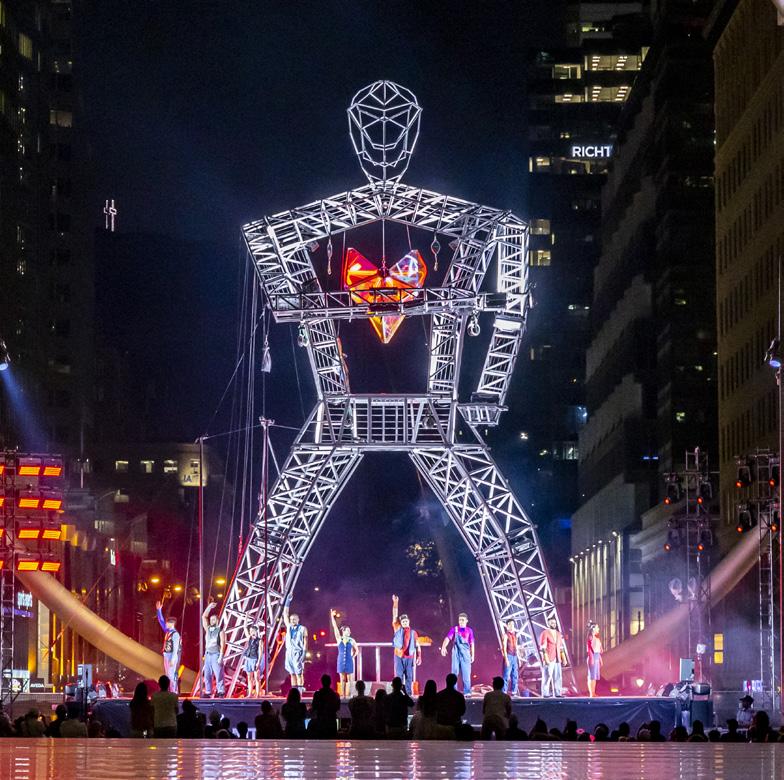


People are spending more time in Montréal, not only because of the value but also because it’s a young city. You’ll see a lot of digital nomads that decide to work out of Montréal. We are also seeing more leisure travellers, and a resurgence in business travel.

We’re getting more and more international flights, and Emirates is launching a new daily service from Dubai in July, so international visitors will continue to boom. We see companies now budgeting for attractions in the city and I think that’s a very nice touch, especially as Montréal offers so much in terms of cultural events.
How do you forecast the tourism sector in Montréal developing in 2023?

YL: This year is going to be very strong in terms of international visitors. The UK and France are particularly robust markets, with about 700,000 visitors between them, and we’re very pleased with the London market. We always say that we’re at the crossroads of America and Europe. We’re really the francophone metropolis of North America, and the only major city that speaks French.
Then, of course, we expect a very strong year from the US both by car and air. We’ve increased our promotional investment in California, New York, and obviously the francophone market. We’re probably going to be 20 percent over our 2019 revenue because people are spending more money and have more savings.



The PHI Foundation for Contemporary Art is dedicated to making contemporary art accessible to everyone by bringing impactful experiences to the public. The Foundation is driven by a desire to break down and challenge entrenched perceptions of what contemporary art is and who it is for, with the fundamental belief that art is for everyone. Experience an intersection of art, film, music, design and technology at the PHI Centre , which has earned its status as an exciting cultural nexus for art in all its forms and brings together many of the most talented creators of our time.

Guests arriving at Ruby Foo’s Hotel are welcomed into a stylish lobby teeming with Asian-inspired character. The hotel’s spacious accommodation comes with a wealth of thoughtful perks, from free Wi-Fi and plush robes to white goose-down duvets and feather pillows. Conveniently located just 15 minutes from downtown Montréal, you’re never far from the action.
 Credit © Adil Boukind
Credit © Susan Moss
Credit © Tourisme Montréal, Stéphan Poulin
Credit © Mural Nespresso by Milkbox Kayla Buium -
Credit © Adil Boukind
Credit © Susan Moss
Credit © Tourisme Montréal, Stéphan Poulin
Credit © Mural Nespresso by Milkbox Kayla Buium -



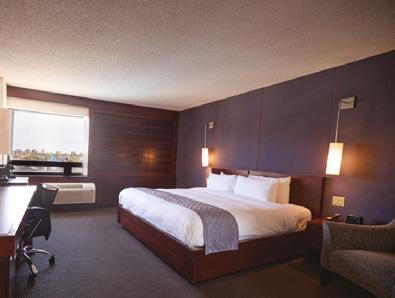



With an amazing range of restaurants, there are fabulous flavours and unique culinary experiences in every neighbourhood of Montréal
IT’S THEREFORE NO wonder that so many of the city’s eating establishments are routinely ranked amongst the very best in Canada, including:
VIN MON LAPIN
1st on Canada’s Best 100 Restaurants list
Occupying the elusive sweet spot between being a special-occasion restaurant and a place to grab a quick bite, dishes at Vin Mon Lapin are always delightfully surprising.
JOE BEEF
3rd on Canada’s Best 100 Restaurants list
A place where locals congregate, and around which tourists plan their trip to Montréal. The popular lobster pasta is a must for first timers, although anything on the menu will make your taste buds sing.
RESTAURANT TOQUÉ!
6th on Canada’s Best 100 Restaurants list
A staple on the Montréal culinary scene since 1993, chef
Normand Laprise’s restaurant is built on his passion and commitment to shedding a spotlight on Québec’s local and seasonal ingredients. With delightful dishes and exceptional service, a meal here is an experience to remember.

7th on Canada’s Best 100 Restaurants list
A meal at Montréal Plaza Restaurant will always surprise and delight. The dining room has a modern, crisp ambience adorned with quirky accent pieces that will make you do a double take. Sink into one of the leather banquettes in this sophisticated space and order specials that include whelk gratiné and other culinary wonders.
LE MOUSSO
16th on Canada’s Best 100 Restaurants list
Known for its tasting menu and wine pairings, Le Mousso has been a hit on the Montréal dining scene since day one. Plated like works of art, its dishes are colourful, original and flawless, fit for unforgettable celebrations.
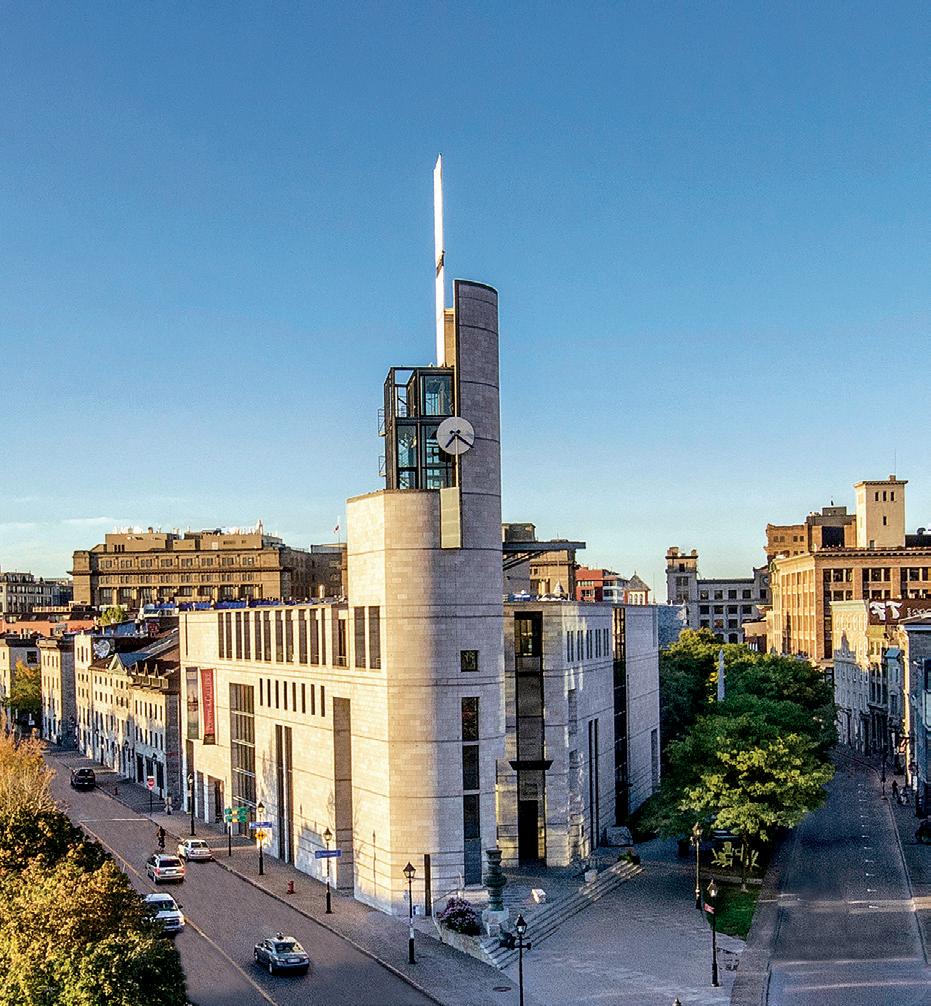





Montréal is the circus hub of North America. The city is home to the National Circus School, which enrols more than 150 students from across Canada and around the world each year

A PIONEER OF the new circus in Canada and North America, the National Circus School has contributed to the emergence of many circus companies, including Cirque du Soleil, Cirque Éloize and The 7 Fingers, all of which are based in Montréal.
Created in 2010, MONTRÉAL COMPLÈTEMENT CiRQUE is the first North American international festival dedicated to circus acts. Every July, over the course of 10 days, the festival offers a stunning circus programme in various locations around Montréal, as dazzling acts take over the city and light up the urban landscape.
Watch the streets, sidewalks and parks of Montréal come to life as circus performers wow audiences with awe-inspiring, colourful and high-flying displays. Look out for Le GÉANT on the Esplanade Place Ville Marie – it’s hard to miss, as this immense steel giant stands before the horizon at 50 feet tall, waiting for life to take hold of it. Le GÉANT will host Cirque Éloize at this year’s festival, from 7th to 30th July.
CiRQUE presents diversity in all its forms and expressions, and brings together the most talented artists from the circus world. The festival contributes to Montréal’s status as an international capital of circus arts, and the rise of Quebec’s circus scene by offering programming that allows the province to truly shine. Not to be missed, this is a must-see event for circus fans who love to see death-defying stunts, bright costumes and more.

A true icon of Montréal, this 30-metre-wide steel circle is suspended above the staircase to the Esplanade Place Ville Marie. In a touch of Montréal flair, The Ring’s evening illumination mirrors that of the Mount Royal Cross, an unmistakable symbol of the city’s landscape, whilst simultaneously symbolising the historic bond of the built heritage along an important axis in the city’s downtown core.


The stunning ceiling, wood carvings, stained glass windows and massive organ of this gorgeous Gothic Revival church will leave you awestruck. Notre-Dame Basilica of Montréal stands as a majestic testament to the importance of religion and art throughout the city’s history. The basilica’s interior is a sight to behold, with its bright blue colours, shimmering gold-leaf ornamentation, intricate woodwork, religious paintings, and colourful stained-glass windows.
A bastion of Little Italy, this is one of North America’s largest open-air public markets. JeanTalon Market’s lively atmosphere, authentic character and wide selection of fresh, local produce and specialities from here and abroad always make for a pleasant and appetising outing. True to its culture and spirit, the JeanTalon Market showcases local and ethnic eats and a diverse array of merchants. Open yearround, the market changes with the seasons.

MONTRÉAL IS AN international destination of choice that is easily accessible by land, air, and sea.
Travelling to Montréal by car is made easier by the various highways and bridges leading right into the city centre, whilst downtown is located a mere 20 minutes from Montréal-Trudeau International Airport.
Arriving by boat or by cruise ship has also become an increasingly popular way to get to Montréal, as a strategic starting point or destination for thousands of cruise passengers every year.


Getting around the city on a day-to-day basis is equally hassle-free. The best way to get to know the city is on foot; Montréalers love to walk, and this safe, healthy and budget-wise mode of transportation is one of the best ways to see the city’s lively neighbourhoods, day and night.

Public transport is another affordable way of getting around Montréal, with a clean, safe and fast metro system and a relatively simple public transit network comprising just four lines connecting downtown to major tourist sites, bus stops and train stations.
Montréal’s 1,000km of bike paths, high-quality bike rentals and tours, meanwhile, make it a breeze to experience the sights of the city on two wheels. Indeed, the city’s ever-expanding cycle network has been named one of the most bike-friendly in North America.
Alternatively, admire the view of Montréal from the St. Lawrence River via water taxi, or take a scenic drive on the streets in a rental car. If you prefer to get around by taxi, it’s easy to flag one down on the street, or find them at one of the city’s many taxi stands and hotels.
 Credit © Tourisme Montréal - Madore - Daphné Caron
Credit © Eva BlueTourisme Montréal
Credit © Tourisme MontréalMadore - Daphné CARON
Credit © Tourisme Montréal - Madore - Daphné Caron
Credit © Eva BlueTourisme Montréal
Credit © Tourisme MontréalMadore - Daphné CARON


Home to futuristic art and a strong marine heritage, Norfolk is the unspoilt metropolis and undiscovered gem of the Southern US
WRITER: LUCY PILGRIM | PROJECT MANAGER: KRISHA CANLAS
Positioned on the glistening shores of the Elizabeth River, Norfolk is most well-known for its maritime presence and operational NATO base. And yet, situated on the stunning waterfront of Virginia, this highly unexpected city is one of the best up-and-coming city breaks in the Southern US.

As one of the oldest urban areas in the state, Norfolk is the perfect location for history lovers who are eager to learn about the culture behind the ‘Mermaid City’, as the city is locally known. This is complemented by a picturesque destination surrounded by beautiful waterways, one of the city’s most charming features. Consequently, the region boasts a rich naval heritage, with a multitude of nautically decadent attractions for any boating fanatic.
Similarly, Norfolk also heralds a bustling downtown area that possesses restaurants and bars galore, allowing visitors to immerse in an array of diverse cultures which reflects the melting pot of ideas that the city encapsulates.

The flourishing city further showcases a spectacular arts scene, with over 50 galleries presenting a plethora of craftsmanship, from conventional fine art to the wondrous spectacle of glass art. The Chrysler Museum of Art in particular is a must-see for those who want to the get lost in art innovations from across the world.
As a hidden treasure, Norfolk is positioned as the blossoming centre to some of the US’s best maritime marvels. Accompanied by a deep appreciation of different cultures, it would be a shame to miss.
VisitNorfolk is the place to go for planning your trip around the hidden treasure of Norfolk, placing this stunning destination on the map of Southern US hotspots. CEO, Kurt Krause, tells us why this historically diverse city is on the rise


OT: Why, in your opinion, should someone visit Norfolk?
Outlook Travel (OT): Can you talk us through the origins of VisitNorfolk and its ongoing vision?
Kurt Krause, CEO (KK): VisitNorfolk is a non-profit organisation that positively promotes the City of Norfolk’s unique experiences and expansive amenities to residents and visitors, as the best city of its kind to start, study and stay. Our mission is to elevate Norfolk, Virginia, from a “nice to see” destination to a “necessity” destination by working with our community to better share the stories and accomplishments of our locals, all while highlighting what the city has to offer our visitors.
KK: Norfolk’s unique positioning on the East Coast puts two-thirds of the US population within easy driving distance. Once you arrive, you will be welcomed into a city of mermaids anchored by a vibrant downtown and steeped in maritime history. Home to the world’s largest naval base and the North American headquarters for NATO, Norfolk is known for its Navy presence and so much more. The city’s rich and proudly diverse culture flows through its museums, burgeoning performing and visual arts scenes, and fabulous festivals, giving visitors an abundance of activities to do.
OT: What kind of travellers does your region appeal to most?
KK: We welcome all travellers looking to chart their course and experience our beautiful city. With a wide range of activities from kayaking along the Elizabeth River to exploring our beautiful glass art in the Chrysler Museum of Art, Norfolk is perfect for families, couples, solo travellers and anyone looking to enjoy all the city has to offer.
OT: How have you worked towards putting Norfolk on the map for potential visitors?
KK: Part of what makes Norfolk special is the people and natural attributes that make up the city. Being home to the largest naval base in the world, you will find people from all over the globe that decide to settle and open their own businesses. There are over 600 independently-owned restaurants in the city that boast big flavours. To help visitors gain an understanding of the great cuisine that Norfolk offers, the video series “City With Bite” was born as a new way to highlight the culinary scene in an engaging way.
The arts and entertainment scene is also worth mentioning, particularly since Norfolk is home to the largest
KURT KRAUSE, CEOcollection of glass art, which is free for visitors to see. Travellers can stay at a boutique hotel with glass art, visit the Chrysler Museum of Art, see pieces throughout the ages, or get a full immersion by blowing a glass piece themselves at the Perry Glass Studio.
OT: What is Norfolk’s most underrated attraction?

KK: Something incredibly unique
about Norfolk is its maritime history and its role in building and shaping our city as we know it today. While exploring downtown, visitors will be surprised to see the Battleship Wisconsin situated at the end of the street. Located next to our maritime discovery centre, Nauticus, the battleship and Nauticus itself provide visitors with an immersive look into our maritime industry and how vital it is. The newly renovated third floor features Aquaticus, a permanent exhibit devoted to young visitors that encourages experience-based play and discovery with a fun, engaging underwater theme. Then, continue through Norfolk in Time, a highly interactive exhibition weaving stories of history, culture, science, technology and industry to showcase

Norfolk’s unique resilience in the face of continual challenge and change.
OT: What does Norfolk have to offer in terms of sustainable or ecofriendly travel experiences?
KK: Whether you’re aiming to reduce your carbon footprint as you travel or are interested in supporting ecofriendly businesses, there are many reasons to keep sustainability at the forefront these days. The City of Norfolk’s Environmental Sustainability and Climate Action Team is focused on several key initiatives to combat climate change and its impacts. These include advancing climate justice, facilitating green living, and greening city operations. We are proud to have incredible attractions like the Norfolk Botanical Gardens, which
is undergoing a major renovation to better improve its sustainability efforts, along with the Elizabeth River Trail (ERT), Norfolk’s 10.5 mile-long walkable and bikeable pathway. Efforts led by the Elizabeth River Trail Foundation aim to expand, enhance and transform the ERT as a recreational, social and educational destination that improves environmental awareness, neighbourhood connectivity and innovative economic development.
OT: Could you tell us more about the influence of Native American culture, and how it is showcased in the region’s tourist industry?
KK: Norfolk has a long history, and that history has shaped the city it



is today. We try to recognise those that lived on this land before us as often as we can through land acknowledgments. We are continuously evolving and working to better represent Native American culture in Norfolk. We continue to grow and strengthen our relationships with the active native tribes throughout different projects.
OT: How is the city celebrating Juneteenth this year?
KK: Every year, various organisations throughout Norfolk host Juneteenth events. Juneteenth in the Park is an annual event with a focus on career and professional development. This educational festival is designed to help those in our community with on-site interviews, health, wellness and finance education sessions, live music, presentations and networking opportunities all along Norfolk’s waterfront. It’s the perfect way to celebrate the day and the growth of the community. We also encourage visitors and locals alike to take the time to explore our city and learn from its history through the Waterways to Freedom. This self-guided tour takes you back in time to see how Norfolk was involved in the Underground Railroad.

FOR SAILING TO THE BLISSFUL LAND OF NOD…
Just a short stroll away from the beautiful Elizabeth River, the Hilton Norfolk The MAIN Hotel should be top of your list for a scenic stay. Providing the perfect base for your travelling adventures across the city, the Hilton has a wide variety of rooms to suit your holiday needs, with a highly luxurious and affordable range of suites. Furthermore, with access to a rooftop bar, you and your friends can be at the height of sophistication as you look over the shimmering water, before passing a curated selection of art on the way to a delectable range of dining choices.







Let our team of experts bring your event to life. 60,000 square feet of flexible event space to host up to 1,200 people.


Hilton Norfolk The MAIN, the place to gather, features 300 luxury guest rooms and suites.
IACC-Certified conference center
Designed with the latest meeting trends to inspire memorable events
State-of-the-Art Built-In Audio Visual Technology
2 Ballrooms including the largest hotel ballroom in Virginia
Variety of special event options including 7 private dining spaces


ONE OF THE most spectacular and widely regarded sectors of Norfolk is its thriving arts scene, presented in avenues both new and old. More than just an art studio, Perry Glass Studio is at the cutting edge of inventive art pieces, as thousands of visitors flock to blow their own glass at the only facility of its kind in the Mid-Atlantic region. As a subsector of the highly reputable Chrysler Art Museum, the Perry Glass Studio highlights the wonders of glass art, as it provides visitors with the opportunity to see how such marvels are created.
Visitors can witness the futuristic side to this beautiful tradition through the studio’s performance nights, creating vibrant spectacles of colour. Additionally, for those who are more creative, the studio provides the exciting opportunity to bend and
build your own glass creation, through glass blowing workshops which cater to everybody, from first-time glass blowers to masters of the art. In this other-worldly creative session, visitors can learn a variety of processes including glassblowing, fusing, flameworking, coldworking and neon. One particularly fascinating event is the ‘Glass After Dark’ workshop, where lively music and art come together once a month, for a night of visionary creation. The evening showcases emerging artists in the local music scene, working alongside worldacclaimed artists in glass blowing, to create an unbeatable atmosphere which encapsulates artistic excellence.
Thus, be sure to experience this wondrous art form as it bends and twists the limits of what art can do, to create something truly spellbinding.







At the heart of Norfolk lies the beautifully bountiful Botanical Gardens, encompassing an emerald blanket of 175 acres. Spilt into seven themes, the 60 different gardens have a stunning view for everybody, regardless of season, taste or age. This is unmissable for those with or without a green thumb as the garden holds thousands of varieties of plants and flowers, creating remarkable natural scenes.

As one of Norfolk’s most cherished and prized tourist attractions, you would be remiss not to visit the Chrysler Museum of Art when in the city. Having been founded in 1933, it houses some of the most unmissable pieces of art, as visitors can feast their eyes on the more than 30,000 displays from numerous different mediums and areas of the world.
The NEON (new energy of Norfolk) District has an eclectic selection of murals and is becoming the secret treasure of Norfolk’s art collection. With no interest in staying hidden, the public art murals are bold and daring, flooding the local neighbourhood with colour. As street art, it is openly accessible to everybody, from intricate, tiny paintings to huge bursting murals, so you never know what you might find.

WHEN TRAVELLING ACROSS the city, it is important to take advantage of the numerous transportation opportunities that are offered to tourists and residents alike. Once travellers arrive fresh off a plane at Norfolk International Airport, they can enjoy the convenience of an airport located just from downtown Norfolk.

To quickly zip around the city, Norfolk offers a bikeshare programme which provides an environmentally friendly way to see its sites, through perfectly planned bike lanes and routes. Furthermore, to truly see the wonders of the Elizabeth River, Norfolk has a world-class waterside marina at the core of the downtown district, which lets you take a relaxing Rover Cruise or City Cruises.

The city also provides comprehensive taxi links so you can catch a ride with ease, particularly with the vital aid of the Downtown Attractions Map that lets you browse through Norfolk’s attractions instantly. Finally, everything visitors may need to get around can be found in the Amtrak Station, a 3,500 square foot station that provides visitor information, a bus stop, short/long term parking, bike racks and much more.


An unspoilt Eden of soaring volcanoes, otherworldly wilderness and charming hospitality, buckle up for adventure in Central America’s underrated gem of Nicaragua
WRITER: PHOEBE HARPER | PROJECT MANAGER: KRISHA CANLAS


the warm hospitality of its people –known locally as ‘Nicas’ - and a sense of having discovered a hidden gem beyond the reaches of mainstream tourism.
Undeniably, Nicaragua’s appeal lies in its cornucopia of natural wonders, ranging from pristine rainforests to towering active volcanoes, golden sand beaches and cloudforest reserves that support a kaleidoscopic array of flora and fauna, with the likes of toucans, jaguars, sloths, and sea turtles gliding amongst the coral reefs of the Caribbean coast.

Sun-seekers and beach bums will rejoice in the swathe of beaches along the country’s two coastlines. While the Caribbean coast is a haven for snorkelling and diving, including the breath-taking Corn Islands, the historic base of British buccaneers, the majority of Nicaraguans reside in the western Pacific region between the coast and the oft-overlooked capital of Managua. Here, you will find a landscape with over 20 volcanoes and the two largest lakes in Central America, before reaching the coast and its popular surfing enclaves such as San Juan del Sur. It is easy to see where the moniker of ‘the land of lakes and volcanoes’ originates.
Although the entire country is a captivating cultural footprint of colonial cities, tantalising food and folk traditions embodied by a colourful arts and crafts scene, be sure to start or end your visit with a day in Managua – not just for its urban appeal, but as a gateway to some of the country’s most impressive natural sights.
government, maintaining a balance between human, economic and environmental protection and increasing the flow of tourism with an emphasis on small and medium businesses.
AS THE OFFICIAL body responsible for promoting Nicaragua on a global scale as a go-to tourist destination, the Nicaraguan Tourism Board (INTUR) offers some expert insight into why this Central American gem should be top of your travel wish list. Minister, Yaosca Calderón, tells us more.


Outlook Travel (OT): Firstly, could you provide us with a brief introduction to INTUR and your goals for 2023?
Yaosca Calderón, Minister (YC): In addition to showcasing Nicaragua as a worldwide tourist destination, INTUR coordinates and facilitates the effective growth and sustainable development of the country’s tourism industry as a priority of the

This year, we are working closely with our priority markets of Latin America, North America and Europe, and soon we will start branching into the Chinese market. We are also engaged in our international strategic plan where the country will be participating in fairs, roadshows and collaborations around the world, with new alliances with airlines and promotional activities through the Central American Tourism Promotion Agency (CATA).
INTUR will ensure the increase of the country’s tourism collaborations around the world
YAOSCA CALDERÓN, MINISTEROT: In your opinion, why should someone visit Nicaragua?
YC: Nicaragua offers the hospitality of its people and a friendly way of life that is manifested in security, how the country welcomes tourists, and the tranquillity of its environment, which translates into a feeling of well-being, peace and harmony.
But we also offer many activities. Nicaragua has a wealth of natural treasures, like our lakes, lagoons, volcanoes, waterfalls, mountains, and natural reserves. If you are looking for adventure tourism, Nicaragua has it all, including rappelling, trekking,
hiking, kayaking, and our most popular activity - sandboarding down the active Cerro Negro volcano.
For those who love the sun and the beach, Nicaragua is surrounded by the Pacific Ocean and the Caribbean Sea. The beaches of the Pacific are perfect for surfing, while the Caribbean side is ideal for diving and snorkelling.

Our colonial cities are another reason to visit, including the stunning destinations of Granada and León which were founded in 1524 and preserve the architecture and colonial style from the arrival of the Spanish.
Finally, our delicious gastronomy is truly diverse, depending on which part of the country you are in. In the Pacific region, typical food is based on corn products, while the Caribbean primarily relies on coconut milk and oil, with a rich variety of seafood wherever you are.
OT: Could you name one overlooked spot in the country that you would recommend to a first-time visitor?
YC: It´s difficult to list only one spot, but I would highly recommend Ometepe Island. The island is a Biosphere Reserve located on Lake
Nicaragua, and has two volcanoes, Concepción and Maderas. You must also visit the Corn Islands in the Southern Caribbean region of Nicaragua, which are a paradise with crystal clear waters and white sand. If you prefer something closer to the capital, I recommend the Patrimonial City of Granada, with its colourful streets and churches that boast authentic architecture. For a unique experience, try the Masaya Volcano, where you can see a real lava flow in motion at night.
OT: How does tourism in Nicaragua incorporate sustainable or ecofriendly travel experiences?

YC: Nicaragua has developed a strategy of responsible, sustainable, inclusive and accessible tourism for all, where people are at the centre of all our policies and strategies. The

“EVERY CORNER OF THE COUNTRY HAS SOMETHING TO SURPRISE YOU AND I CAN ASSURE THAT YOU WILL BE WARMLY WELCOMED BY THE NICARAGUAN PEOPLE”
– YAOSCA CALDERÓN, MINISTER, INTUR
development of rural community tourism is promoted to seek the benefit of the communities and the wellbeing of the environment, in addition to rescuing and enhancing our natural and cultural attractions that offer an experiential encounter for tourists.
OT: What are some of the other major trends transforming tourism in the country?
YC: The coordinated work model between the public and private sectors, implemented by our government, has encouraged entrepreneurship in our country. As a result, the local economy has been revitalised throughout the territory, working directly and in accompaniment with protagonists in all areas of their development. This includes the creation and conditioning of new tourist products, such as 12
nationwide tourist routes. Economic benefits, training, participation in fairs, meetings, and worktables to market their products have allowed the continued motivation of Nicaragua’s economic sector.
OT: Are you optimistic for the future of tourism in Nicaragua and how do you forecast its development?
YC: Tourism in Nicaragua is growing. We have exceeded the levels of tourist arrivals in comparison with the COVID-19 pandemic period, and our air connections with priority markets have been restored. It is a gradual and positive process in which various tourism products have been created in coordination with the private sector, working and providing support to improve and strengthen conditions for Nicaraguan families and international tourists.
OT: Finally, what makes 2023/24 the ideal time to visit Nicaragua?

YC: Our privileged geographical location, good security, excellent roads, exceptional year-round climate, natural beauty, infrastructure, and new hotel investments all position Nicaragua as an attractive destination to live an enriching and unique experience. Every corner of the country has something to surprise you and I can assure that you will be warmly welcomed by the Nicaraguan people.
Tel: + 505 22545191
cit@intur.gob.ni
www.visitanicaragua.com

NICARAGUA IS UNIQUE in having been colonised by both the Spanish and the British. Today, this historic legacy is best appreciated in the architectural splendour of the country’s cities and churches, which have been constructed on these lands over the past 300 years.


Founded in 1524, Granada is the oldest city in Nicaragua and stands out as one of its most popular attractions. Its cobblestone streets, lined with houses clad with elegant, sweeping balconies and vast double doors, are like wandering through a time capsule into a bygone era. Many tourists choose to use Granada as a base for their stay in Nicaragua, thanks to its historic attractions, laidback café culture, and proximity to other locations in the surrounding countryside, such as the Parque Nacional Archipiélago Zapatera, which is home to one of the most impressive collections of petroglyphs and statues in the country.
An equally appealing magnet to those seeking to explore Nicaragua’s colonial history, is the creative and cosmopolitan city of Santiago de los Caballeros de León, more commonly known as León. As Nicaragua’s second largest city, located just 93 kilometres from the capital of Managua, León is known as the University City, thanks to its vibrant student population. Visually, it stands out for its evocative array of Baroque churches, quaint cobbled lanes
and faded mansions. León is also renowned for its political history, once considered the passionate home of revolution in Nicaragua. Today, it celebrates a burgeoning reputation as a cultural capital that hosts art collections, eclectic gastronomy, captivating nightlife and an edgy student scene.
Both of these colonial cities encapsulate the combination of religion and history and blossom into places of pilgrimage during Holy Week. Throughout both Granada and León, visitors cannot help but admire the majestic beauty of their foundations and the captivating melange of pre-Columbian cultures merged with
 Catedral de Granada
Catedral de Granada
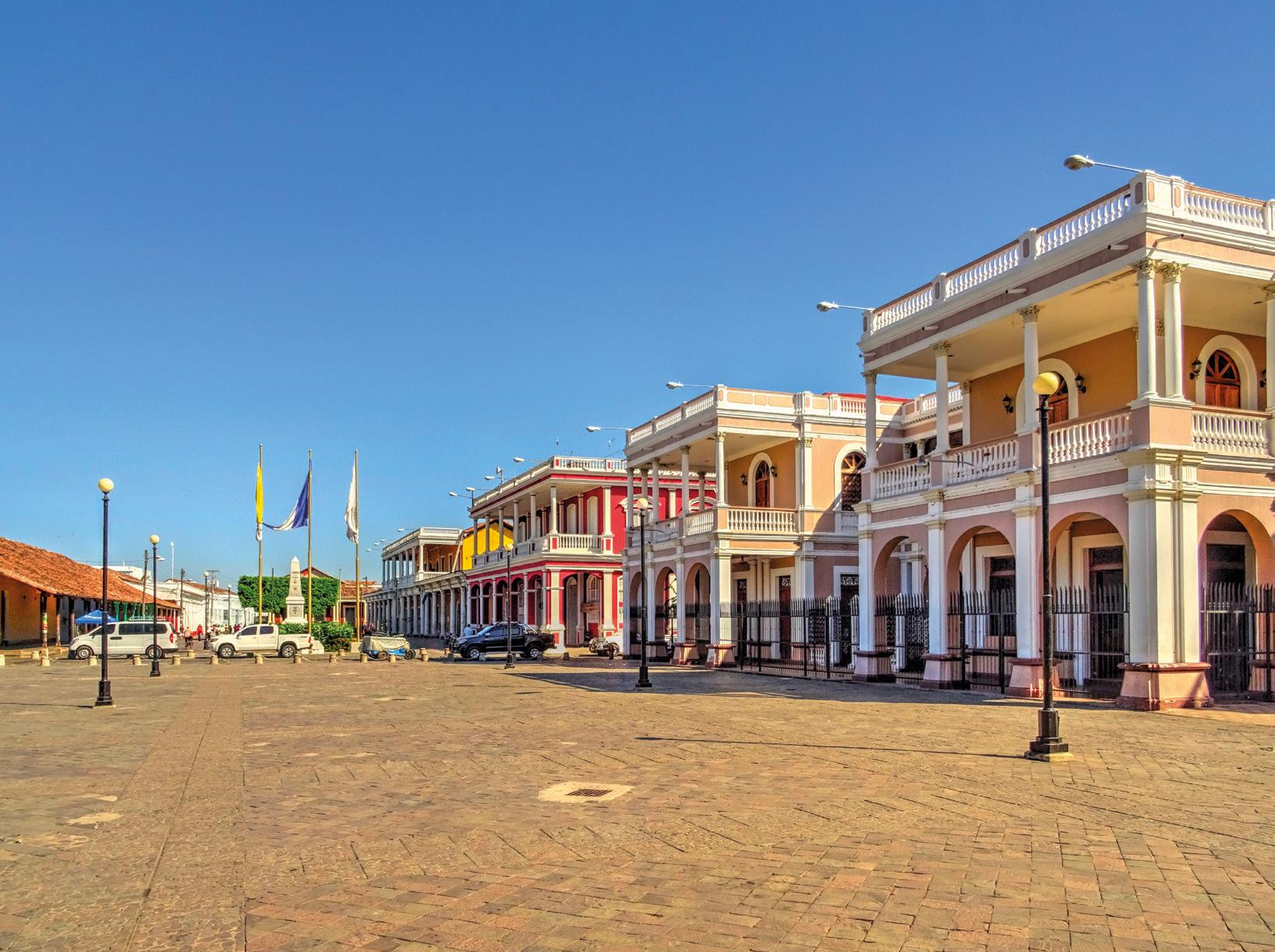








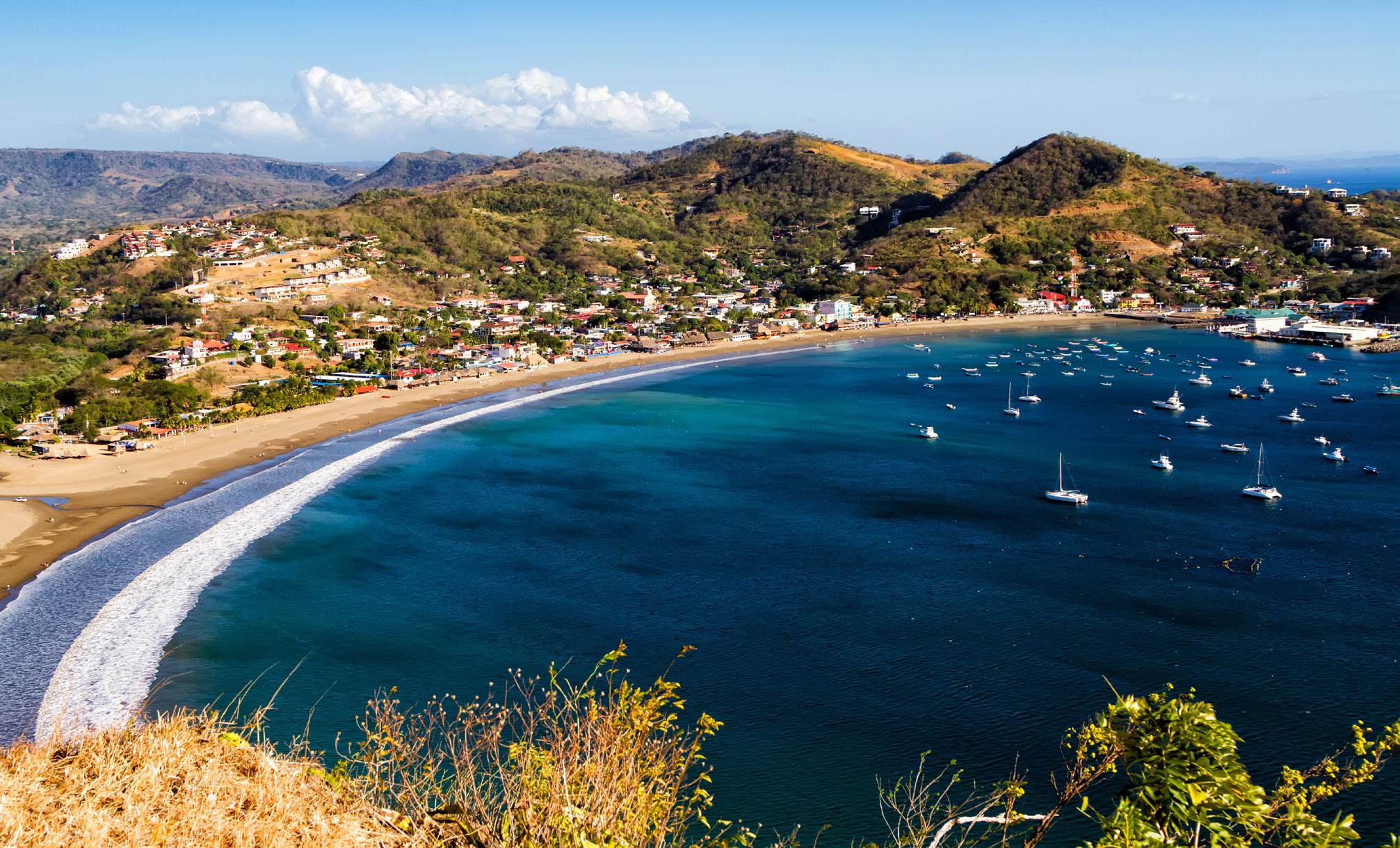
A surf lover’s paradise, this rustic fishing village boasts an undeniable laidback charm and the best beaches in Nicaragua. Found on the Pacific Coast, spanning a horseshoe-shaped bay bordered by rainforest choked mountains, turtles can be seen hatching on these golden beaches between September and April. The bustling port town also showcases an array of hotels and restaurants, and a lively nightlife scene.
The largest freshwater island in the world, Ometepe can be found on the inland sea of Lake Nicaragua. An unspoilt Eden of natural wonders and pristine landscapes - thanks to its isolated location reached only by regular ferries and its protected status as a Biosphere Reserve - the island’s silhouette is defined by the two soaring volcanoes of Maderas and Concepción.

As Nicaragua’s youngest volcano, a climb up Cerro Negro should feature on the itinerary of any thrillseeker. Located in the department of León, adrenaline junkies flock here to sandboard down its dramatic slopes on narrow wooden planks, reaching speeds of up to 60 kilometres per hour. Other thrills include mountain biking, hiking, or simply admiring the jaw dropping panoramic views.

AUGUSTO C. SANDINO International Airport (MGA), located just nine kilometres outside the city of Managua, is Nicaragua’s primary transport hub. Connecting flights from neighbouring capitals land here, alongside strategic international connections with direct services from major US cities including Houston, Atlanta and Miami.
For getting around the country itself, you may choose to do so either by plane, boat, car rental or bus. MGA is the hub for most domestic flights, which are the best way to reach further flung destinations such as the Corn Islands and Puerto Cabezas.
Managua itself is famously difficult to navigate, and taxi hire here is generally considered the most effective option. This is also car hire central for those seeking independence
in exploring the country at their leisure. Nicaragua generally boasts a good road network, particularly thanks to the Pan-American Highway, although inevitably, more rural destinations may require journeying along rustic dirt tracks. Alternatively, bus travel is a fantastically feasible and budget-friendly option, with a well-connected network running throughout the country. This can range from comfortable air-conditioned inter-city coaches to minivans or the local buses that make use of iconic yellow North American school buses. Although the latter may not be the most comfortable or quickest means of travel, it is sure to provide an unforgettable and authentic Nicaraguan experience.
It is likely that at some stage, your Nicaragua itinerary will include boat travel, since this provides an essential link for navigating the country’s lakes and waterways, especially along the Atlantic Coast. Typically used by tourists, a cargo boat connects Granada and San Carlos, bypassing Ometepe Island, while smaller vessels – known locally as pangas – serve routes between Bluefields and Pearl Lagoon or El Rama.



 NICARAGUA
NICARAGUA
The jewel of central Europe, Prague is a cultural wonderland where history rubs shoulders with contemporary creativity, hearty gastronomy and the best beer on the continent
 WRITER: PHOEBE HARPER | PROJECT MANAGER: ALFIE WILSON
WRITER: PHOEBE HARPER | PROJECT MANAGER: ALFIE WILSON
ABohemian beauty sprawled across both sides of the Vltava river, the picturesque city of Prague (or in Czech, Praha) holds a magnetic appeal. Located in the northwest of the Czech Republic, Prague stands out for its cultural splendour and emerging sustainability credentials, after being voted in 2021 as the 13th greenest city in the world. Enjoying a flourishing renaissance in tourism since the fall of Communism in 1989, Prague has become a dynamic metropolis and a cultural haven, where the Medieval meets modernity. The city continues its evolution as a destination for discerning travellers seeking a taste of authentic Czech culture, as reflected by its burgeoning prominence in the worlds of fashion, art, design and gastronomy. In terms of the latter, Prague boasts a wealth of world-class eateries celebrating the rich Czech cuisine, such as Mlýnec restaurant near the scenic Charles Bridge on the banks of the Vltava.
Rather like the hands of the Astronomical Clock where
crowds assemble at the turning of each hour in the middle of the Old Town square, Prague itself fans out into 10 separate districts from its immaculately preserved historic centre. Each has their own unique draw, from Holešovice, known for its laidback hipster vibe, to the reputable cafés and bistros of Karlín.
With a Medieval cityscape dominated by fairytale castles and towers, Prague is known as the city of a hundred spires. Its streets represent an architectural smorgasbord, as a masterclass in the styles of Baroque, Gothic, Renaissance and Art Nouveau. However, its contemporary creative scene is equally captivating, with a colourful palate of art galleries and modern design studios.
In a metropolis that is renowned for having one of the world’s best public transport systems, be sure to stray beyond the Old Town and you will be rewarded with evidence of a cultural revival that is bound to leave an impression.


As the go-to guide to composing your next event in the capital of the Czech Republic, Prague Convention Bureau (PCB) is the non-profit organisation with unparalleled expertise in this captivating city. Celebrating 15 years of promoting Prague as the ideal business meeting destination, we find out how this location strikes the ultimate balance between business and leisure with PCB’s Managing Director, Roman Muska
Outlook Travel (OT): Tell us about the bureau and your vision and mission?
Roman Muska, Managing Director In 2023, PCB celebrates its 15th anniversary. We were established in 2008 as a non-profit organisation and our vision is to promote Prague as one of the most inspirative, innovative and sustainable meeting destinations worldwide. Our strategic goals are to profile the Czech capital as a global leader in fields such as artificial intelligence (AI), biomedicine, robotics, and creative industries, and through them also increase the number of international congresses and conferences held in Prague, while supporting the development of the meetings industry on the national and regional level.

OT: How can the bureau assist business travellers looking to arrange a conference, exhibition or corporate events?
RM: Our team provides a wide range of services to those organising or planning to organise congresses and conferences in Prague. Firstly, we act as an intermediary between the planner, local service providers and the government authorities. We can recommend suitable venues and reliable service providers that are experts in their fields and ensure that the event will run smoothly. Destination and venue site inspections are an integral part of this advisory service, together with providing basic consultancy on local Czech conditions. We can also help with processing requests for free
public transportation tickets or city tourism grants. In addition, we also provide marketing support for events confirmed in Prague.
OT: What makes Prague an enabling environment for business travellers?

RM: There are many factors that make Prague an ideal meeting destination for event planners. The combination of rich history, UNESCO sites and our modern approach is very appealing to many business travellers. The fact that Prague is located in the heart of Europe, which makes the city easily accessible by plane or train with a small-sized city centre that is easily walkable, is another huge benefit. Last but not least, the meetings, in-
centives, conferences and exhibitions (MICE) infrastructure of the city is also crucial for decision-makers. I’m glad to say that even after the COVID-19 pandemic, Prague still offers a wide range of conference venues in different sizes and styles, as well as many hotels, restaurants, and companies acting in the meetings industry on a highly professional level.
OT: Aside from business travellers, what kind of demographic does Prague most appeal to?
RM: In my opinion, everyone will find something for themselves in Prague. For history lovers, there are UNESCO sites amongst many other places to visit. Hipsters and modern art fans will be excited by the emerging parts
of Prague, where old factories have been turned into galleries, cafés or other cultural spots. We also have one of the best-rated zoos in the world, which families with children will certainly appreciate. For those looking for sustainable ways to travel, Prague is a great destination. We have one of the best public transportation systems in the world and the country was ranked 8th in the Global Sustainable Development Goals 2020 Index. Indeed, 57 percent of Prague is covered by greenery, which makes it one of the greenest cities globally. The Czech Republic is also regularly recognised as one of Europe’s most veggie-friendly countries. Speaking of food, gourmets will appreciate the many restaurants offering traditional
Czech dishes together with Czech and Prague beer from local breweries or wine from the city’s vineyards.
Recently, Prague presented its tourism strategy ‘Putting Prague First’. This highlights the vision of sustainable tourism as intrinsic to the quality growth of the city, with an emphasis on its cultural heritage and the quality of life for Prague’s residents. I see that as a key factor to move from mass tourism to slow tourism and to attract more sophisticated travellers.
OT: Are there any new or emerging destinations in the city that you would personally recommend?
RM: I would mention Kunsthalle Praha, a new art space that has just opened in the area around Prague Castle. I also recommend BRICK restaurant’s offering of typical Italian dishes and the urban jungle of the stylish Monkey Bar Prague. There are also several new luxurious hotels in the city, with many more being built. You can now stay at Almanac X Prague (formerly Alcron Hotel), Andaz Prague, Stages Hotel Prague or Julius Prague.
OT: How has tourism changed in the city in the wake of the COVID-19 pandemic? Have you seen any new trends emerge?
RM: The pandemic itself provided us with a rare break that the city put to
good use by reconsidering the direction of its future development. New strategies were made and are now slowly being put into practice. Prague wants to attract the sophisticated tourist who travels for sightseeing, culture, but also for business meetings. There are new products and services being prepared or that have been already launched to improve the city in this way. The emphasis is placed on sustainability, slow tourism, experiences, and local residents, with the aim to avoid over-tourism or tourists looking for cheap drinking tours.
OT: Could you expand on the bureau’s involvement in supporting a sustainable Prague? Are ‘green events’ a growing phenomenon in the city?
RM: Sustainability is a hot topic, not only in the Czech Republic and Prague, but worldwide. We first turned our attention to it in 2016 with our first educational workshop, but I suppose it was too early for many stakeholders back then. Later in 2017, we joined the Global Destination Sustainability Movement to be able to better measure and set our green goals. One of our targets is to put together a new strategy dealing with sustainable meetings in the upcoming years.
Prague itself has made strong progress in this field. Aside from
‘Putting Prague First’, which incorporates sustainability on a large scale, there are new rules for events in Prague. Planners who consider applying for city grants must commit to replacing single-use cups and plates, for example, with reusable options. In recent years, Prague has also presented its Sustainable Mobility Plan, Climate Change Adaptation Strategy, and an improved food waste collection system. There is a strong focus on electromobility and the sustainable development of Prague Airport, and many of our partners are focusing on various sustainable initiatives. You can find out more about our dedication to the sustainable development of the Prague meetings industry here
OT: Finally, what makes 2023 the year to visit Prague?

RM: I could name a long list of events, activities, or spots to visit this year. But instead of this, let me invite you to Prague personally. Just like our claim says, come to feel the atmosphere and let the city inspire you!
Tel: +420 224 235 159 info@pragueconvention.cz www.pragueconvention.cz





Výstaviště Praha is the ideal place to hold all kinds of cultural, social, sporting and company events. Whether you are looking for an outdoor space to host a festival, or a sufficiently large indoors area for an exhibit or conference, you can find it here.
Výstaviště Praha is easily accessible from the airport and from the city centre by public transport or by car, offering a large parking capacity and interesting hotels in the vicinity. If you are looking to organise an event, you have the option of opting for a quiet environment full of greenery, as well as the possibility of using local sports facilities inside the complex for the aforementioned benefits.

In 1891, the gates opened in Prague-Bubeneč to reveal a new exhibition complex built over the course of a single year for the General Land Centennial Exhibition. The Industrial Palace is a true landmark and architectural jewel to behold, the first ever assembled steel structure combined with glass, which had no parallel in the region. Originally a temporary building and having survived a devastating fire in 2008, it has thus far celebrated 130 years of fame and great events. The Palace covers an impressive 10,400 m2, including the left and right wings, middle hall and foyer.
January 2022 saw the biggest reconstruction in Prague in recent years get underway at Výstaviště; the Industrial Palace is finally seeing the complete but delicate restoration of its right wing and the central hall, and the reconstruction of the left wing which completely burned down years ago. The aim of such an undertaking is to preserve the unique original appearance of the palace from the 19th century to the maximum extent possible, and to equip it with modern technologies from the 21st century. We will soon return the Industrial Palace to the Prague event map, and you can be among the first to be there. Contact us, and we will be happy to answer your questions.


Complete darkening in Křižík Pavilion Křižík Pavilion outdoors
Capacity:
Small Křižík Pavilions C, D – 800 m2, 1000 persons
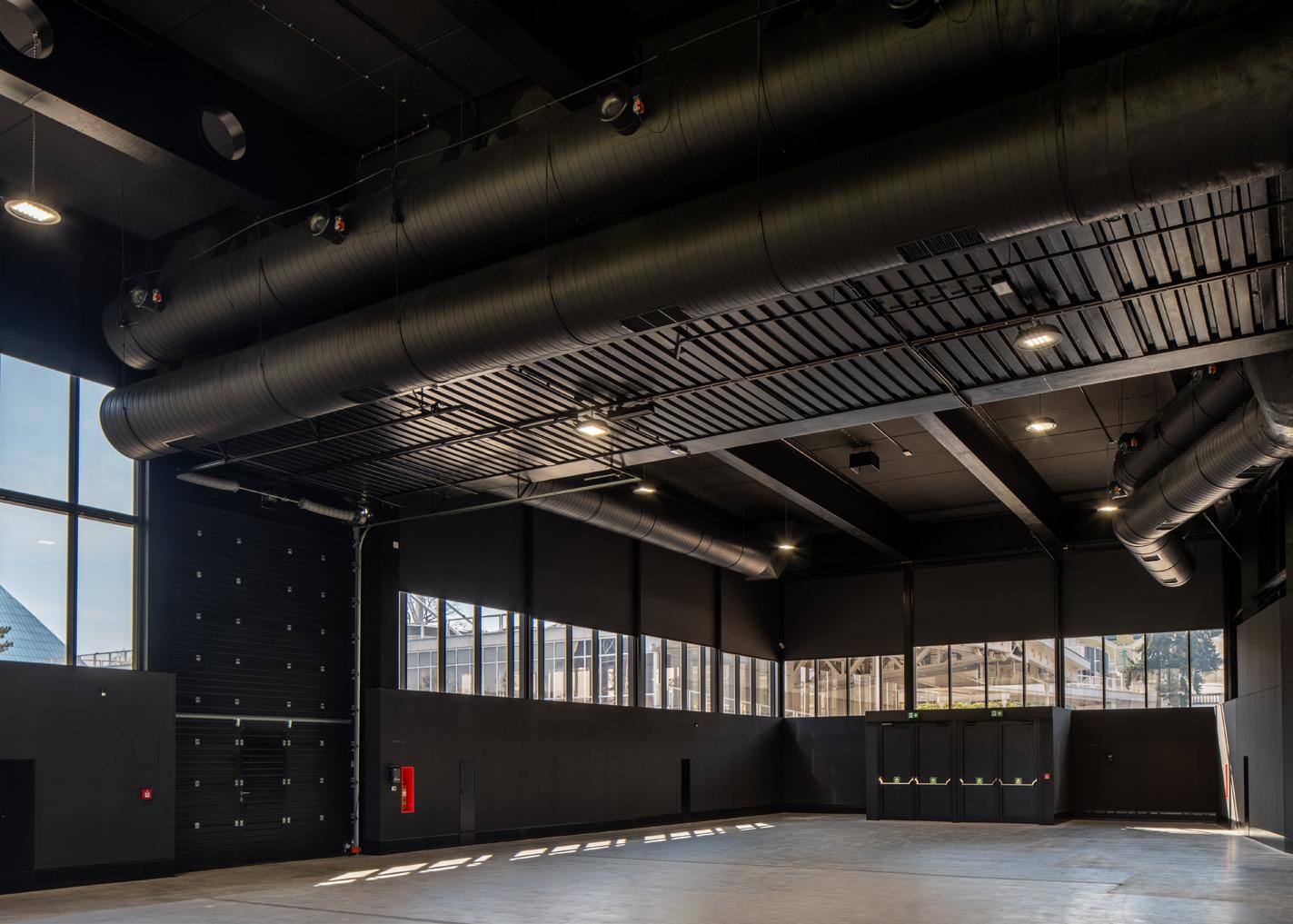



Large Křižík Pavilions B, E – 1830 m2, 1750 persons



The Křižík Pavilions were built at Výstaviště Praha in 1991 for the General Czechoslovak Exhibition according to a design of architect Michal Brix. A total of four pavilions, two large, (with a 1830m2 area, and a capacity of 1750 people,) and two small ( 800m2 area, and a capacity of 1000 people) surround the famous Křižík Fountain.
The Křižík Pavilions are located in the lower park section of the Výstaviště Praha complex. Thanks to the complete reconstruction that took place between 2021 and 2022, they offer representative premises for various corporate and social events: exhibitions, trade fairs, conferences, concerts, fashion shows and film shoots. The pure industrial design of the pavilions together with modern technologies and quiet surroundings full of greenery will make every event hosted there an unforgettable experience.



The roofs of pavilions also provide a further dimension to the events organised, boasting a great view of the lower area of the exhibition grounds, Stromovka Park and the opposite bank of the Vltava River. They are currently undergoing an amazing transformation, and in autumn 2023 you will find in their place pleasant terraces with benches, green plants and refreshment stands.
 Small Křižík Pavilion
Large Křižík Pavilion Pavilion
Small Křižík Pavilion
Large Křižík Pavilion Pavilion
EQUALLY, WITH SO many sights to explore, it may be worth assigning a full day to appreciate the city’s oldest district. People have continually gathered here over the past 1,000 years for the most significant moments in Prague’s history, from demonstrations to executions, marriages to government meetings, and now, as its most popular tourist destination.
Originating as Prague’s main marketplace in the 10th century, the historic square lies at the Old Town’s nexus, and is lined by popular pastel-hued buildings and monuments that appear straight out of a Disney fairytale, such as the Kinsky Palace museum, the twin towers of the Our Lady Before Týn church, the Baroque church of St. Nicolas, and the iconic Old Town Hall. The latter gathers crowds every hour to observe the Astronomical Clock – the
world’s oldest, still-functioning timepiece of its kind - and its elaborate centrepiece that features the 12 apostles rotating with the passing of each hour. Although no longer used for government purposes, this is the most popular location in Prague for those wishing to tie the knot, and it is worth climbing the Hall’s tower to admire views of the city of a hundred spires.
As the city’s most visited area, it is recommended to explore the Old Town in the early hours of the morning before throngs of tourists descend. When they do, lose yourself amongst the labyrinthine cobblestoned backstreets where traditional bars and restaurants await, and admire spectacularly preserved Gothic buildings before moving on to the old Jewish Quarter or across the iconic Charles Bridge.


George Prime Steak is the premier, quintessential American-style steakhouse located in the heart of Prague’s Old Town neighbourhood. Our mission is to serve up the perfect prime steak every time. From a selection of the highest quality beef to the way we present the final steak to you, we aim to make our steakhouse one of the best.
We are also more than just prime steaks. Our restaurant boasts the freshest seafood, chef driven entrées, an extensive collection of Californian wines, handcrafted classic cocktails, and two private rooms, each designed for different dining experiences.
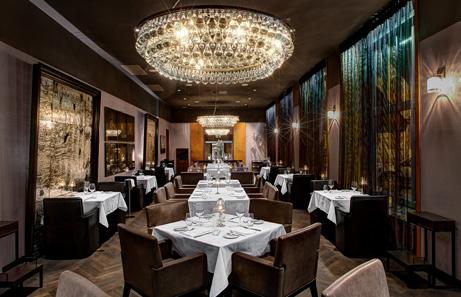
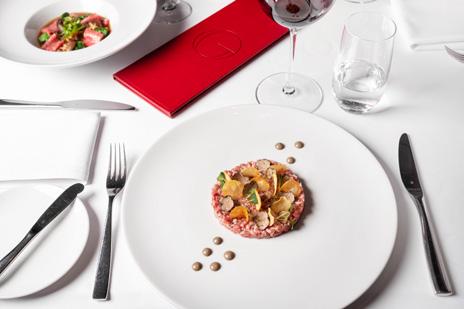
Our Steaks
We carefully select individual cuts from gold standard Black Angus USDA Prime Beef, and our selection is limited to beef produced by a few select farms in the Mid-West where cattle are raised 100 percent naturally (which means high quality, corn-based feed, hormone and antibiotic free, and ethical treatment). We are the first restaurant in the Czech Republic with the Montague Legend Broiler. Our grill sears the steak at 650 degrees Celsius, sealing in all the natural juices to create the most mouth-watering, tender and buttery texture.
The Foundation Room caters to those who desire a secluded dining experience. The table here seats up to 12 guests and is located off our main dining room. For an extra measure of privacy, you can access this room through its own private street entrance.
The Captain’s Room offers an extremely personal dining experience. With a discrete entrance from the bar, the table here seats up to 10 guests showcasing our exclusive collection of Californian wines. We say what happens and what is whispered around the Captain’s table stays at the Captain’s table.
George Prime Steak has the most extensive selection of California wines in the EU. Our award-winning sommeliers have assembled a collection of exceptional labels, cult wines and rare achievements from Grgich Hills, Screaming Eagle, Opus One, Chateau Montelena and George’s Boutique Pinot Noirs – to name a few.

Perfect steaks, great wines, classic cocktails, and your experience.

Hilton Prague is an award-winning downtown business hotel located in the heart of the immersive and vibrant Czech capital. With four floors of meeting spaces, a large capacity of guest rooms, three restaurants, two bars, and multiple convention and banquet spaces, catering for groups of various sizes from 10 up to 2,000 delegates, the hotel provides the ideal location and facilities for any potential meeting and event in one welcoming, contemporary-design space.
Ideally situated just 30 minutes away from Vaclav Havel International Airport, Hilton Prague offers 791 completely refurbished guest rooms including two Executive floors, suites, apartments, and elegant Presidential and Royal suites.

Featuring a full and comprehensive selection of facilities for visitors seeking both business and leisure, all guest rooms are decorated in a contemporary style. The selection of executive rooms offers many special touches including private check-in and check-out and full access to the Executive Lounge.
Hilton Prague also offers 38 versatile meeting rooms and banqueting halls for events of all sizes. The Congress Hall accommodates up to 1,500 delegates, and the Grand Ballroom seats up to 650 people in stylish surroundings.

Occupying a prime location on the banks of the Vltava River, the hotel is within easy walking distance of the city centre and offers excellent transportation options.
Hilton Prague has been recently ranked as the best hotel for meetings in Central Europe by industry-leading meetings, events, and hospitality technology provider, Cvent.








Nestled in the heart of the “City of a Hundred Spires”, Hilton Prague Old Town creates a sophisticated retreat with its authentic Art Deco interiors, cosy ambience, more than 1,200 square metres of function space, health club and spa, stylish restaurant, lounge and bar. The welcoming team captures Prague’s charm and generosity with personal service to create a truly seamless experience for all guests. Ideally situated for the ultimate visitor convenience, the hotel is located just 25 minutes away from Vaclav Havel International Airport.
Completely refurbished, Hilton Prague Old Town boasts 303 guest rooms with a fresh, yet stylish design, also incorporating modern elements to the aesthetic appeal. Elegant furnishings with Art Deco touches make the space a comfortable place to return to. Furthermore, all executive room guests have access to the Executive Lounge where you can relax or socialise in comfort and tranquillity.
The design was created by world famous David Collins who took inspiration from promiment art deco traditions of Prague.
Hilton Prague Old Town features vast meeting facilities located on a separate floor. The spacious Dvorak Ballroom hosts up to 340 guests in theatre style, while smaller meetings can be accommodated in 14 meeting rooms, all offering high-speed wireless internet and the latest audiovisual technology. Creative catering for all types of events is provided by an experienced team of chefs.
The famous sites of Prague are all within walking distance, while Namesti Republiky station provides nearby subway access to all attractions.

Located in the heart of the Old Town, George Prime Steak promises an authentic Americanstyle steakhouse experience founded on serving the highest quality beef. Aside from prime steak, expect handcrafted cocktails, Californian wines and fresh seafood served within a classy, contemporary setting. Private dining rooms are available for an exclusive experience.
As the city’s exhibition ground, Na Výstavišti is a complex of 36 hectares that provides the ultimate backdrop for unforgettable events. The grounds include the multifunctional event spaces of the Křižík Pavilions, which are available for both small and large gatherings, and have a maximum capacity of 1,500 people. Although originally built in 1991 for the General Czechoslovak Exhibition, the four pavilions have recently undergone a major reconstruction to provide an air-conditioned, barrier-free space suitable for concerts, exhibitions, conferences, sports/social events, fashion shows and more. Surrounding the scenic Křižík Fountain, they collectively form an outdoor amphitheatre able to hold 3,500 people.
Výstaviště Praha benefits from an easily accessible central location in a quiet setting full of greenery, with excellent public transport links and ample parking spaces. The airport is nearby, as are a plethora of accommodation options. The complex also boasts local sports facilities and the breathtaking Industrial Palace – an architectural feat completed in 1891 as a new exhibition complex. After an enormous undertaking in reconstruction and restoration of
the structure, the palace is now blessed with both a historical setting and the modern technologies to provide a truly exceptional event space for the 21st century that will soon be put back on Prague’s events map.
A World of Hyatt property, Andaz Prague promises a luxurious lifestyle setting within the iconic Sugar Palace. Located in the historic city centre, guests can expect true comfort in an artfully designed space within walking distance of Prague’s landmark attractions. Each room features a masterful blend of contemporary creativity with local heritage.
The Corinthia Hotel Prague is a 5-star option offering a restful stay in an enchanting location. Boasting a pool and spa with spellbinding views across the city’s skyline, there is no better place to recuperate after a full day of sightseeing. Satiate your appetite with sumptuous, seasonal menus and choose from a selection of bright and airy rooms and suites.
A reliable option for any city break, the Hilton Prague Old Town delivers all your creature comforts in an Art Deco style building just moments away from the gates of the Old Town and Powder Tower. With spacious and stylish rooms combining plush furnishings and state of the art facilities, this upscale hotel has all you need for a memorable stay in Prague. Enjoy quality customer service and luxuries such as a 24-hour fitness area, and a health club and spa, alongside the on-site Zinc restaurant which serves a mixture of international and Czech cuisine. For a classy stay a stone’s throw from the city’s most-visited attractions, choose the Hilton Prague Old Town.
The city of hundred spires
Perched high above the city of a hundred spires, Corinthia Prague is home to 539 rooms and 24 meeting spaces with incredible views of the city. Located just 200 metres from Prague Congress Centre, it is the best place for your next event whether you have 10 or 800 delegates.
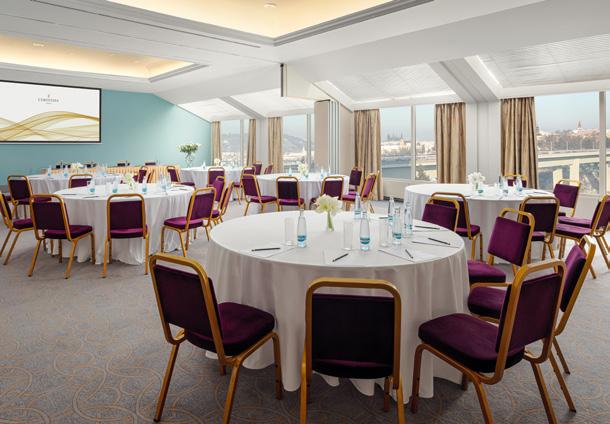
Perched high above the city of a hundred spires, Corinthia Prague is home to 539 rooms and 24 meeting spaces. Located just 200 meters from Prague Congress Centre, it is the best place for your next event or a prolonged weekend getaway


• 539 Rooms and Suites all with panoramic views of the City
• Capacity for 1,000 delegates
• Two conference centres with 24 meeting spaces and various layout capabilities
• Bellevue Hall, the highest conference centre with 180 degrees view of Prague on the 24th floor
• Natural daylight in all meeting spaces
• Built in AV equipment including the second largest permanently installed screen in the city
• Panoramic views across the city
• Large Restaurant hub with easy access to conference spaces
• Excellent gastronomy
• Apollo Day Spa top floor wellness
• 200 metres to the Prague Congress Centre offering up to 19,000 m² of additional conference space
• Bus parking facility for up to 10 buses

• 24 conference rooms
• Extensive terraces for outdoor event options
• Capacity over 1000 delegates
• Extensive dining and break options

• Spa and pool on the 26th floor
• Best MICE hotel in the Czech Republic
Bookings and Enquiries: events.prague@corinthia.com
Bookings and enquiries: events.prague@corinthia.com


Spanning the Vltava river, construction of this historic bridge began in 1357 under King Charles IV as a vital means of connection between the castle and the Old Town. The bridge is rich in legend, including the grisly fate of St. John of Nepomuk, whose statue can be seen today and is thought to bring those who touch it good luck. Visit at dawn for a truly atmospheric experience.

A must-see on any first visit to Prague, this UNESCO World Heritage Site is the largest coherent castle complex in the world according to the Guinness Book of World Records. The historical seat of power for Czech rulers, kings of Bohemia and Holy Roman emperors, uncover a history rich with intrigue, The Stag Moat – a natural ravine surrounding the castle – has recently reopened to the public and is well worth a visit.
This architectural marvel was constructed over the course of 600 years and is considered one of the most spectacular cathedrals in Central Europe. Marvel at stained glass created by Art Nouveau icon Alfons Mucha and discover treasures such as the tomb of St Wenceslas (from Christmas carol fame) and the 14th century mosaic of the Last Judgement.

Design store with contemporary local design and jewellery in Prague.



Modern design in a historic ambience. You can enjoy this refreshing contrast on a shopping spree. The “Deelive” boutique in the old town city centre presents the products made by hand, according to traditional craftsmanship, created by Czech and Slovak designers. Open daily, you can visit us at weekends.
THANKS TO ITS central location, Prague is easily reached from most European cities and further afield by both plane and train, with many budget flight options available. From the airport, the Airport Express bus is a good option to reach the city centre, as is taking the metro to the central railway station and continuing on foot from there.
For those arriving by rail, Hlavní Nádraží - Prague’s main railway station – is centrally located close to the National Museum and Wenceslas Square and is a dated example of the city’s Art Nouveau architecture. From here, you can connect with onward
rail travel to major European destinations such as Budapest, Munich and Vienna.

As the 13th greenest city in the world, Prague has an impressive public transport system. Indeed, in April 2023, it was ranked by Time Out magazine as the second best city public transport system in the world. For a more atmospheric and authentic alternative to the ubiquitous hopon-hop-off tourist buses, jump on board one of the picturesque vintage trams used on the Tram 42 route – an initiative introduced by the city’s deputy mayor in 2021. Costing just 250Kč for a day ticket (the equivalent
of roughly £10), the tram route runs in a regular loop every 40 minutes and connects the most popular attractions including Prague Castle, the Belvedere summer palace, through the Lesser Town district (Malá Strana), past the monumental National Theatre, across Wenceslas Square, and along the waterfront.
Thanks to its compact size, Prague is also easily walkable and can be comfortably enjoyed on foot, with the majority of the central districts remaining closed to all vehicular traffic. Alternatively, the metro’s ‘A’ (green) line connects major sights and is also a cheap and efficient option.
WRITER: PHOEBE HARPER | PROJECT MANAGER: DEANE ANDERTON
Lake Como (otherwise known as Lario) has been a source of enchantment for centuries. The Roman poet Virgil called it “the greatest lake”, while Como local Pliny the Younger famously said that the porch of his villa here was “always like spring.”
Although the area has a reputation as the playground of the rich and famous, with the opulent villas of the jet set gracing its shoreline alongside grand luxury resorts, (George Clooney is one of the most searched-for local residents), Lake Como truly has something for everyone.

Its unusual upsilon shape carves the lake into three distinct branches, each with its own unique offering –whether the northern basin of Colico, the southwestern branch of Como, or Lecco in the southeast. Three of the lake’s most alluring towns – Bellagio, Menaggio and Varenna – lie at the intersection of all three and are connected by a boat service operating a triangular route.
The landscape is a cultural treasure trove of neoclassical villas with breathtaking garden vistas, as seen in
Villa Carlotta and the popular filming location of Villa Balbaniello, where cypress trees soar against a backdrop of towering mountains. Explore quaint Medieval stone villages ensconced between the lake shore and the mountains, Roman ruins refashioned into upscale hotels, and historic palaces that open their rooms for public viewing.
A cradle of natural beauty, the lake and its environs provide an endlessly rewarding bounty for the outdoor enthusiast, surrounded by sloping woodlands rising up to the snowy peaks of the Rhaetian Alps. Venture up from the lake and you will encounter winding ancient pathways carving through historic villages away from the bustle of Como and Bellagio. Just one example, take the Greenway walk along the western shore, as it carves a route from Colonno to Griante with an endless screenplay of dramatic panoramas along the way.
Whether you choose to explore on foot or cruise along its mirror-like surface, Lake Como promises to take your breath away.

Outlook Travel (OT): In your opinion, what makes Lake Como such an iconic Italian holiday destination?

Ampellio Ramaioli, Founder and CEO (AR): I think Lake Como is a very diverse territory, where culture, art, sport and relaxation come together, creating a perfect mix for your ideal holiday.

OT: How does Lake Como appeal to tourists in search of luxury?

LAKE COMO TOURISM was founded in 2011 with the aim of becoming the reference point of the lake both in terms of leisure and business, offering 360° services for tourists and companies in collaboration with the best partners in the area. We speak to its Founder and CEO, Ampellio Ramaioli, to find out more about one of Italy’s most seductive locations.
AR: In my opinion, tourists are looking for luxury, love, comfort and relaxation, but also gourmet cuisine as well as hiking in nature and discovering small local businesses. All of this is possible on our lake, which is why it is a popular destination for tourists looking for luxury for their Italian holidays.
OT: How is the area embracing sustainable or environmentally friendly travel experiences?
AR: I am noticing increasing attention, mostly from accommodation facilities, in adapting themselves to European standards in terms of environmental impact. Moreover, tour operators are also increasingly moving in the direction of environmentally sustainable experiences through slow tourism.
AMPELLIO RAMAIOLI, FOUNDER AND CEOOT: What are some of the other main trends that are currently transforming tourism in Lake Como?
AR: We have noticed that the tourist season in Lake Como is getting longer every year and consequently, so is the world that revolves around tourism. The activities that are proposed for tourists are adapting and trying to offer various services throughout the year, not just during the summer season.

OT: Are there any particularly unique experiences or underrated activities that Lake Como has to offer?
AR: Only very few people know about the possibility of going from zero to 1,000 mamsl (metres above mean sea level) in a very short period of time and discovering fabulous mountains and trails with breathtaking views. In fact, it is our intention, precisely
for this reason, to promote not only the lake but also the mountains that surround it.
OT: Finally, what is your personal favourite spot in Lake Como?

AR: There are so many places to mention considering that every branch of our lake offers something unique - from the branch of Como with its luxury villas immersed in majestic botanical gardens, to Lecco with its history, wildlife and surrounding mountains,
and the upper lake, an ideal location for water sports lovers. And of course, you mustn’t forget the Lake Centre with its beautiful villages of Bellagio, Varenna and Menaggio, which are hard to describe in words alone. But if I had to choose just one place that I particularly care about, because of its silence, tranquillity and panoramic views of the entire lake while being in the midst of nature, I would choose the little-known spot of Alpe Giumello.


When you wake in your hotel room to the sound of Vespas winding their way up Medieval streets and the starlings in the eaves, as the city of Como comes to life, you will experience a sense of serenity and calm. It’s a feeling that permeates every part of Como, a haven of beauty, art culture and “la bella vita” on the shores of Italy’s most well-known lake. There is so much to enjoy while you are in Como: the breath-taking villas, beautifully manicured gardens, the churches and the art galleries. It seems like every corner has a long and fascinating story to tell. All this history lives in harmony with the modern, everyday life of a vibrant and proud Italian city, Como. The city and lake are filled with beauty, from the architecture that surrounds you, to the precious gems of towns that hug the lake shore further north. Ride the funicular to the town of Brunate that sits above Como and marvel at the city from above, with a view of the north of the lake from Volta’s Lighthouse.
Starting your day as you do in Italy, with a cappuccino and croissant in one of Como’s cafés and you will see La Gazetta dello Sport, the pink newspaper dedicated to sport that is read as a morning ritual by Italians. Football is a religion in Italy - like fashion and art, it touches

every aspect of life, and you simply can’t experience real Italian living without getting to experience Italian football.
Como has its very own football club, Como 1907, a historic club with a fantastic story to tell. The club currently plays in the country’s Serie B league, the second tier of the competition. Furthermore, since 2019 the club has been under new ownership, and it has high ambitions.
The new owners, including World Cup winning Arsenal and Barcelona legends Cesc Fàbregas and Thierry Henry, the former playing in Como’s midfield, have assembled a young, talented and exciting squad of football players with the ability to take the club forward and play at the highest level.
Como 1907 play at their home stadium, the Stadio G. Sinigaglia, which sits right on the lake shore. Built in 1927, it is one of the first and best examples of Italian rationalist architecture, designed by Giovanni Greppi and Gianni Mantero. It is named after local rowing champion and World War I hero, Giuseppe Sinigaglia.
With stunning views of the lake and surrounding forested hills, the Sinigaglia is one of the most incredible stadiums in the world. There is no other stadium that has such a breath-taking view from the stands. Situated right beside
the Aeroclub Como, the oldest seaplane flight operation in the world, you can watch the seaplanes circle above the stadium as they come in to land on the lake.


The club’s fanatical supporters are the beating heart of Como 1907. They bring passion and energy to support their team when they play in the Sinigaglia. The “curva” is alive with blue and white as the fans sing their hearts out at every game. The stadium is the place to see and be seem. As is the case in Italy, it is a way to experience a true slice of authentic Italian, Como life, from the point of view of the locals in a family-friendly atmosphere. The stadium is just a five minute walk from the city, so the whole of Como becomes involved in game day. If you really want to experience the best of Como, then you have to come to the Stadio Sinigaglia to watch a game. Join the locals as they make their way through town, stopping to eat and drink on the way, along the lake shore and through the Giardini del Tempio Voltiano for an unforgettable experience.
While the new owners are investing in the club under the direction of CEO, Chelsea and England
legend Dennis Wise, the club is also investing in the community of Como. Como 1907 is nothing without the support of the people, so the club is dedicated to giving back to the community. Contributions include funds, supports, grants and initiatives that benefit the community at all levels, under the club’s Como4como network. Rewarding the organisations that work hard to sustain local communities in need is part of the club’s mission. A portion of all Como 1907 merchandise goes back into community initiatives, so when you travel, buy souvenirs to leave a positive impact on the people of Como.
Como 1907 is living its Renaissance moment. It’s a club with an illustrious history, rooted in the people and the community that make up the club, but with a bright future full of exciting possibilities. We’re broadening our fan base, to include people from all over the world. Come and support Como football to become part of its story and see the history we are making on and off the pitch.
Where Authentic Italian Football
Meets Breathtaking Backdrops
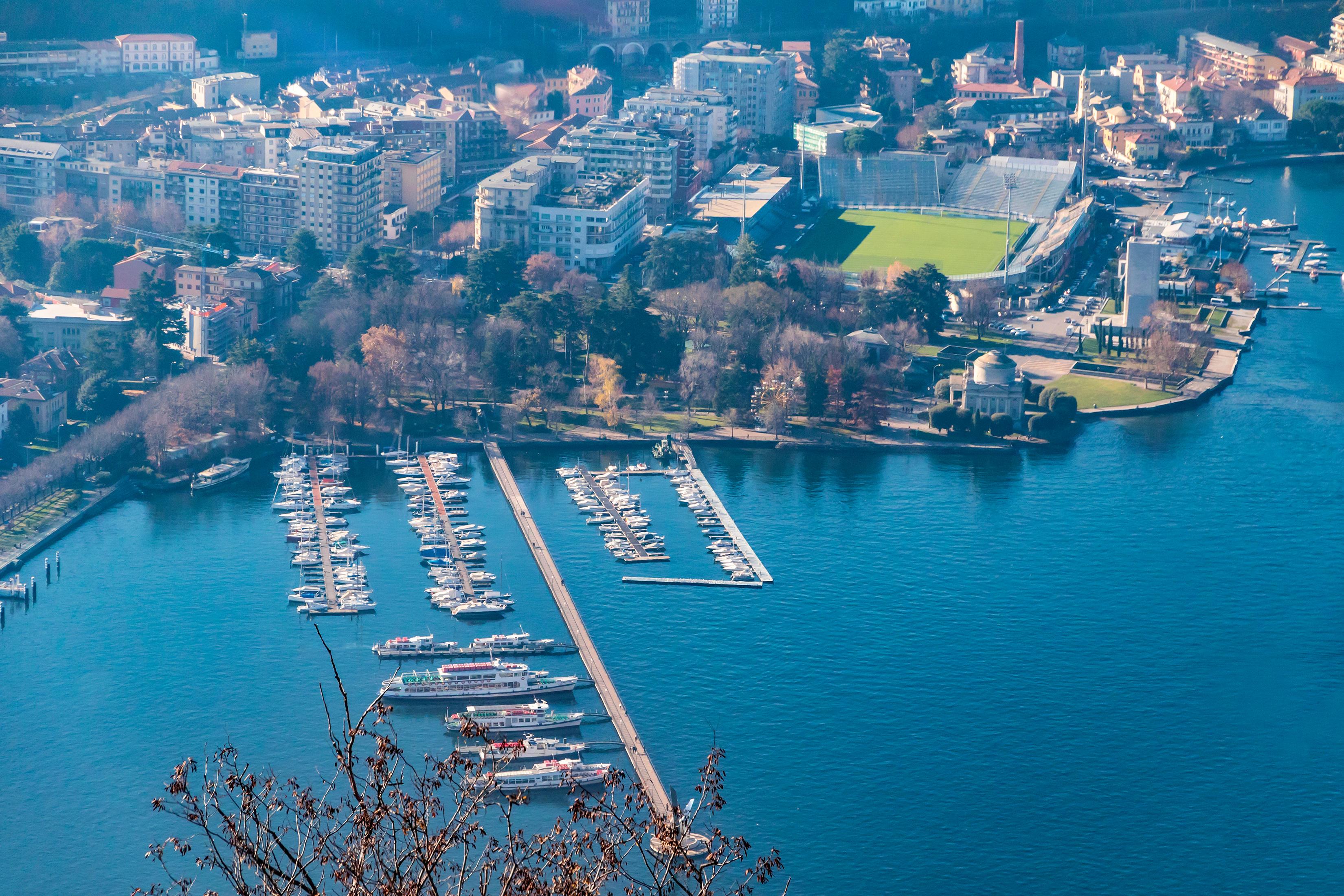
Immerse yourself in the captivating ambiance of Stadio G. Sinigaglia, nestled along the picturesque shores of Lake Como, a mere five-minute walk from Como's charming old town. This historic stadium proudly stands as the cherished home of Como 1907, a football club that holds a profound significance in the lives of Italians and remains an integral part of the Como community.

Under new ownership, which includes esteemed player/shareholders Cesc Fàbregas and Thierry Henry, Como 1907 is experiencing a remarkable renaissance, gracing the beautiful game in one of the most breathtaking locations on Earth. We invite you to join the vibrant crowd at Stadio Sinigaglia, where a warm and family-friendly atmosphere awaits. Here, you can witness the essence of authentic Italian football unfold in the world's most spectacular stadium, offering mesmerizing views of the lake. Prepare to embark on an unforgettable journey as you delve into the heart and soul of Como, immersing yourself in its rich football culture and embracing the true essence of this remarkable city.
Follow us on
COMMONLY REFERRED TO as ‘the Pearl of Lake Como’, the quaint town of Bellagio is home to some of the most Instagrammed streets in the area. All Lake Como itineraries feature a visit to this picturesque town, located conveniently between the lake’s two southernmost branches. It is highly recommended to reach Bellagio by boat, travelling from the town of Como where the slower vessels can take up to three hours. The boat journey is an experience in itself, allowing you to appreciate the sheer magnitude and beauty of the lake.
Its charming historic centre and colourful palate of buildings make Bellagio one of the most romantic destinations on Lake Como, where you can while away an afternoon strolling amongst its winding narrow alleyways and people-watching from a host of

well-reputed wine bars. Be warned that comfortable walking shoes are advised since there are plenty of steps involved in exploring Bellagio on foot. Fear not, however, as a host of gelato spots and lakeside restaurants are in plentiful supply for when you’re in need of refreshment.
Discover the picturesque neighbourhoods of San Giovanni and Pescallo and take a stroll through the stunning lush gardens of Villa Melzi or Villa Serbelloni. Bellagio’s selection of characterful boutiques is ideal for some retail therapy, while culture vultures will marvel at the Romanesque church of Basilica di San Giacomo and the tranquil Piazza della Chiesa. Thanks to its central location, from here you are within easy reach of other lakeside gems that are just a boat ride away, including Menaggio, Tremezzina and Varenna.




A source of fierce local pride, Como 1907 is an Italian football club owned by Sent Entertainment Ltd The club’s origins date back to over a century ago, where, on a small patch of grass next to the shores of Lake Como, a game of football was once played between young members of Como’s local rowing club, and an opposing team made of caretakers and Native Americans from the famous Buffalo Bill circus camped nearby.
The game ignited a local passion for football, resulting in the inauguration of the Como Football Club the following year in 1907. Today, with a rich and proud legacy behind the club’s name, Como 1907 plays in one of the world’s most scenic waterside stadiums.
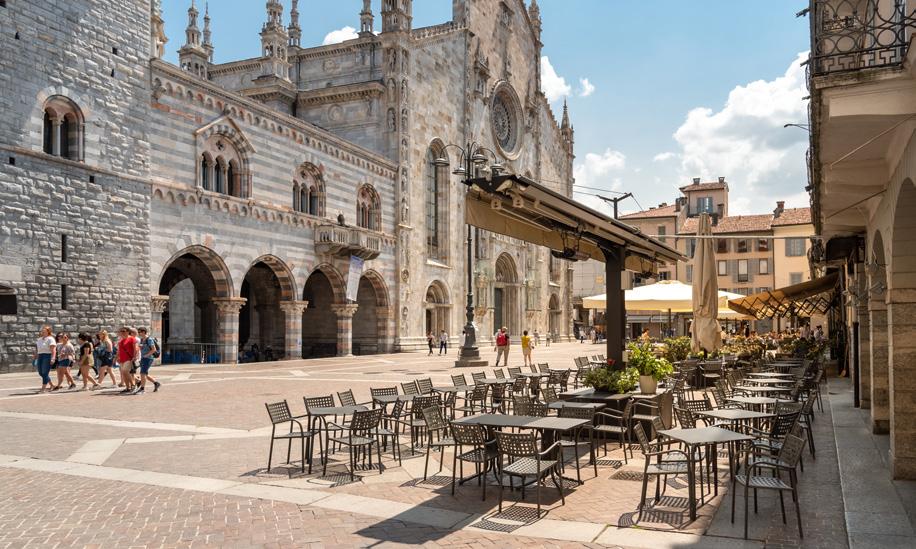
The Giuseppe Sinigaglia Stadium is an historic landmark, originally built in 1927 at the request of Benito Mussolini. It has since undergone significant renovations and stands out for its iconic ‘Curva Como’ structure. With a tumultuous history that has seen the club undergo relegation, bankruptcy, and a hopeful comeback complicated by the COVID-19 pandemic, Como 1907 is now rising phoenix-like from the ashes under new ownership and playing in Serie B with the star-signing of Spanish football legend, Cesc Fàbregas.


A quieter alternative to the towns of Como and Bellagio, Lenno is an equally picturesque village found on the lake’s western shore. Here, you will find the Villa Balbianello – a stunning location that features in both the James Bond film, Casino Royale, and Star Wars Episode II. With a stunning interior complementing its dramatic outdoor scenery, take a guided tour before heading to a breathtaking restaurant terrace in nearby Lenno.
If visiting Varenna, be sure to hike up above the town’s charming terracotta rooftops to the formidable Castello di Vezio. The castle dates back to the 13th century and was originally built as part of a series of Medieval watchtowers. Visitors can enjoy regular falconry shows and breathtaking panoramic views of the lake that are well worth the steep trek up a cobblestone path from Olivedo.



One of northern Italy’s most significant religious landmarks, this Catholic cathedral was built over the course of 400 years between the 14th and 18th centuries. Stood proudly within Como’s scenic Piazza Duomo, the cathedral is an architectural melange of Gothic, Romanesque, Renaissance and Baroque influences. Under its stunning Rococo cupola, admire Renaissance chapels and exquisite tapestries.
LAKE COMO IS easily accessible from Milan – a destination which is well served by budget airlines and a host of rail options. From here, the lake is just an hour’s drive away. Alternatively, connect to the main town of Como from Milan’s Malpensa Airport with a choice between three separate railway lines which takes approximately 40 minutes.
When travelling around Lake Como, be sure to take advantage of the many ferries available, especially for boat rides between the major towns of Menaggio, Belaggio, Tremezzina and Como for an unforgettable travel experience along the lake’s western coast. If you’re longing for a taste of luxury, then peruse options for a private boat tour where you can cruise across the lake in your own water taxi,
best enjoyed over sunset with a bottle of Prosecco.
If travelling on the water isn’t for you, then bus routes are available along the western branch. However, bus services are not frequent, so it is always worth checking in advance. Meanwhile, train travel can be a great option for travelling around Lake Como’s eastern branch, connecting

you with destinations such as Lecco and Varenna. Como is the only town on the western branch that has a rail connection, so from here, it is worth considering public transport, such as the generally well-reviewed public bus system, to continue on to further destinations.
Taxis are readily available, however, be warned that this is not the most cost-effective means of transport, although it is reliably the quickest!

Bisected by the majestic Danube River, Budapest has an undeniable vibrancy with its ruin bars and thermal spas, history, hospitality, culture and cuisine

WRITER: RACHEL CARR | PROJECT MANAGER: DAVE WEST
In the cityscape of Budapest, an architectural delight blessed with a bounty of old and modern designs, there are myriad unmissable sights to add to travel itineraries. As a city of two halves, its quirkiness reveals itself within the many layers which comprise the metropolis. Until recently, the most noticeable difference between Hungary’s capital and other city destinations was that no buildings were taller than 96 metres (m). This held an historic significance as the number 96 relates to the year 896CE, when the Magyars settled in the area. However, the new MOL Campus in the southern part of Buda stands at 143m and is the first modern skyscraper in the city – for a charge, it also has a public observation deck. Nonetheless,
two symbolic buildings that stand at exactly 96m tall – the Saint Stephen’s Basilica and the neo-Gothic Hungarian Parliament – represent the equal importance of religion and government, and likewise leave visitors stunned.
The city of two halves label does not only apply to the Old Buda and urban Pest areas which are separated by Europe’s famous Danube River, but also to a secret, subterranean world of labyrinths and geothermal springs. The maze of over 200 caverns is open to the public for spelunking (the exploration of caves) adventures. After traversing the city and experiencing all it has to offer, there are many appetising specialities such as goulash, paprikash, and Tokaji wine to replenish stamina.
• This year marks 150 years since the unification of Buda, Óbuda and Pest, three one-time settlements along the Danube River.

• The Budapest Grand Novel is a collection of stories as part of a year-long run of events to mark the city’s 150th birthday.
• Confectioners will compete to create Budapest’s birthday cake with ingredients that were available in the 19th century.
Described by many as the Queen of the Danube, Budapest is teeming with local delicacies fit for the palates of Hungarian royalty, dotted with landmarks, and boasts unique and diverse features to thrill and fascinate even the most seasoned traveller. A kaleidoscope of Neoclassical, Romanesque, Renaissance, Gothic, and Baroque Revival styles dominate Budapest’s urban vista with the iconic Széchenyi Chain Bridge linking it together. Store a memory and post an Instagrammable moment by walking across the bridge to witness the beauty of Buda and Pest - looking back and forth at each one whilst standing over the Danube is pure perfection.
As Budapest’s new tourism organisation, Budapest Brand is responsible for managing the capital’s marketing strategy. CEO, Csaba Faix, enthuses about the multidimensional aspects of the river city


Outlook Travel (OT): Can you talk us through the origins of Budapest Brand?
Csaba Faix, CEO (CF): Budapest Brand was born when two organisations merged at the end of 2020. The organisation working on the city’s image and the cultural and tourism centre became a single entity with the aim to tell stories and give memorable experiences. Budapest Brand’s mission is to connect the people who live here with the things and experiences that happen here. It gives them visibility by providing unique adventures through different events.
Budapest Brand shapes the capital’s brand and tourism strategy, and is responsible for producing valuable cultural content and organising festivals and fairs. We identify the potential of the city to create a liveable and lovable city image for residents and visitors and connect communities in a way that defines Budapest.
Our priority is to showcase the values of this city, shape and coordinate tourism in Budapest, position it as a destination and adapt it to the ever-changing environment.
OT: Why should someone visit Budapest – what defines the city?
CF: Budapest is a colourful and diverse city with a rich history, exceptional architecture, traditional thermal baths, and friendly locals, but it also has a contemporary feel and an über-eclectic vibe. Besides the grand boulevards, historic monuments, religious buildings and elegant cafés, visitors will find off the beaten path gems, such as hidden courtyards with bohemian or chic bars, amazing street art, unique designs, and clothing boutiques. Budapest has a wonderful
CSABA FAIX, CEOcombination of high culture and street life. The ‘wow factor’ is truly unexpected for most visitors.
This eclecticism is also present between the urban and natural features of the city. The Danube River divides the city into two parts - Buda and Pest - which you can easily cross with the many bridges spanning the river. Going on a river sightseeing tour makes you appreciate the city even more. Budapest has several green lungs in its centre, including Margaret Island, a recreational, car-free zone with ancient trees and ruins, a musical fountain, swimming facilities, and a plethora of green spaces. The City Park area is becoming the museum district of Budapest with longestablished classical venues and contemporary new museums, such as the award-winning House of Music. These natural spots are surrounded by urban areas and grand buildings, such as the distinguished Parliament or the historical museums.
OT: As a culturally diverse city, what type of travellers does Budapest attract?

CF: The tourism experience of
Budapest is multi-faceted to reflect our cultural diversity. On one hand, the city attracts the affluent market as there are many high-end hotels and the number of luxury properties is growing with international brands opening new hotels. We also have several Michelin star restaurants for tourists to enjoy after exploring the cultural sights or visiting the newly renovated State Opera House.
On the other hand, the city is welcoming travellers with different budgets too. Budapest is considered a very affordable destination; although prices for flying in or taking the train have increased, they are still considered affordable for visitors from the euro, pound, or dollar zones. There is a great variety of accommodation in the 3-star and 4-star categories, and you can always find centrally located short-term rentals too.
Every year, large music festivals and sporting events shape the tourism landscape of the capital. They attract a large audience that primarily visits the city to go to those events. Think of the annual Sziget music festival, the World Athletics Championship in 2023, Harley-Davidson’s 120th
anniversary, or the annual Formula 1 race. Luckily, these travellers see the potential in the city and extend their stay by a few days before or after the events.
The MICE (meetings, incentives, conferences and exhibitions) industry is also getting stronger in Budapest with state of the art venues, congress centres, and professional local suppliers, and business travellers to the city on the rise.
Budapest is becoming one of the most important hubs for river cruising in Europe. Many of the river cruises start or finish their sailings in Budapest where passengers usually spend a few extra days. These travellers are primarily from North America and Western Europe.
OT: As Budapest is a city of two halves, what is the strategy to connect the communities?
CF: In 2023, Budapest is celebrating the 150th anniversary of the unification of Buda, Pest and Old Buda. Although the city dates to Roman times (you can find the ruins of a Roman settlement here), it was in 1873, exactly 150 years ago
when the metropolis was born. The communities of the smaller towns joined together, and Budapest was formed.
We consider it vital at Budapest Brand that local communities are part of the city’s tourism and city branding strategy. We believe that these two entities (locals and visitors) are intertwined. We are creating cultural experiences, community events, festivals and fairs, and concerts that primarily target locals. We believe that if locals enjoy spending time in their city and are proud to be ‘Budapesters’, then visitors will feel a similar way.
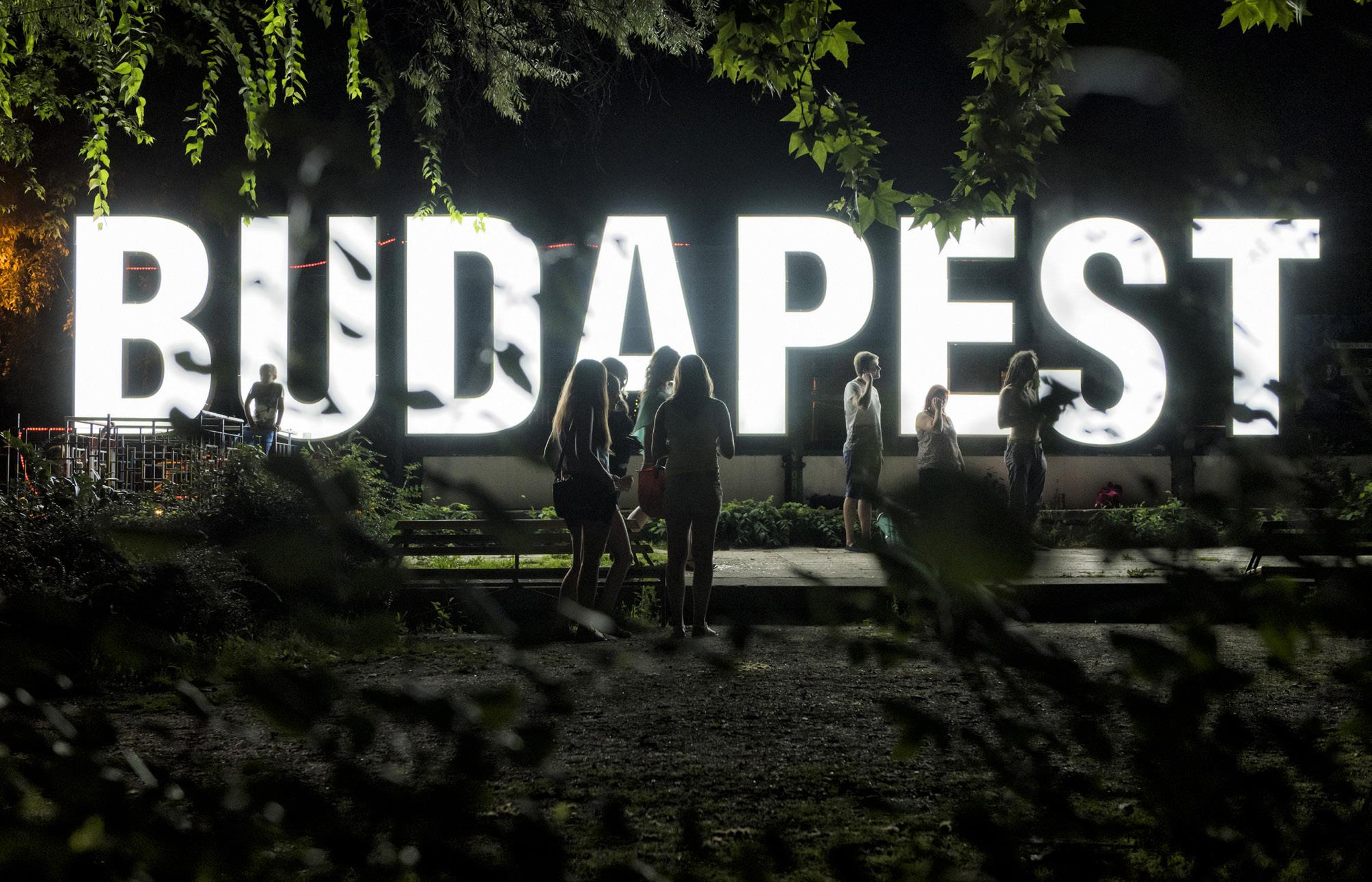
We are extending the tourism borders of the city by creating memorable experiences in districts that are not predominantly tourism focused. By doing this, we are creating local, community-based events and denoising the central areas that have a lot of tourists.
In our strategy as the cultural organisation of Budapest, we are also showcasing and highlighting marginalised groups. By supporting local street art exhibitions, alternative
music or local jazz festivals, and LGBTQ+ events, we are not only focusing on raising visitor numbers but most importantly building communities.

Our job is to help people notice how many amazing things are happening in their city during their daily routine so that they can raise their heads for a moment and marvel at what surrounds them. Since I have been working as the CEO of Budapest Brand, I have been constantly amazed by how many exciting details and people fill this city, and the amount of colourful and hidden areas that are waiting to be discovered and mapped. I think everything that is exciting in the world right now is here in Budapest in a small way.
OT: What does Budapest have to offer in terms of sustainable travel experiences, and are there any goals in place regarding this?
CF: Budapest has many green areas in the heart of the city which benefit locals and visitors alike. You can hike up to Gellért Hill, wander around the Buda Hills by taking the chairlift, or visit Margaret Island or City Park. The city has a very strong focus on green initiatives by planting more trees and making sure that new constructions
and developments do not need to cut down trees.
Public transport is wonderful in Budapest and is also very affordable. The trams, bikes, buses and the underground system allow people to leave their cars at home. The Budapest Card, the official city pass, was created for visitors to offer free public transport and eco-friendly tours including electric minibuses.
During weekends, the Pest embankment along the Danube River becomes a car-free zone. People are walking, biking, roller-skating, playing sports or grilling food by its banks. It is a wonderful initiative where locals can reclaim a part of their World Heritage City.

Upcycling is cooler than ever before. Old tenement buildings and parking lots are converted into pop up hipster bars and community spaces. At Szimpla Kert, the original ruin bar, the design is eclectic, the music is mostly local, and every Sunday they have a farmer’s market with local vendors.
There are wonderful market halls
around the city where you can sample locally grown produce and buy goods from their producers. Ecser, just outside Budapest, hosts a well-loved flea market, where objects from bygone eras find new owners. Zero waste shops and package-free stores are on the rise, and there are several design focused handicraft and arts markets around the city.
Sziget Festival, the largest music festival in Hungary, has a very strong focus on sustainability. There are also increasingly greener events in the MICE sector, and the number of vegan restaurants is also growing. As demand rises both from locals and visitors, suppliers are seeing the business potential in opening meatless restaurants and food trucks; it is not just about goulash anymore.
The rail network is quite extensive in Europe and many international trains and night trains connect Budapest with the rest of the continent. One of our goals is to have a stronger focus on sustainable travel modes in the future. We are continually working on becoming more sustainable,
focusing on local communities and finding new technological solutions that would also help travellers to be more sustainable during their time in Budapest.
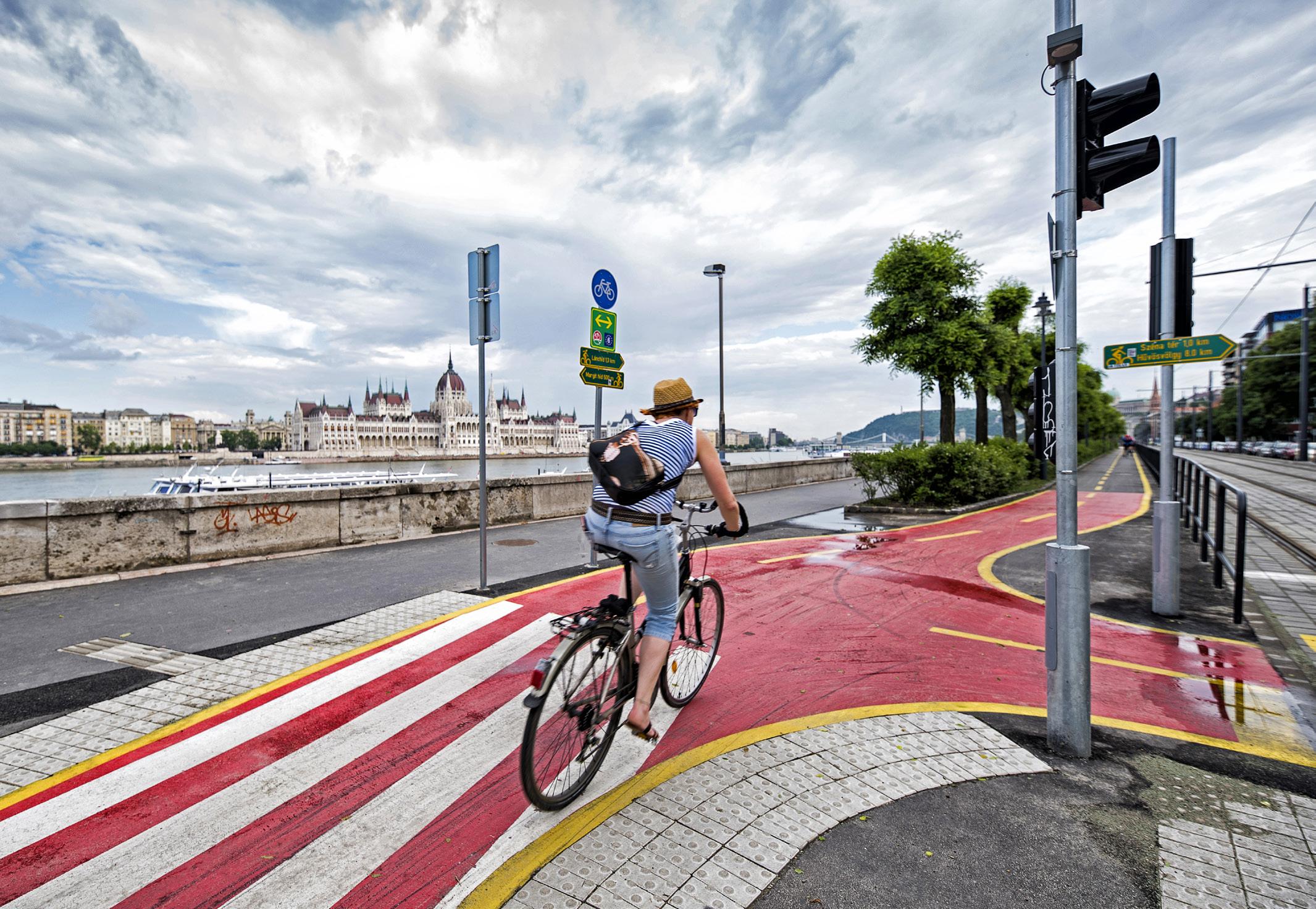
We have launched a city-shaping community movement called Budapest Tuning, a competition that encourages residents to be creative. We expect ideas for experimental projects, cultural programmes, and art productions from people living here. Based on the decision of the jury, we implement these grassroot projects with professional know-how and funding - whether it’s an outdoor action, a public space creation, community building or the installation of new green areas.
OT: What trends are currently transforming tourism in Budapest?
CF: Artificial intelligence (AI) and new
digital tools are shaping the marketing of Budapest. The beautiful shots of World Heritage Sites will simply not be enough in a few years’ time. Travellers are looking for unique experiences that they cannot find elsewhere. We are constantly looking at these unique experiences and locations, and try to highlight them in our marketing. We have partnered with The Trip Boutique, a travel tech company that offers hyper-personalised travel itineraries based on the visitor’s preferences and styles. We need to offer travellers feelings and vibes that they can only feel in Budapest, and that are also authentic to the city.
As for tourism in general, we need to carefully observe what other big cities are doing about overtourism as we do not want to become the next overcrowded tourist city in Europe. Sustainability and being more
environmentally cautious are not only trends that transform tourism globally, but also sources of the world’s survival.
For many years, there has been a shift from Budapest being a party city to a world-renowned cultural destination. Service prices (food and drink and mid-tier hotels) are still quite affordable in Budapest, which benefits many party-tourists. After all, these stag and hen party visits are shifting to other cities outside of Hungary and even the European Union.
OT: Are you optimistic about the future of the tourism industry in Budapest, particularly with regards to bouncing back from the COVID-19 pandemic?
CF: Budapest’s tourism industry, along with many other city destinations, has
experienced the negative effects of the COVID-19 pandemic, the financial crises, the increase in gas prices and the war in Ukraine, which is our neighbouring country.
The situation caused by the pandemic forced us to re-evaluate our ideas. We had to come up with ideas that were born in the spirit of adaptation and invention in a period that did not promise to be easy from
an economic point of view.
Despite all the difficulties, the number of visitors is back to the levels of 2019, with some months even surpassing pre-pandemic levels. New hotels are opening, big congresses are booked for the coming years, and with many international events this year alone, we are expecting a very good year in tourism.
There may be financial
uncertainties in our local governance, but we are optimistic that tourism will remain a crucially important part of the Hungarian capital’s economy.




FOR LUXURIOUS DINING...

With two Michelin stars, Stand is the ultimate in contemporary gastronomy. Combining the flavours and textures of their Hungarian roots, the restaurant’s two chefs skilfully reinvent classic dishes.
FOR SUSTAINABLE SUSTENANCE...
Sustainability aligns with high-quality cuisine and core values at Salt . Using local and organic ingredients for a low ecological impact, the Michelin star restaurant sits within a boutique hotel, with a menu created from Hungarian recipes.


FOR A STUNNING PANORAMA...
The BalloonFly observation deck is a red and white striped hot air balloon anchored in Liget City Park. It works as a 360° viewpoint at 150m, accommodating 30 visitors at a time.

Experience life behind the iron curtain at the Budapest Retro Museum by time travelling back to communist era Budapest. Patrol in a real Lada police car, eat treats in a café from a bygone era, or find out what the first Hungarian astronaut of the SovietHungarian space flight took into space.
FOR MODERN OPULENCE…
Housed in the Drechsler Palace, on the UNESCO World Heritage Site of Andrássy Avenue, W Budapest is located across from the State Opera House. The surroundings are enough to impress before stepping inside the hotel which blends modern design with art deco and boasts a pool and spa.

FOR A 5-STAR STAY ON THE DANUBE…




The Aurea Ana Palace Hotel embodies the cultural richness of Budapest with its Neoclassical style. Centrally situated on the banks of the Danube River, it is an ideal place to start the day with its breakfast buffet and gym.

LOCATED ON THE greener Buda side of the river, in the XI District, lies Bartók Béla Boulevard – a cultural hub among the top 10 of Time Out magazine’s coolest neighbourhoods. Accessible by tram or metro, the treelined Bartók Bela Boulevard is brimming with galleries, exhibitions, local cuisine, and twice a year it hosts the ELEVEN art festival.

If you are exhausted by the extensive list of activities, a trip to the Art Nouveau Gellért Baths might be in order. Set in an elegant palace, the baths are both beautiful and historical, and the relaxing experience of a soak in geothermal pools has a natural healing power. The spring water, discovered in the 15th century, is not the only relaxation method on offer, as massage treatments, saunas, and a sunbathing terrace overlooking Gellért Hill are all there to enjoy.
Trendy cafés and bars such as Szatyor Bar, an updated ruin bar, attract a slightly different crowd to the usual spots in the party district. Duck confit and sous-vide venison leg along with craft beers are among Szatyor’s culinary repertoire. Attached to Szatyor Bar is Hadik, a legendary café that was once a haunt of pre-World War II Hungarian bohemian writers and poets. Today, it has a more contemporary décor, but its mission is the same - a meeting spot for Budapest’s artists.
For an outdoor jaunt, you will find Feneketlen-tó (bottomless lake), surrounded by greenery and with an abundance of fish and birdlife as the urban park has given over to nature. With a tennis club, a concert stage, outdoor gym, playground, and jogging course, there is plenty of space for recreation.






As a Medieval royal residence, Buda Castle has seen many invasions from the Mongol Empire in the 1240s to the Ottomans of the 16th century, the latter of which left the Gothic and Renaissance complex destroyed. Today, it is a Neo-Baroque palace and one of the most Instagramable castles in Europe. Learn about the history of Hungarian kings and discover the sprawling Buda Castle District which houses the Hungarian National Gallery, the Budapest History Museum and the National Széchényi Library.

The park has endless leisure and cultural opportunities, and at 100 hectares, this public space is a fusion of modern standards and the park’s 200-year-old heritage. Incorporating the NEO Contemporary Art Space, House of Music Hungary, Museum of Ethnography, a sensory garden, lake, bird trail, sports facilities, and many more attractions, the park offers a wide range of institutions and green spaces alike.
Full of artefacts and collections, there is an extensive feast for the eyes at the museum. Various exhibitions of prominent artists are on display throughout the year – currently, Hungarian painter Csontváry is here until mid-July. The graphics collection includes outstanding masterpieces by Cézanne and Van Gogh, whilst other parts of the museum house an Egyptian and an Old Hungarian department. The building itself is a distinctive Neoclassical design with different chambers and halls evoking various eclectic architectural styles.

ARRIVING IN BUDAPEST into Budapest Ferenc Liszt International Airport, in the southeast region, is quick and easy. The large hub serves budget airlines Wizz Air, easyJet, and Ryanair which all fly direct from the four London airports, totalling 32 flights per day. Spain, France, and Italy also operate non-stop flights from their main cities.
At departure, the Universal Airport Hub in the centre of the city provides a stress-free experience of storing luggage and allows you to print boarding passes and luggage tags, tick off the check-in part of the journey, and purchase any last-minute souvenirs when it’s time to depart. Renovated metro stations make transfers to and from the airport more comfortable. A direct airport to city centre express bus service is also available.
The transport system offers many options to experience Budapest while saving the tread on your trainers. An eco-friendly mode of travelling around is by renting a MOL BUBI bike, which even has a holder for mobile

phones when you need to digitally capture the essence of the city.
The main attractions in the City Park are discoverable by hop on-hop off electric buses that can enter areas which are off limit for cars. The eco-friendly vehicles take visitors around the Heroes’ Square, House of Music Hungary, Vajdahunyad Castle, and Széchenyi Baths.


The Budapest Card allows free public transport, free Pest and Buda guided walking tours, and free admission to both the Lukács Thermal Bath and the Pálinka Experience Museum, along with 30+ tourist attractions and services and discounts of up to 50 percent.



From the moment you touch down and step off the plane in Fiji, one of the first greetings you’ll hear everywhere you go is “Bula”. This exists as more than just a friendly ‘hello’ in the local language –instead, it is a wish for happiness, good health, and the very energy of life itself. In Fiji, happiness comes naturally. It oozes from every facet of the island’s extraordinary culture and warm communal spirit. From the fresh diet, rich heritage
and stunning natural surroundings, its inhabitants are experts in sourcing joy and remain unrivalled in creating unforgettable holiday experiences for its copious visitors. A resplendent utopia located deep within the belly of the South Pacific, Fiji is an archipelago of more than 300 islands, famed for rugged landscapes, palm-lined beaches and coral reefs with clear lagoons. Boasting an enviously warm climate and even warmer people, it is a destination like no other.
WRITER: ED BUDDS | PROJECT MANAGER: DEANE ANDERTON

A dazzling treasure of the South Pacific Sea, Fiji is sun-soaked and sensational, from its dreamy coastlines to its unique culture and exquisitely vibrant ambience
With an amazing array of fresh produce, sensational seafood and exotic flavours, Fiji is an exciting haven for anyone who loves decadent cuisine and sampling fresh flavours. Travellers can devour sweet pineapples, discover the delights of healthy nama seaweed salad, or eat their way to vegetarian curry heaven.
Fiji provides a serene sanctuary for the ultimate combination of relaxation and self-care, with tranquil
settings and a swathe of luxurious resorts to choose from. This island paradise harmonises the pillars of food, fresh air, natural splendour and warm hospitality. With its multifaceted offerings, encompassing extraordinary natural beauty and cultural immersion, Fiji caters to a broad spectrum of interests and ensures that there is something for everyone to fall deeply in love with.

TOURISM FIJI, INITIALLY known as the Fiji Visitors Bureau, is the national marketing arm of the Fijian Government. It was established in 1984 with the purpose of promoting and marketing Fiji as an idyllic tourist destination. The organisation works closely with the Fijian government and industry stakeholders to develop and enhance the nation’s blossoming tourism industry.
The initial vision of the organisation was to position Fiji as a more desirable and unique travel destination, with the goal of attracting international visitors and stimulating economic growth via tourism revenues.
In the early years of its inception, Tourism Fiji focused on developing marketing campaigns to raise awareness about the island as an emerging tourist destination. The company worked diligently to highlight the country’s stunning array of pristine beaches, crystal-clear waters, vibrant coral reefs, lush landscapes and unique traditions. The overarching goal was to differentiate Fiji from other comparative destinations in the South Pacific, by creating a distinctive image of paradise.
As a direct result of the organisation’s ongoing success, the Fijian tourism industry contributes significantly to the national economy as the country’s largest foreign exchange earner.
Outlook
Brent Hill, CEO (BH): Today, the organisation aims to promote Fiji as a premier travel destination to existing and emerging markets across the world. We do this by showcasing the country’s natural beauty, unique experiences and vibrant culture.

We also aim to foster sustainable tourism practices that benefit local communities and preserve Fiji’s natural environment. We recognise the vital importance of striking a balance between tourism development and environmental conservation to ensure the long-term viability of the industry and the best outcomes for Fiji’s people.
Over the years, Tourism Fiji has expanded its promotional efforts beyond traditional marketing channels. We have embraced digital marketing strategies, social media platforms, large-scale partnerships, activations, and collaborations with travel agents and airlines to reach a wider audience and increase visitor arrivals.

Tourism Fiji is also actively engaged in partnerships with the private sector, including resorts, hotels, and tour operators, to develop the destination further, enhance the overall visitor experience and promote tourism-related businesses in Fiji.

Mana Island Resort & Spa – Fiji is located 32km west of Nadi in the heart of Mamanuca group against a tapestry of lush tropical gardens. The island is adorned with natural white sandy beaches and crystal blue rich coral waters.



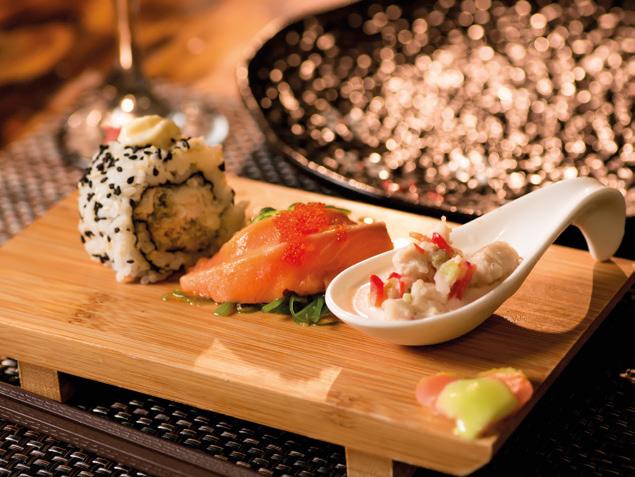








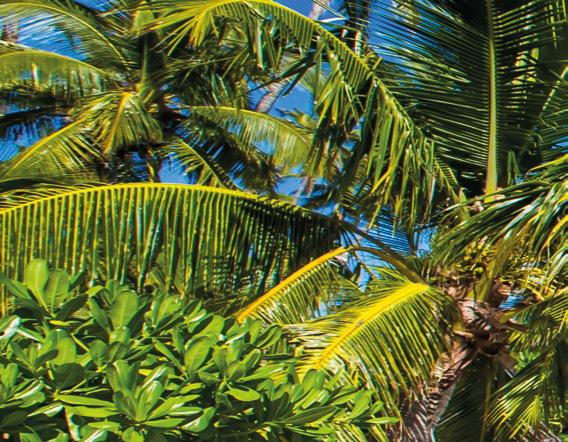


To get to and from the island, guests can enjoy a comfortable 90 minute catamaran ride that departs from Port Denarau, or the faster alternative of a 15 minute flight via helicopter. The Resort caters to a variety of international guests, features an extensive range of accommodation, offers culinary delights at a number of restaurants, two large fresh water swimming pools, fitness gym, kids club, nanny service, spectacular diving, great snorkelling and complementary daily activities with cultural shows. Get rejuvenated at our self-rated 5-star Mana Spa with Fijian style technics massage which will leave you feeling relaxed and in good spirits.
The perfect location for an unforgettable magical wedding, Mana Island Resort & Spa - Fiji offers magnificent panoramic view of our seaside chapel or on one of our awarded beaches is the perfect place to say “I do”.

The resort promotes sustainable environmental projects such as turtle conservation, tree and coral planting to sustain our natural beauty.




Mana Island R ort & Spa – Fiji o s a unique exp ience, giving ev yone a magical holiday.
OT: Why, in your opinion, should someone visit Fiji, and what for you defines the country?
BH: There are incredible accommodation options in places so beautiful they will take your breath away. But, from my perspective, Fiji embodies the essence of happiness in its purest form – and this is our key point of difference from other island paradise destinations. Here, happiness truly comes naturally and effortlessly. This is evident in how people live, in their deep familial bonds, the culture of sharing, their connection to nature and the ability to live in tune with the seasons. Fiji captivates visitors with its pristine
natural environment, including stunning beaches and lush forests, which reminds them of the joy of connecting with nature. Adventure seekers find exhilaration in Fiji’s diving, waterfalls, and thrilling activities. Additionally, the warm hospitality of the Fijian people fosters a sense of belonging and happiness through a culture that makes all visitors feel at home. In Fiji, you enter as a visitor but leave as part of a new family, or what we call ‘Vuvale’.
OT: As a culturally vibrant nation, what type of travellers does Fiji typically attract?

BH: Fiji has a magnetic pull on a diverse range of travellers due to our own diversity of people and environments. We attract beach and resort enthusiasts, honeymooners and romantic getaways as well as adventure seekers, cultural explorers, eco-tourists, nature lovers, and family vacationers. We also appeal to luxury seekers, as we have some of the most stunning luxury properties in the world, many of them offering a sense of seclusion and privacy that’s hard to match. Fiji has also welcomed quite a few celebrities who love to get lost on its secluded islands.
Our appeal extends from young travellers seeking excitement to multigenerational visitors in pursuit of shared experiences. These examples merely scratch the surface of the kinds of travellers Fiji attracts.

OT: What does Fiji offer in terms of sustainable or eco-friendly travel experiences? Do you have any environmental goals in place?
BH: Tourism Fiji has taken significant steps to promote responsible tourism practices and safeguard Fiji’s environment and culture. Our dedicated Sustainability Officer spearheads our sustainability initiatives, which aim to encourage operators to adopt environmentally friendly practices and support local communities.
This year we partnered with the Pacific Recycling Foundation to raise awareness and promote recycling initiatives within the industry. As a result, Marriott Fiji became a part of the I-Recycle Hub initiative which will see specially designed bins built and placed in pilot locations at the properties. The bins require sorting at the disposal stage with the aim to promote recycling. This collaboration aligns with our vision of responsible waste management and environmental stewardship.
As a destination, Fiji places great importance on marine conservation, sustainable accommodation, communitybased tourism, protected areas and national parks. Our focus on sustainable development ensures that tourism in Fiji goes hand in hand with preserving the environment, empowering local communities, and fostering long-term sustainability.
Just a few examples include Six Senses Fiji in
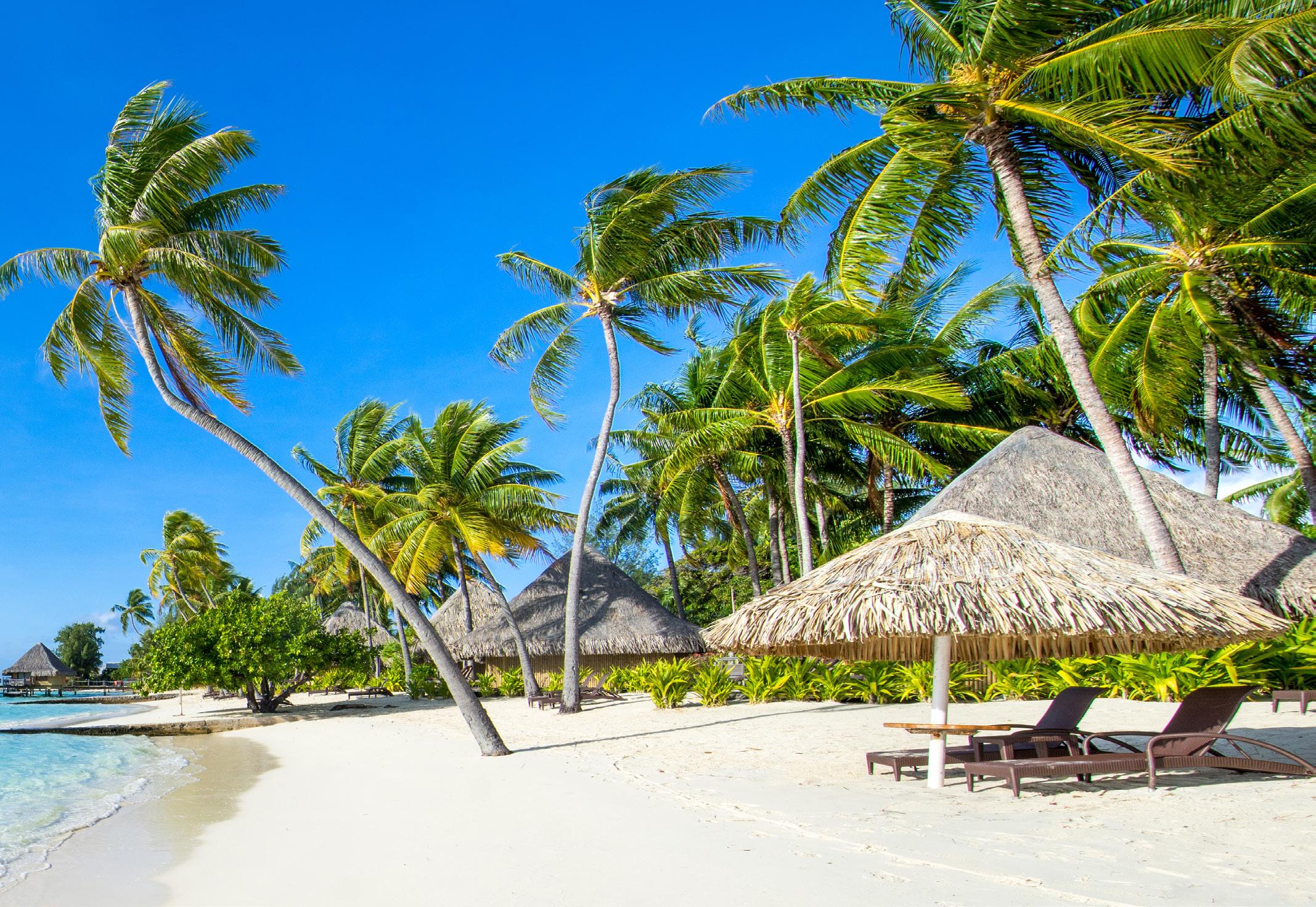
the Mamanuca Islands, which offers eco-friendly accommodation powered by solar energy. It prioritises organic produce, protects local wildlife, conserves rainwater, practices composting, and creates natural cleaning products. The hotel also has a Sustainability Fund which supports education, disaster relief, renovations, and provides clean water and medical equipment to communities.
Plantation Island Resort is dedicated to marine conservation and sustainability. It nurtures giant clams, engages in seaweed farming, and participates in mangrove planting. In addition, it implements initiatives to protect reefs and restore coral, promote eco-friendly travel, and involve guests in clean-up campaigns. The resort has also banned single-use plastic shopping bags and eliminated plastic straws.
Koko Savusavu in Northern Fiji provides sustainable accommodation focusing on organic practices. It incorporates farm-to-table principles, engages in beekeeping, and participates in the Fiji Tree Planting Initiative. Rainwater harvesting has also been implemented, and the hotel directs plant-based food waste to compost, minimising waste and resource utilisation.
This is just a taster of the sustainable efforts taking place in Fiji’s tourism industry, driving growth alongside care for our natural resources and protection of our culture.
OT: What recent trends are currently transforming tourism in Fiji?
BH: Fiji has seen remarkable growth since reopening its borders in a post-COVID-19 era, with tourists spending more, extending their stays, and expressing higher satisfaction levels. The demand for flights and accommodation has been strong, leading to increased profitability and greater industry confidence. Even during traditionally slower periods, there has been a surge in demand, indicating high interest in visiting Fiji.
The success of the Investment in Tourism Summit earlier this year showcased the growing interest in expanding the country’s tourism sector, with exciting new projects discussed. Additionally, the rise in business and conference travel highlights the trend of combining work and leisure experiences.
The evolving landscape of travel reflects a global shift in consumer behaviour towards sustainable and meaningful travel experiences, which we are absolutely seeing in Fiji. Tourists today seek authentic encounters, connecting with local communities, exploring beyond resorts, and engaging in new activities. To meet these new consumer demands, the industry continues to embrace sustainable practices and develop new experiences that allow our visitors to immerse themselves more deeply in our culture and environment.
OT: Are you optimistic about the future of the tourism industry in Fiji, particularly with regard to bouncing back from the COVID-19 pandemic?
BH: The future of Fiji’s tourism industry looks very promising, as we continue to bounce back from the challenges posed by the COVID-19 pandemic. In 2022, we achieved a significant recovery, with 71 percent of pre-pandemic visitor arrivals returning and generating 73 percent of tourism earnings. This positive trend has continued in 2023, with the first quarter surpassing pre-pandemic levels. Fiji is now on a path of growth and renewal.
Since reopening, Fiji has embraced more than 900,000 visitors. Among these, our Australian friends hold a special place as a crucial market for us. We received the highest number of Australian visitors ever in Fiji during December 2022. Meanwhile, our Kiwi mates have also been flocking to our shores in record numbers from New Zealand, and we’re delighted to witness growth from the UK, Europe, and the revitalised Asian markets too.
Recently, we celebrated the return of flights from Tokyo, Japan, Hong Kong and China, after a three-year absence. We are also witnessing a monthly increase in Canadian arrivals, thanks to the introduction of direct flights from Vancouver. The opening of a new route from Canberra in July 2023 was also very welcomed.
Increasing visitor numbers and new flight routes demonstrate a strong recovery for Fiji’s tourism industry, providing optimism for the future. This is evident in the investments that are currently underway, adding to the hotel inventory and experiences Fiji has to offer. All things considered, these are exciting times!


TokorikiIslandResortisFiji’shighestratedromantic, boutiqueresortwithwarmFijianhospitalityanda caringattentiontodetail.TheperfectFijidestination foryourhoneymoonorchild-freeescape.
FeelthefusionofcontemporaryandFijianstyleofthe ‘freestanding’luxuryVillascompletewithapersonalpool, tropicaloutdoorshowersandenvelopedinlushtropical gardens.
Dineunderthepalmtreesonaromanticoceanfrontdeck withdailychangingSouthPacificandAsianfusion menusorenjoyaspecialeveningof“Teppanyaki”atthe awardwinningOishiirestaurantcomplementedbyan extensiveglobalwinelist.
ThereissomuchtodoatTokorikiIslandResort,energize withtennis,exploreislandplantswithancienthealing propertiesonaguidednaturewalk,visitthenearbylocal
Yanuyaislandvillage,experienceatraditionalkava ceremony,meettheFijianladiesatthehandicraftbeach marketsandreceiveaheartywelcomefromtheprimary schoolstudents.DivethewonderfulFijiwaterswiththe Paditeam,snorkelthestunninghousereef,escapeona 4hrsecludedislandpicnic,relaxpoolsidewithacocktail orunwindwithasensationalunlimitedmassageretreat.
LocatedintheidyllicMamanucaislandsFijiandeasily accessedbyhelicopterin15minutesdirectfromNadi airportor1hourbyprivatespeedboatfromPortDenarau Marina.
www.tokoriki.com
/Tokoriki
/tokoriki_island_resort

FOR AN IDYLLIC SANCTUARY IN THE MAMANUCA CHAIN...
Mana Island Resort is surrounded by turquoise seas, coral reefs and white sandy beaches. The resort has an array of accommodation options ranging from traditionally styled Island Bures with outdoor showers to Oceanfront Suites overlooking the stunning South Beach.

FOR FIJI’S HIGHEST-RATED ADULTS-ONLY RESORT...

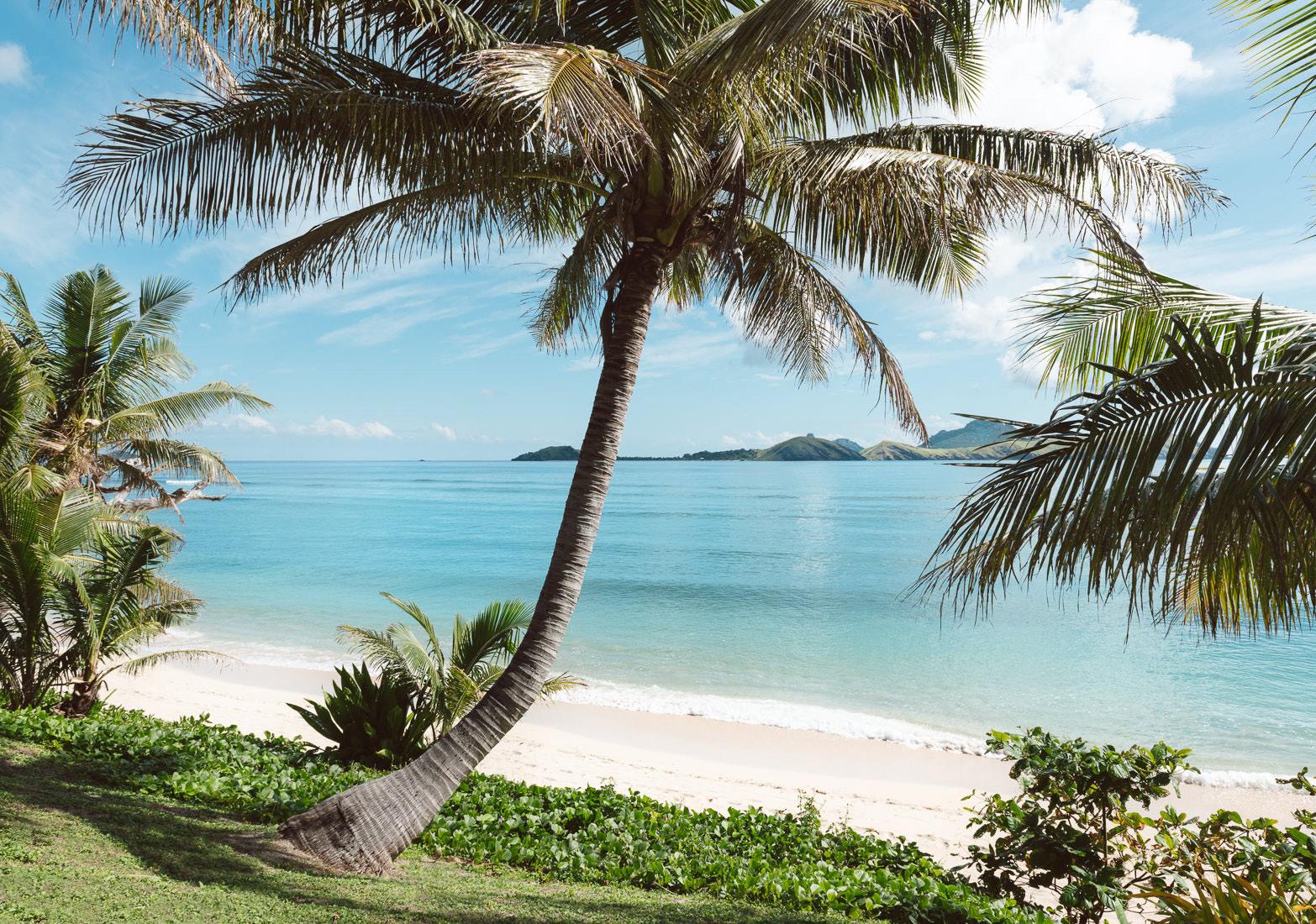
Tokoriki Island Resort is a relaxed luxury island setting with a maximum of just 72 guests, famed for being the best romantic beach vacation in Fiji. With warm hospitality and caring attention to detail, it is the perfect destination for your child-free island escape or honeymoon.
FOR YOUR OWN PERSONAL PARADISE...
Shangri-La Yanuca Island offers the essence of an exclusive island hideaway yet is conveniently connected to the mainland by a private causeway. The 443 oceanview guest rooms take their inspiration from a traditional Fijian village featuring rich elements of local culture and nature’s mesmerising beauty.
FOR SUVA’S NEWEST BOUTIQUE HOTEL AND APARTMENTS...
Toorak Central
Toorak Central, located a mere minute’s walk from the Suva CBD, has five studios and two fully amenitised, furnished one-bedroom apartments for overnight or short term stays. Free parking is available for in-house guests and customers. Call 2296380 or 2293119 for bookings or enquiries. Within the building, you will find élevé restaurant - an all day dining pizzeria and cafe open for breakfast from 7am right through for dinner until 9pm daily. Call 2296388 for more info. There’s also Bliss spa, offering massage treatments, facials, waxing, manicures, pedicures and more. Call 2296390 for bookings or more info. Fin Prive Whisky & Champagne bar is open from Tuesday to Sunday. Call 2296391 for more info.












Located in Fiji, Volivoli Beach Resort is the premier dive resort in the South Pacific. A family owned and operated resort that provides a unique and personal experience, Volivoli Beach Resort offers a variety of accommodation options and is a 4-star boutique resort with fine dining, and unparalleled world class diving experiences. With 32 Villas, three bars, two restaurants, a day spa, a dedicated dive and fishing fleet as well as an onsite state of the art dive training facility - Voliovli Beach Resort offers couples and the soft adventurer a truly memorable and authentic Fijian experience.
volivoli.com







Welcome



SURFING IN FIJI is synonymous with world-class waves, capitalising on its South Pacific Ocean location as a swell magnet for surfers who seek epic tropical reef thrills. With Fiji’s welcoming warm waters, uncrowded surf breaks and selection of waves to suit all skill levels, many find it hard to say no to a surf trip in this idyllic location. Fiji’s famous waves have featured in many prestigious international sporting competitions and are a bucket list experience for the travelling surf enthusiast.
Restaurants, Tavarua Rights, and the world-famous Cloudbreak, are just a few of the well-known surf breaks that await intrepid adrenaline seekers. While most of Fiji’s surf breaks are found on reefs, there are a few beaches and surf resorts on Viti Levu where you can learn basic skills or
improve your technique.
The most popular local spot is the Reef Lighthouse, situated just a short five-minute boat ride from Fiji’s capital, Suva, and best experienced at high tide.
Natadola Beach and the Sigatoka sand dunes are two prime examples of beginner’s locations where you can easily learn to surf with one of Fiji’s expert surf tour operators, such as Fiji Surf Company, Matanivusi Eco Beach Resort and the Fiji Beachhouse on the famous Coral Coast.
For those searching for Fiji’s secret or lesser-known breaks, head north to Qamea Island. These towering waves are generally at their best during the island’s stunning summer months from December to April.




Discover a tropical beachfront paradise on Fiji’s main island of Viti Levu. Embracing the pristine white sands of Natadola Beach, Yatule Resort & Spa offers an unforgettable experience on one of the world’s most spectacular coastlines. Greeting you with beautiful Fijian smiles and famous hospitality, our attentive staff ensure that every aspect of your stay is relaxing. Enjoy beautiful ambience with modern tropical architecture blending harmoniously into the natural environment. Our resort features a glimmering pool, day spa as well as a signature restaurant with exquisite views of Natadola Beach. See for yourself why Natadola Beach is regarded as one of the world’s finest beaches and is consistently voted as one of the Top 10 Beaches in Fiji! yatulefiji.com


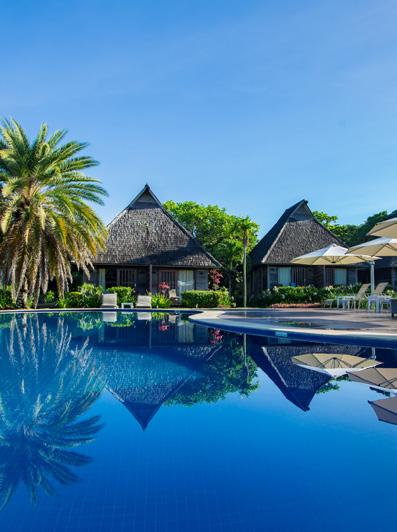










Fiji Hideaway Resort & Spa is a 3.5-star resort hotel on Fiji’s Coral Coast, only 90 minutes’ drive from Nadi. The resort offers traditional Fijian-style accommodations and great leisure facilities directly on the beach. The WiFi is free and available in public areas. Accommodation is in traditional bures (bungalows) in the gardens or with views of the sea. There are also a number of oceanfront villas. All of the spacious accommodations have been decorated in a contemporary style, many with a balcony or a unique indoor /outdoor bathroom.
Visit us today at fiji-hideaway.com



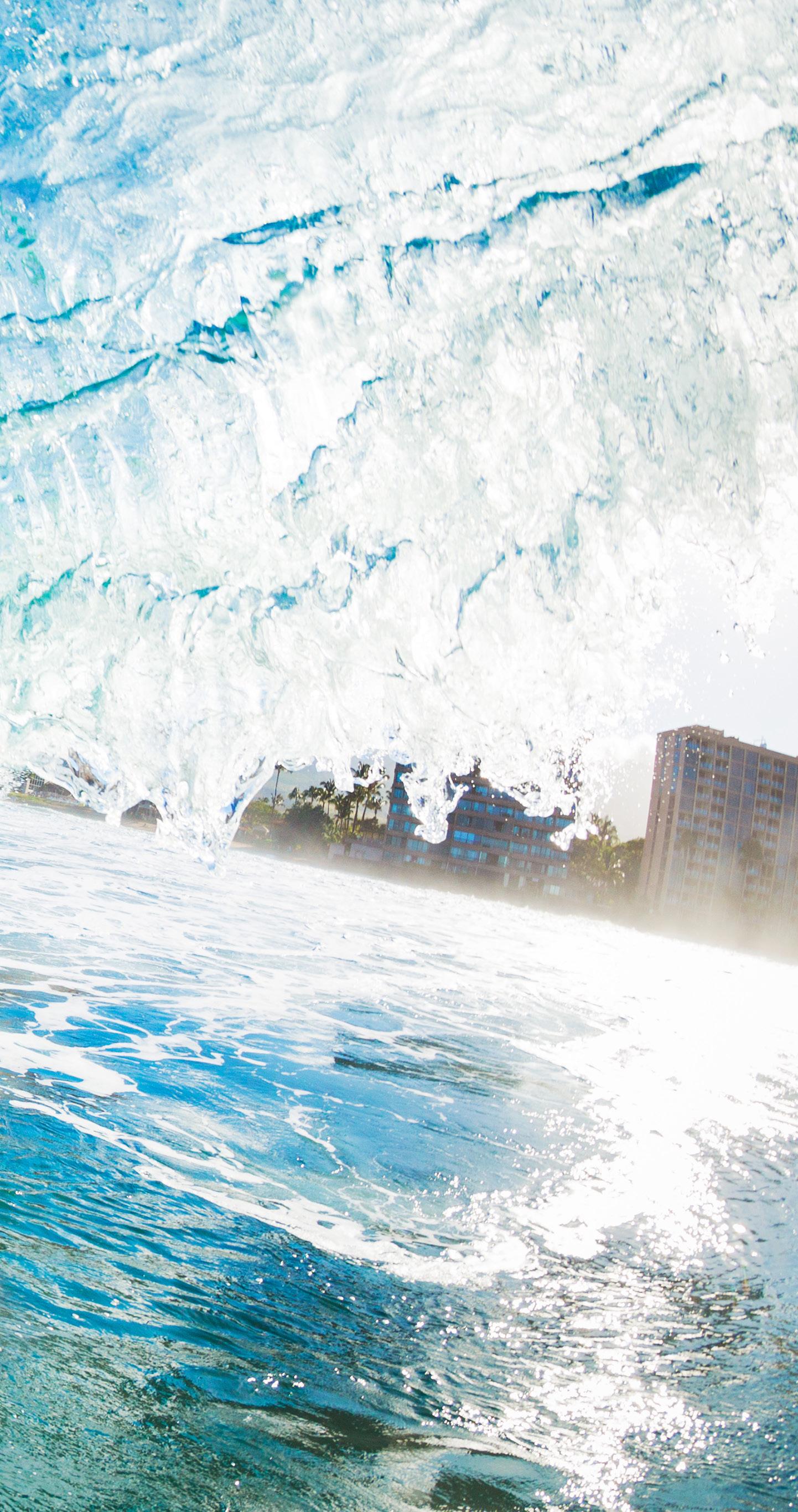
Wakaya Island is home to the legendary Wakaya Club and Spa, an exclusive and intimate 10 “bure” (suite) beachfront resort with two spectacular private villas. Wakaya Island is abundant in dense tropical forests, stunning beaches and surrounded by a Marine Protected Area, home to vibrant coral reefs and a plethora of ocean life.
Our commitment to you is to ensure your stay at the Wakaya Club & Spa leaves you full of wonderful life-long memories. Whether our guests seek to build or strengthen relationships, focus on health and well-being, be adventurous, experience a rich culture, or all of the above and more. Our team is ready to welcome and care for you.


This marine hotspot lures avid divers and adventure seekers to experience the famed Beqa Lagoon shark dive. With stringent safety measures assured, expert local dive operators facilitate exhilarating face-to-face encounters with these wondrous creatures in their stunning natural habitat. Keep your eyes peeled for bull sharks, whitetip and blacktip reef sharks, and even tiger sharks.

Snuggled in the lush foothills of the Nadi Mountain peak, the Garden of the Sleeping Giant delivers a rewarding day trip for any keen nature enthusiast. These gorgeous gardens overflow with botanical beauty and spotlight more than 2,000 species of orchids, as well as a tranquil lily pond teeming with tadpoles and frogs.

One of the top tourist attractions in Nadi, the visually staggering, rainbow-hued religious complex is the largest Hindu temple in the Southern Hemisphere and ensconces a steady stream of devotees who travel in their legions to admire the impressive Dravidian architecture. The temple is dedicated to the god Mungan, depicted by the wooden statue from India housed in the main atrium.

GETTING AROUND 333 islands sounds extremely daunting... but not in Fiji, where the options are plentiful.


Paved highways encircle the two biggest islands connecting villages, towns and cities, making it easy to travel by road. Most hotels can arrange airport transfers, or alternatively, you can avoid any stress by pre-booking your private transfers through local inbound operators and tour companies.
Buses are a cheap option for trips to the Suncoast, Lautoka, the Coral Coast, Pacific Harbour or Suva on Viti Levu and most inter-city buses travelling the Queen’s Highway make regular stops at Nadi International Airport, as well as a multitude of small towns along the way.
Elsewhere, it’s hard to miss the four-seater yellow taxis lined up outside the Nadi Airport arrivals terminal. This
metered service bestows an easy option for short trips to Nadi, Denarau and Lautoka.
Flying is by far the fastest and easiest way to travel off Viti Levu, with the stunning added bonus of bird’s-eye views of the islands. Fiji Link and Northern Air, Fiji’s domestic airlines, fly to most small airports around the country.

The most affordable and popular way to see the islands, however, is by sea. Escape to the stunning Mamanuca and Yasawa islands with passenger ferries that sail daily out of Port Denarau. For the cost-conscious explorer, there’s always the inter-island local roll on-off ferries to consider, as this no-frills option offers cheap travel between Viti Levu and Vanua Levu, which is also ideal for self-drives as you’re able to take your car onboard.
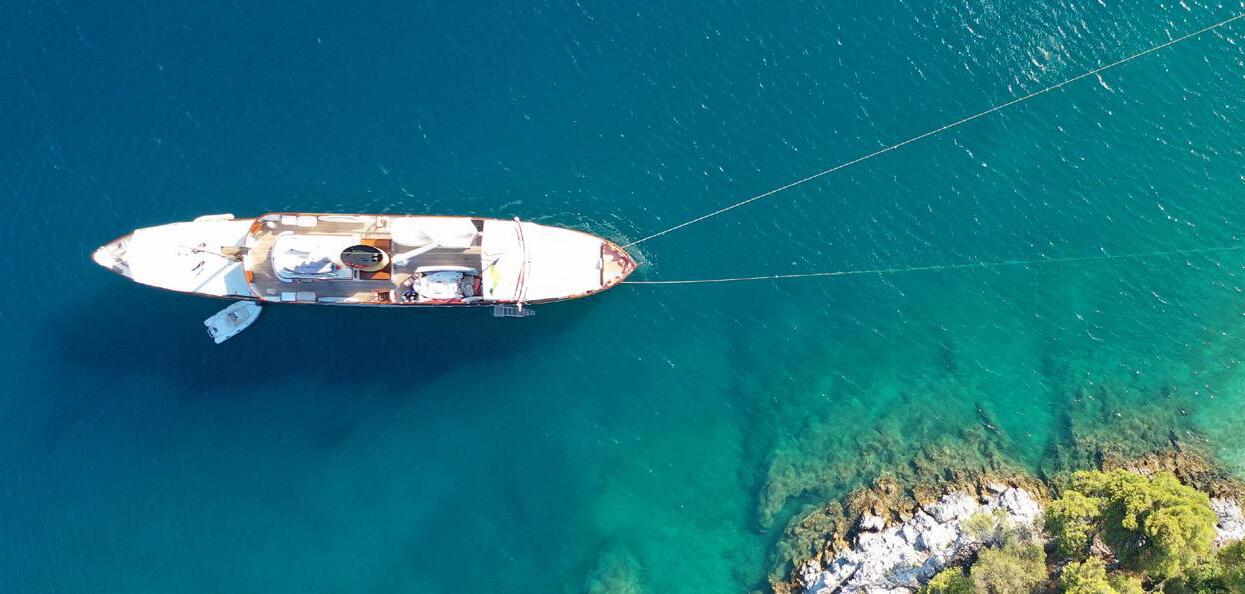
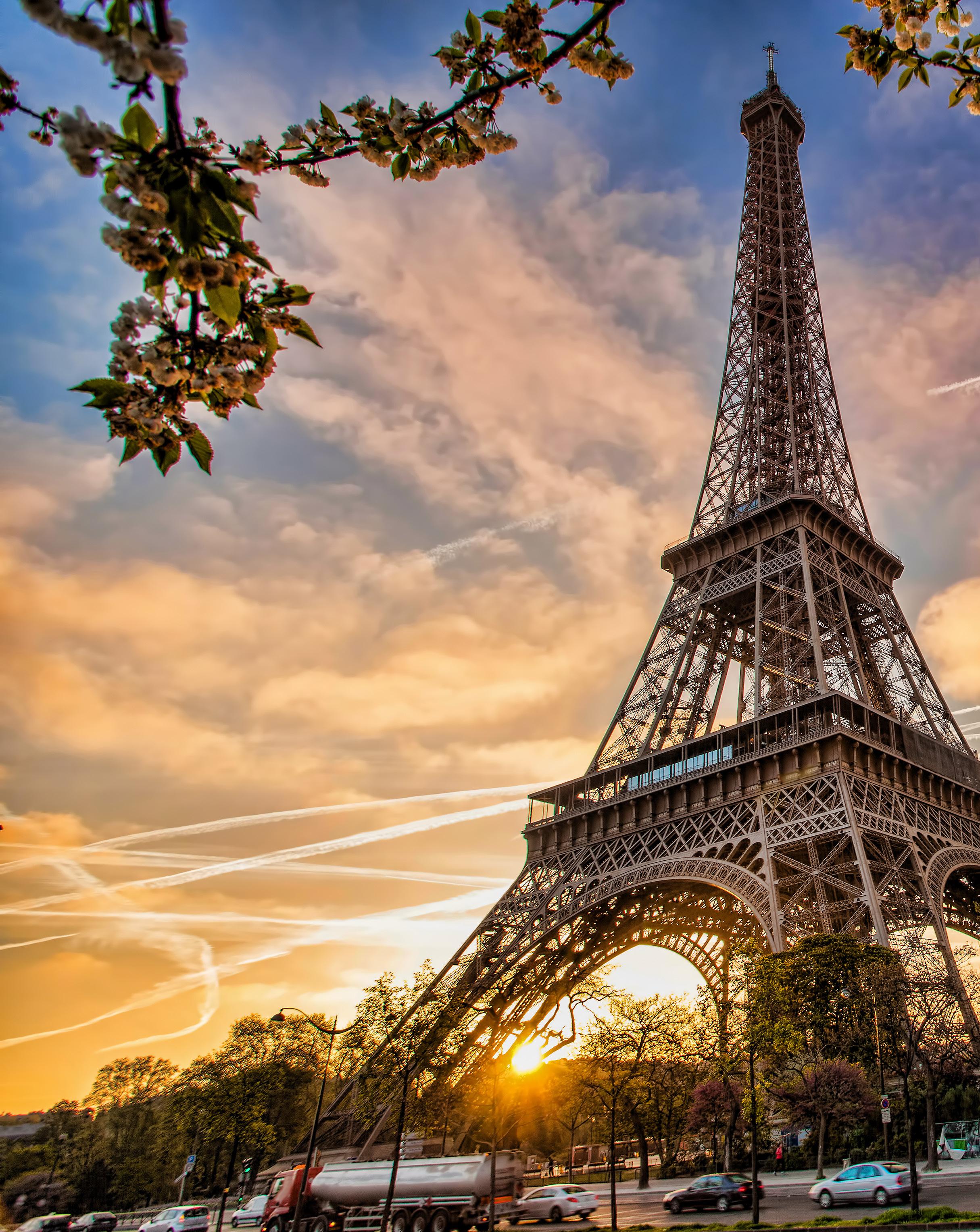
We summarise the must-see sights and essential experiences for the ultimate Parisian weekend away, starting with a trip to watch footballing royalty, Lionel Messi, play for Paris Saint-Germain
WRITER: ED BUDDS
Numerous monikers have become synonymous with Paris, a romanticised destination often referred to simply as the City of Love, City of Light or the fashion capital of the world.
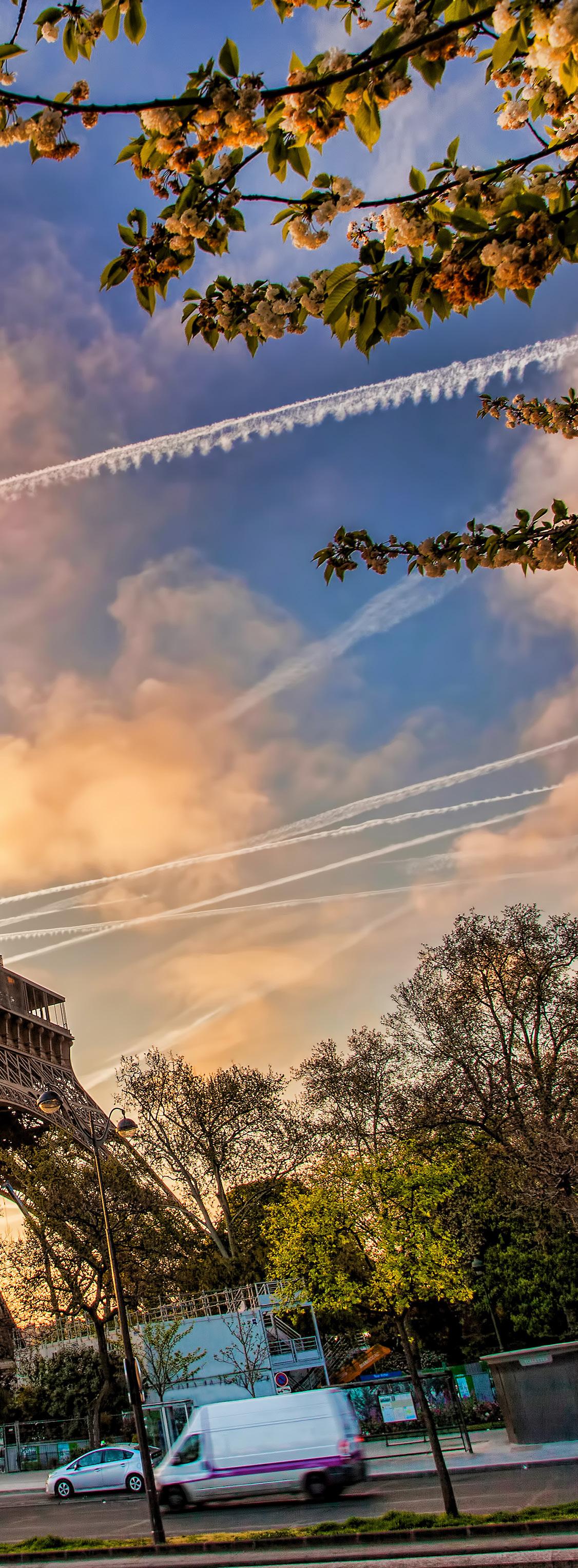
Year after year, hordes of visitors travel from all corners of the globe to visit its majestic cultural landmarks such as the Eiffel Tower, the Louvre, the Arc de Triomphe, and Notre Dame, which have transcended the status of simple tourist attractions, bleeding into the very fabric of popular culture and French national iconography.
Since the summer of 2021, however, one tourist attraction has trumped all else: the chance to witness the greatest footballer of all time, live, in the flesh.
Lionel Messi, widely regarded as the best to play the beautiful game, arrived at Paris Saint-Germain (PSG)France’s dominant domestic champions - after spending his entire career to date at Barcelona, a club so identifiable with the Argentinian maestro that most assumed he would never leave.

Now ending his second season with the club, Messi has captivated countless adoring onlookers at PSG’s state of the art stadium, Le Parc des Princes, located in the southwest of the French capital inside the 16th Arrondissement.
Back in December last year, at the 2022 Qatar FIFA World Cup, Messi led his beloved Argentina to glory, lifting the trophy and ticking the last box of his illustrious career, and in the process securing his legacy as one of the most supreme, elite athletes throughout the entirety of sporting history.
Now in the twilight of his career, many fans are making the pilgrimage to Paris to watch this wondrous wizard play what will inevitably be the beginnings of his final, glorious footballing swansong.
The French monarchy might have been formally abolished with the swift slice of a guillotine back in 1793, but for now, Paris has a new king, and his name is Lionel Messi.
However, if football isn’t your idea of an ideal way to spend a weekend getaway, Paris offers a diverse selection of activities and attractions for every variety of traveller. For example, indulge in the sprawling mass of bars and restaurants and immerse yourself in the city’s famous café culture, with tables and chairs spilling out onto the street in quintessentially Parisian style. No matter your taste, Paris caters exquisitely for all.
Helipass heli tour commands you to fasten your seatbelts, take out your cameras and enjoy the air show! Departing from the Paris heliport, enjoy an unobstructed view of the city from the skies and take off with Helipass for a breathtaking 45-minute tour.

Big Bus Tours helps visitors discover the City Of Light’s iconic landmarks on its hop-on, hop-off Paris Big Bus Tour! These comprehensive tours perfectly introduce the city and highlight the best photo opportunities of Paris’ iconic landmarks from the comfort of the top deck. The buses operate across a truly iconic route, stopping near all the must-see attractions.

FOR DINING WITH A DIFFERENCE...
Hard Rock Café Paris is one spot you cannot leave without visiting. Since 1991, the Hard Rock Café Paris has been the undisputed home of American culture and music, with all the classic style of the Parisian terrace paired with the crowd-pleasing comforts of American food and an array of vintage rock memorabilia to discover.




Hotel Square is the tranquil, contemporary highlight of the 16th arrondissement. Designed by master architect Roger Taillibers, the impressive building plays with natural light through its decadent curves, green granite mantle, stunning bay windows, and enticing interior patio. Dotted with astonishing works of art, dressed in noble materials and contemporary furniture, the boutique hotel invites you into a refined setting, offering the irresistible taste of a beautiful Parisian home and allowing guests to sample the authentic French way of life.
 PHOTOS© WWW.HOTELSQUARE.COM
PHOTOS© WWW.HOTELSQUARE.COM
PHOTOS© WWW.HOTELSQUARE.COM
PHOTOS© WWW.HOTELSQUARE.COM
From jaw-dropping coastlines to swashbuckling tales of smuggling and scandal, we explore the hidden wonders of the English Riviera
WRITER: PHOEBE HARPER
Home to the Queen of Crime herself and the illicit liaisons of famous playwright Oscar Wilde, South Devon is a land rich with intrigue. Its dramatic coastline of crumbling cliffs and secluded coves holds rich legacies of smuggling and seafaring, and before the madding crowds of summer arrive, this small portion of England is the region’s best-kept secret.
Before our journey takes us further north to the horseshoe-shaped bay of the English Riviera, a sense of seclusion is felt keenly in the small hamlet of Dittisham, a quiet riverside haven of winding lanes and old stone cottages packed cheek-by-jowl sloping towards the water’s edge.
As evening falls, the bubblegum pink Ferry Boat Inn, known to its loyal crowd of locals as the ‘FBI’, delivers the comforting pub ware of vinegar-drenched scampi and chips overlooking the placid waters of the River Dart. Although shrouded in darkness, across the water stands the whitewashed Georgian mansion of Greenway, the holiday home of Devonshire resident and prolific author, Agatha Christie. From the riverbank, the Greenway ferry promises to deliver you to the sloping, manicured lawns of the self-proclaimed ‘dream home’ of the best-selling novelist of all time, where she would come to escape the tales of murder, mystery and scandal that earnt her fame.

Just one mile from the river’s edge, I find a free coupon for the Greenway ferry as a welcome gift in the hamper left at our accommodation that night – a shepherd’s hut hidden away amongst a tree-shrouded valley. Although joined by four other huts, an authentic American airstream, and four vast treehouses towering amongst the woodland above us, the immediate peace of the valley justifies the moniker of Dittisham Hideaway. With the natural walls of the glade dampening all noise, save for the trill of birdsong and the crackle of our fire pit, we sip the token Devon sloe gin and toast marshmallows while loading up the wood-fired hot tub with a generous supply of logs under an inky canvas of sky
littered with stars.
The bustle of nearby Dartmouth the following morning comes as a shock after a night in the Hideaway, where we explore the castle perched dramatically on its promontory as the centuries-old guardian of the Dart Estuary, and walk along the cliffside where the English Channel bleeds into the Dart. Wherever you are in Devon, it is only a matter of time before you are drawn to the sea.
Along narrow roads that are constantly winding and climbing, we venture north to the English Riviera, an area demarcated by the three towns of Brixham, Paignton, and Torquay. We head towards the latter and its quieter, more secluded easterly neighbour of Babbacombe Bay. In the same way that smugglers of yore once chose this quiet arc of shingle to transport their illicit wares beyond the gaze of the coastguard of Torquay, coating the hooves of donkeys in leather shoes to carry them up the cliffside as quietly as possible, so too do we come here to escape the commotion of the larger resort towns.
We find the Cary Arms & Spa, the ‘Inn on the Beach’, nestled at the foot of the cliffside, its whitewashed walls and red-tiled roof resplendent in late afternoon sunshine. The inn itself is steeped in history, its thick stone walls and nautical furnishings a testament to the rich maritime legacy of Babbacombe. With the building dating back to 1662, it stands in front of the pier where fishermen congregate, proud in the face of the wind-whipped waves. Rising behind the hotel, the clusters of small fishermen’s cottages that first established Babbacombe as a settlement cling to the hillside, as if in resolute defiance of being swept away by the sea.

After a warm welcome in reception and an equally welcoming introduction to the hotel’s valet service as an alternative to navigating the unforgivingly steep road, we are shown to our self-catering cottage on the hill. With a balcony view showcasing the breathtaking panoramas of the sweeping sea, each window offering a glimpse of a constantly changing drama across a natural stage of shifting clouds and sunlight, Bay Cottage occupies an idyllic position on the cliffside.
A traditional 19th century stone cottage, its tasteful interiors showcase an aesthetic mixture of contemporary and antique furnishings. Classical art adorns the walls while bookcases loom, inviting exploration on the sumptuous velvet sofa. A crystal decanter of sloe gin glistens on the sideboard, which exudes the smell of freshly polished wood. In the bathroom, a round bathtub awaits with a full and uninterrupted sea vista.
Just a moment’s walk from the main hotel building along the South West Coast Path, we visit the hotel’s famous spa. While many throng to these coastal waters for wild exploits of coasteering and paddleboarding, we seek our
water cure in the hydrotherapy pool, unknotting the muscles of a long drive under tropical rain showers and saunas, and bracing the sea breeze on the balcony over herbal teas while swaddled in white flannel robes. Ahead of dinner in the main restaurant to sample the hotel’s speciality of fresh seafood mixed with local seasonal ingredients, the firelit ambience of the residents’ lounge is like stepping into an Agatha Christie novel. Huge tomes wait on coffee tables, a couple plays chess in the corner, and whiskey is sipped from crystal tumblers as polished billiard balls clink from the traditional table in the adjoining room. The lounge is lamplit and hushed inside as a strong sea wind howls and waves slap the rock beyond the window before we feast on sumptuous fresh scallops and an unforgettable oven baked hake, generously drizzled in a basil pesto sauce next door. On our sojourn by the sea, sleep comes easily.

After the Sunday papers thud gently onto the hallway’s smooth

floorboards and breakfast is taken in the conservatory overlooking the sea at the Inn, we enjoy the views of the coastline in resplendent sunshine. We keep our eyes peeled from the dolphin lookout point for the pod that occasionally visits the bay, and the Inn’s most famous visitor - a curious seal named Sammy, who is such a regular that the bar inside even has an ale named after him.
Today, we see only the waves slapping against the pier, whipped by the wind to discourage the local fisherman as the red cliffs soar beyond. Defined by its colourful mosaic of limestone and sandstone, this stretch of coastline is a UNESCO Global Geopark, one of just seven in the UK. It is staggering to think that parts of this exposed rock are 300 million years old, owing to the area’s ancient history. Indeed, it is in nearby Torquay where the limestone chambers of Kents Cavern once offered up their secrets to reveal the earliest evidence of human existence in Britain.
The sandstone that has stood for millennia is now perilous, ripe with
landslides as storms and seas lay claim to the land. Meeting with our local walking guide, Pat, he directs our gaze to a lone house standing on the cliff edge. Until 2013, the house had been joined by a neighbour, bought by its owners for an extremely reasonable price at a blind auction, before a landslip sent it plunging 150 feet into the sea, turning the waters red just a few months later.
Pat continues to guide us through the area’s history, taking us back to the Victorian era when the Riviera was in its heyday. He regales us with tales of local celebrity criminal, John ‘Babbacombe’ Lee, who later became famed as ‘the man they could not hang’, and the spot where Queen Victoria’s nanny once lived, which has now been rebuilt as the local public toilets. Queen Victoria herself visited the area twice, and in 1846, described the exact scene spread out before us as, “a beautiful spot... red rocks and wooded hills like Italy, and reminding one of a ballet or play where nymphs appear, such rocks and grottoes, with deepest sea on which there was no ripple.”
‘WHEREVER YOU ARE IN DEVON, IT IS ONLY A MATTER OF TIME BEFORE YOU ARE DRAWN TO THE SEA’The Cary Arms Inn & Spa
During the Riviera’s heyday, when Victorian bathing machines graced the shoreline of neighbouring Oddicome beach and the English elite flocked here to build holiday homes in the wake of the Napoleonic War, fancying Torquay to the south of France, it became the wealthiest town in the UK. Today, that golden age lives on in pastel-hued villas lining the cliff front, Mediterranean-esque palm trees sprouting from manicured gardens, and the quaint funicular of the Babbacombe Cliff Railway.
From the top of the headland, the Jurassic Coast and the chalk cliffs of Weymouth are in clear view, while the wild and rugged Isle of Portland is discernible in the distance across Lyme Bay, home to the isolated and
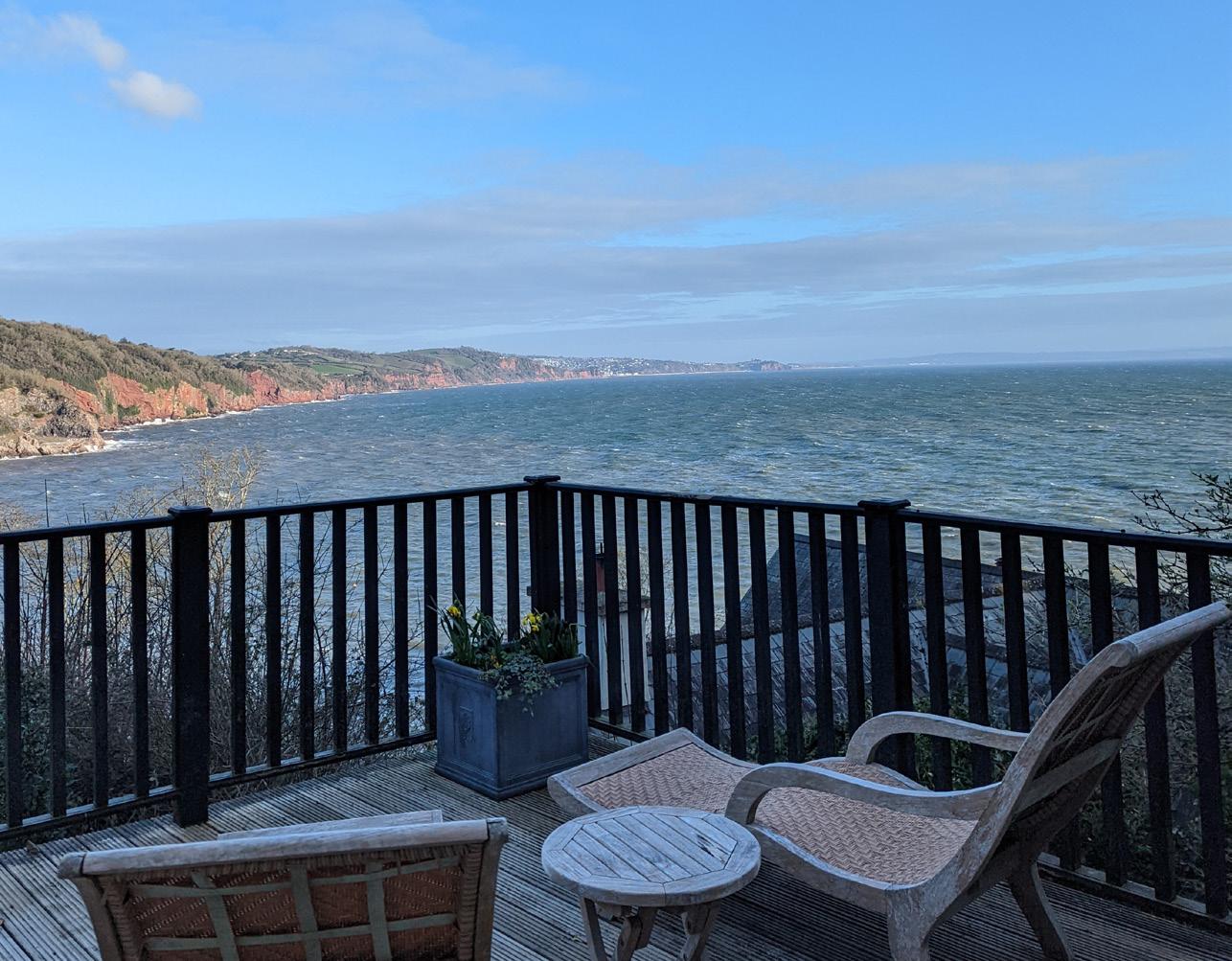
infamous prison since 1848.
Passing the local highlights, Pat enthuses about the legacy of Torquay’s most famous native, returning to the prolific Agatha Christie, and it seems entirely possible that her young mind would have been influenced by these local sights and tales.

Happy to leave behind the high street shops and fish and chip parlours of Torquay to return to the peace of the bay, we wind back down towards the hotel past Babbacombe Cliff – a private villa hidden back from the coast that once hosted another playwright of renown. It was here where Oscar Wilde fell in love with Babbacombe while staying in the house with his family, before making the poorly judged move of returning
to the house, and inviting his lover, Lord Alfred Douglas, to join him. Although Wilde’s alluring invitation worked, resulting in months of idle bliss hidden away from society, his letters luring Douglas to Babbacombe (“it is a lovely place, it only lacks you”) were to provide crucial evidence in his subsequent downfall and conviction of gross indecency.
Despite the ultimate tragedy of the tale, it is the undeniable charm of the area that is most palpable. Pausing by the shore for a final pint of Sammy’s Ale as the sea bubbles like a cauldron against the rocks of the hotel’s private beach, the history, charm and endless seduction coats the area in a layer that is as thick and indulgently inviting as Devonshire cream.
‘HOME TO THE QUEEN OF CRIME HERSELF AND THE ILLICIT LIAISONS OF FAMOUS PLAYWRIGHT OSCAR WILDE, SOUTH DEVON IS A LAND RICH WITH INTRIGUE’The view from Bay Cottage, Cary Arms Inn & Spa
ONE OF THE most remote islands on Earth is the serene subtropic of Saint Helena.

A small, secluded speck in the South Atlantic spanning just 122 square kilometres, Saint Helena is a haven of natural beauty unspoiled by its surroundings, or lack thereof, as it is isolated 1,000 miles from its nearest neighbours along the African coast.
Unsurprisingly, the island therefore only has a modest population of roughly 4,400 people, renowned for their friendliness, charm, and close-knit sense of community. Saint Helena’s most famous resident, however, is Jonathan the Tortoise,
who at 190 years old is the world’s longest-living land animal and the oldest tortoise to have ever lived.
The wirebird, meanwhile, is Saint Helena’s only surviving endemic bird, a source of national pride within its incredible inventory of unique wildlife, which inhabits the island’s multifarious landscapes and crystalline waters.
Behold this breathtaking scenery and journey through over half a millennium of Saint Helenian history, that dates back to its discovery by the Portuguese in 1502.
The heritage of Saint Helena is that of ancient fortifications and shipwrecks, the latter of which are dotted around the coast and present popular dive and snorkelling sites.
Entwined in these wrecks are tales of treasure, tragedy and loss, a
fascinating window into a past that over centuries has paved the way for the myriad habitats and aquatic species that have since emerged.
Dive site habitats range from rocky reefs with caves to cobbles and sand, all teeming with marine life and within easy reach of the wharf in Jamestown, Saint Helena’s quintessential capital city built on igneous rock in a small enclave, sandwiched between the steep cliffs that form James Valley.
Several buildings are listed in Jamestown because of their historical importance, while Main Street has been described as one of the finest examples of Georgian urban architecture anywhere in the world.
An off-the-beaten-track bucket list destination that is quite literally a world apart, there is so much to explore on Saint Helena.


IN A CHANGING WORLD , where the travel industry must adapt to challenging global situations, our mission at Outlook Travel remains the same. We will continue to showcase some of the world’s most inspiring destinations, offering real insight and comprehensive travel guides for when global mobility resumes.

The major component of the publication takes the form of our Outlook Travel Guides, providing executives, avid travellers and our existing 575,000 international subscribers with the ultimate rundown of all the major economic drivers and thriving hubs across the world, with exclusive input from tourism industry associations and stakeholders – the people who know these places the best.

You can join the vast numbers of tourism sector players enjoying the exposure we provide across our digital and print platforms with a range of options, from advertising through to free-of-charge editorials, extensive social media saturation, enhanced B2B networking opportunities, and a readymade forum to attract new investment and increase exposure.
For further information, visit www.outlooktravelmag.com

Now why not tell us yours?








































Situated in the heart of Menlyn Maine, The Maslow Time Square is Sun International’s 238-room specialist business hotel. Not only a destination for professionals, but a portal for travellers. Boasting 17 floors that o er everything from business to leisure with tempting eateries, a relaxing business lounge and 13 bespoke conference rooms.








For the perfect balance of business and pleasure, be our guest.


